interchangeable parts
description: components that are identical for practical purposes
137 results
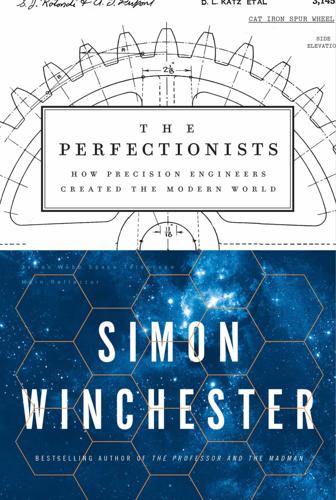
The Perfectionists: How Precision Engineers Created the Modern World
by
Simon Winchester
Published 7 May 2018
Scott, The Crack-Up, 307 fixtures (devices that hold workpiece absolutely secure), 100n, 102 flatness: of surface plates, 75–76, 119–20 of Whitworth’s billiard table, 124–25 flintlocks, see muskets, flintlock flour-milling machinery, 102 f number of lens, 219n Ford, Henry, 129, 131, 155–67, 157, 276 altruistic motives of, 155–56 early years of, 156–58 first motor car experiments of, 158–59 gauge blocks, or Jo blocks, utilized by, 169–71 mass production assembly line created by, 160–67 Royce compared to, 131, 155–56, 158–59, 165–66 Westinghouse threshing engines in origin story of, 156–58 Ford Foundation, 166 Ford Model T (Tin Lizzie), 129, 155–56, 157, 160–67 decreases in price of, 165, 167 magneto assembly for, 164–65 production line for, 160–67 Ford Motor Company, 152, 155–67 complaints about SKF bearings at, 170 Edsel, 236 gauge blocks, or Jo blocks, introduced at, 169–71 incorporation of, 131, 159 interchangeable parts essential at, 161n, 166, 170 Model A, 159–60 Model T, see Ford Model T (Tin Lizzie) precision’s role at Rolls-Royce vs., 131, 166–67 production line at, 160–65 “For want of a nail . . .” proverb, 244 foundries, electronic, 278n fountain pens, 58 France: Anglo-French rivalry over inventions and, 87n automobiles made in, 137–39 British wars with, 39n, 66, 73 decimal time in, 349n postrevolutionary Republican Calendar in, 333–34 social implications of precision as concern in, 90, 92, 117 standards for length and mass created by, 334–40; see also metric system system of interchangeable parts developed in, 87–94, 97, 98, 102 Franklin, Benjamin, 90, 222–23 French Academy of Sciences, 335 French Revolution, 59, 66, 92 frequency: Doppler effect and, 260–61 units of measurement and, 347–48 friction problem, in early clocks, 32–33, 35 Gainsborough, Thomas, 38–39 Galileo, 222, 332, 348 Galileo global navigation system, 270 Gascoigne, William, 77 Gaudy Night, 105 gauge blocks, or Jo blocks, 167–71, 169 author’s introduction to, 2–4 Ford Motor Company and, 169–71 interchangeable parts and, 170 Johansson’s invention of, 167–68 gauges: go and no-go, for ensuring cannonball fit, 87 in gun manufacture, 89, 98–99, 100 gearwheels: from Ancient Greece (Antikythera mechanism), 24–27 producing, 4–5 uses for, 5–6 wooden, in Harrison’s clocks, 32–33 Gee, 259, 262 George III, King, 36, 74n George VI, King, 194–95 Germany, turbojet-powered aircraft developed by, 179, 184, 190–91, 195 Gernsback, Hugo, 181 glassblowers, scientific, 7 Glass Menagerie, The (Williams), 255 Global Positioning System (GPS), 37, 265–74 Doppler-based navigation system as precursor of, 259–65, 267 Easton’s invention of, 260, 265–68 ever-more-precise calculations of, 272–73 freed for civilian use, 269–70 major achievements of nineteenth-century cartography checked against data from, 273n military uses of, 269 other nations’ similar systems, 270 Parkinson’s vision for, 267–68, 268 run from tightly guarded Schriever Air Force Base, 270–72, 271, 272 time data for, 352–53 GLONASS, 270 Gloster Aircraft Company: experimental aircraft powered by jet engine (Gloster E28/29, or Pioneer), 190, 191–94 Gloster Meteor fighters, 192 Goddard Space Flight Center (Maryland), 234, 250–51, 294 Gould, Rupert, 34n graphene, 298 grasshopper escapement, 33 gravitational constant, 298 gravitational waves, detection of, 20–21, 300–306 see also LIGO (Laser Interferometer Gravitational-Wave Observatory) gravity: Bramah’s lock design and, 57 clock mechanisms and, 33, 354 link between time and, 354–55 pendulum swings and, 33, 333, 349 Whitworth’s measuring machine and, 121, 122 Great Britain: Anglo-French rivalry over inventions and, 87n divergent paths of industry in U.S. vs., 114–15 trading fortunes and, 31 War of 1812 and, 81–85 wars fought by, in eighteenth and early nineteenth centuries, 39, 66–71 Great Exhibition of the Works of Industry of All Nations (London, 1851), 111–27, 112 arrangement of exhibits at, 115–16 Bramah’s “challenge lock” picked at, 112n, 124, 125–27 Crystal Palace built for, 112, 113–14 extraordinary zeitgeist of the time and, 111–13 financing of, 113 great big iron machines displayed at, 114–16, 117–18 Hunt’s concern about social implications of machines displayed at, 116–17 origin of idea for, 112–13n Whitworth’s instruments and tools displayed at, 118–23 Great Trigonometric Survey of India, 273n Greece, Ancient: astronomers from, 26n gearwheels from (Antikythera mechanism), 24–27, 36 lost-wax method in, 204 measurement of time in, 27 Greenwich Royal Observatory, Harrison’s clocks at, 30–37 restoration of, 34n winding of, 30–31 Gribeauval, Jean-Baptiste Vaquette de, 87, 89, 92, 98 Guier, William, 259–62 Gulf War of 1991, 269 guns: Blanchard’s lathe for stocks of, 101–2 both precision and accuracy crucial in making of, 105 breech-loaded single-shot rifles, 97–98 French system of interchangeable parts applied to American precision-based manufacturing of, 97–100 Johansson’s invention of gauge blocks, or Jo blocks, and, 167–68 machines first used to make components of, 98, 99–100 rudiments of mass production assembly lines in manufacture of, 161n Victoria’s opening shot in 1860 Grand Rifle Match, 107–10 see also muskets, flintlock Hall, Bishop Joseph, Works, 331 Hall, John, 97–98, 99–100, 102 handcrafting: Antikythera mechanism and, 24–25, 27 Blanc’s standardization system and, 89–90, 92, 98 eliminated in Ford’s assembly line, 165, 166–67 Japanese appreciation for, 308, 309–10, 314, 316, 319–29 machine tools vs., 35, 38, 60, 72–73, 98–99 at Rolls-Royce, 6, 131, 152–55, 165, 166 social consequences of move away from, 72–75, 89–90, 116–17 and survival of craftsmanship in France, 92 in Whitney’s gun factory, 96–97 Hanford, Wash., cleanup site, 19–20 Harpers Ferry Armory (Va.), 98, 99, 102, 161n Harrison, John, 24, 30–37, 47, 67, 105, 267n balance mechanisms in clocks made by, 33, 35 Board of Longitude prize and, 30, 31, 32, 34, 35–36 large pendulum clocks made by (H1, H2, and H3), 30–31, 32–34, 35 restoration of clocks made by, 34n sea watches made by (H4 and K1), 31–32, 34–36 testing of clocks made by, 34, 35–36, 39 winding of clocks made by, 30–31, 33, 35 Harrison, William, 35–36 Hattori, K., and Company, 311–13 Hattori, Kintaro, 310–12 Heinkel Company, 184, 195 Heinkel He 178, 190–91 Heisenberg, Werner, 212–13, 298 Die Physik der Atomkerne, 275 Herbert, George, 244n Herschel family (William, Caroline, John, and Alexander), 229–30n Hiroshima, atomic bomb dropped on, 281 Hitler, Adolf, 187, 191 Hobbs, Alfred C., 124, 125–27 Hoerni, Jean Amédée, 284–85, 286n, 287 Hooker, Sir Stanley, 139 hour: defining, 28, 334, 349 displayed by mechanical clocks, 28–29 Hubble, Edwin, 2321 Hubble Space Telescope, 229–53, 230 cost of, 232 delays in launch date of, 243n first images from (First Light), 234–35, 251 flaw in main mirror of, 234, 234–43; see also Perkin-Elmer Corporation High Speed Photometer in, 247, 248, 250 money matters and, 237n news of failure announced to press, 235–36 placed into orbit, 230–32, 233 public reverence for, 229–30 repair of, 244–51 second images from (Second Light), 251–52 size and appearance of, 232–33 teacup affair and, 238 ultimate success of, 252–53 Wide Field and Planetary Camera in (Wiffpic), 247–48, 249 Hucknall Casings and Structures plant (Rolls-Royce), 209–10, 211, 229 Hunt, Robert, 116–17 hydraulic press, 57–58 India, Great Trigonometric Survey of, 273n Individual and the Universe, The (Lovell), 215 Industrial Revolution, 39, 41, 44, 51, 73, 74n, 111, 304 integrated circuitry, 286–99 devices made possible by, 287–88 Noyce’s work in genesis of, 286, 287, 288n printing with photolithographic machines, 277, 277–78, 286–87, 294 see also microprocessor chips; transisters Intel, 288–92 ASML machines bought by, 275–76, 277, 277–78 Chandler, Ariz., fabrication plant of (Fab 42), 275–76, 277–78, 291–92 first-ever commercially available microprocessor made by (Intel 4004), 288–89, 290, 292 founding of, 288 mutual dependency of ASML and, 278 interchangeable parts, 63, 71, 105, 114, 276, 312 in Ford’s mass production assembly lines, 161n, 166, 170 for guns, 84–85, 86, 87–100 system of, developed in France, 87–94, 97, 98, 102 interferometers: classic, 300 laser, 242–43 LIGO (Laser Interferometer Gravitational-Wave Observatory), 20–21, 299–306, 303, 305 null connector as, 240–41 internal combustion engine, 158 aircraft powered by, 178–213; see also jet engines International Astronomical Union, 344 International Committee on Weights and Measures (1960), 345–46 International Metre Commission (1872), 338 International Prototype Kilogram (IPK), 339 International Prototype Meter (IPM), 339 International System of Units (SI), 16–17n, 346 iron, 38, 39 cannon making and, 39, 41–44 Japanese handcrafted objects made of, 309–10 lathes made of, rather than wood, 61, 64 machines to manufacture pulley blocks made of, 71 smelting and forging, 40–41, 43, 49 steam engines made of, 46, 48–52 Wilkinson’s cylinder-boring technique for, 42–44, 49–52, 304–6 Iron Bridge of Coalbrookdale, 41 Ito, Tsutomi, 321–22 Jacula Prudentum, 244n James Webb Space Telescope, 231n, 294, 295, 299 Janety, Marc Étienne, 336, 337 Japan, 308–29 bamboo objects handcrafted in, 325, 326 fondness for handcrafting in, 308, 309–10, 314, 316, 319–29 Great Tohoku Earthquake and Tsunami in (2011), 322, 323–25 Living National Treasures of, 325–26 rigorous appreciation of perfect in, 308–9, 314 timekeeping traditions in, 310–11 urushi (handmade lacquerware) of, 326–28, 327 Westernization in, 310, 311 see also Seiko Japanese Railways, 313–14 Jay, John, 92–93 Jefferson, Thomas, 52 Blanc’s flintlock system and, 90, 92–94, 96 Whitney’s contract and demonstration and, 95, 96 Jet Age, inauguration of, 193 jet engines, 173–213 alloys for blades in, 200, 201, 203 Americans’ initial lack of interest in, 179 bird strikes and, 203n British public told of, 194 complexity within, 196–97 experimental aircraft fitted with, 190, 191–94 financial backing for development of, 184–85, 189 first passenger and freight aircraft with, 198–99 French forerunner of, 179 German development of, 179, 184, 190–91, 195 hot environment in, 187, 199–201 invention of, 178–94, 179; see also Whittle, Frank keeping blades cool inside, 197–98, 198, 199–203, 204, 206 manufacturing process for single-crystal blades in, 203–6 no tolerance whatsoever in making of, 206–7 power of piston engine vs., 182–83 propulsive jet of air produced by, 182, 187 Quantas Flight 32 and failure of, 174–78, 178, 196, 207–12, 208, 229 revolutionary novelty of idea for, 186 Rolls-Royce, 196–213, 205; see also Rolls-Royce jet engines single moving part in, 180 stress of takeoff and landing cycles on, 210 testing of prototypes, 187–90 turbine blade efficiency and, 198 Whittle’s eureka moment and, 182–83 Whittle’s patent and, 183–84 Jet Propulsion Laboratory, or JPL (Pasadena), 247–48, 350 Jo blocks, see gauge blocks, or Jo blocks Johansson, Carl Edvard, 3, 167–71 bought out by Ford, 170–71 gauge blocks, or Jo blocks, created by, 167–68 Johns Hopkins University: Applied Physics Laboratory (APL) at, 259–62 Space Telescope Science Institute at, 234, 251 Johnson, Claude “CJ,” 148–50, 151 Jones, Alexander, 27 Kai Tak Airport (Hong Kong), 195–96 kelvin, definition of, 346 Kiev, author photographed with Rolls-Royce outside city gates of, 133–34 Kilby, Jack, 288n kilogram, 336–40, 346–47 cast in platinum as étalon (standard), 337, 339–40, 348 now defined in terms of speed of light, 348 relationship of meter to, 336–37 see also metric system Kilogram of the Archives, 336 Klein bottle, 7n Kodak, 237n Korean Air Lines Flight 007, shooting down of, 269 krypton, standard unit of length based on, 344–45 Kyoto, temples of, 308 landscape photography, lenses for, 226 lasers, 351 in LIGO’s measuring instrument, 301, 305, 305–6 in manufacture of microprocessor chips, 293–94, 296 presumed to be precise, 242 lathes, 61–65 for gun stocks, designed by Blanchard, 101–2 invention and evolution of, 61 iron vs. wood, 61, 64 Maudslay’s improvements to, 61–65 screw-making, 63–64 for shoe lasts, designed by Blanchard, 19n, 101 slide rest and, 62–63, 64–65 latitude, determining, 30n leadscrews: of bench micrometers, 77–78 of lathes, 61, 62–63 Leica, 221, 222, 227–28 cameras owned by author, 219–20 lenses made by, 220, 224–25, 227–28 Leitz, Ernst, 222, 227 Leland, Henry, 168 length, standard unit of, 334–40 cast in platinum as étalon (standard), 336, 337, 339–40 mass in relation to, 336–37 meridian of Earth and, 334–36, 337 now defined in terms of time, 348 pendulum swing and, 332–33 redefined as wavelength of light, 342–45 Wilkins’s proposal for, 332–33 see also metric system Lenin, V.
…
Crucial to all these industries, and absolutely crucial in Henry Ford’s new automobile-manufacturing industry, was the use of interchangeable parts. It is worth noting that none of Ford’s early-model cars (the A, B, C, F, K, or N) relied entirely on its components’ interchangeability. But the Model T did, and did so in spades. Some claim that Ransom Olds was the industrialist who pioneered the use of assembly lines in the making of cars, but he managed to make industrial history confusing by not using interchangeable parts—the workers on his Oldsmobile assembly lines still filed metal pieces to make them fit. * As well as the Lincoln—and the electric starter motor, which he built after his best friend was knocked out and killed by the unexpected kickback of a large car’s starting crank
…
Metal pieces can be machined into a range of shapes and sizes and configurations, and provided that the settings of the leadscrew and the slide rest are the same for every procedure, and the lathe operator can record these positions and make certain they are the same, time after time, then every machined piece will be the same—will look the same, measure the same, weigh the same (if of the same density of metal) as every other. The pieces are all replicable. They are, crucially, interchangeable. If the machined pieces are to be the parts of a further machine—if they are gearwheels, say, or triggers, or handgrips, or barrels—then they will be interchangeable parts, the ultimate cornerstone components of modern manufacturing. Of equally fundamental importance, a lathe so abundantly equipped as Maudslay’s was also able to make that most essential component of the industrialized world, the screw. Over the centuries, there were many incremental advances in screw making, as we shall see, but it was Henry Maudslay (once he had invented or mastered or improved or in some other manner become intimately associated with the slide rest on his lathe) who then devised a means of cutting metal screws, efficiently, precisely, and fast.

The Connected Company
by
Dave Gray
and
Thomas Vander Wal
Published 2 Dec 2014
Logitech (company), Net Promoter at Logitech–Net Promoter at Logitech, Net Promoter at Logitech loose coupling, Service Contracts, Loose Coupling, Most Companies are Not Built for Agility about, Service Contracts, Loose Coupling car example, Most Companies are Not Built for Agility Lusch, Robert F., Service-Dominant Logic M machines, The Company as a Machine–Closed and Open Systems, The Company as a Machine, The Company as a Machine, Closed and Open Systems, Closed and Open Systems, Closed and Open Systems as closed systems, Closed and Open Systems companies as, The Company as a Machine–Closed and Open Systems, The Company as a Machine, Closed and Open Systems, Closed and Open Systems purpose of, The Company as a Machine Mackey, John, It Takes Trust to Build Relationships Mailchimp (company), Strategy by Discovery management, Leading from the Edge, Managing the connected company, Management is a Support System, Designing the System–Rely on Peer-to-Peer Reinforcement Whenever Possible, Balance the Individual Freedom with the Common Good, Build Slack into Central Resources to Ensure Availability, Rely on Peer-to-Peer Reinforcement Whenever Possible, Rely on Peer-to-Peer Reinforcement Whenever Possible, Operating the System, Critical Values in Complex Adaptive Systems, Symptoms, Tuning the System–The Job of Managers, Tuning the System, Information Transparency, Density, Rate of Flow, Structural Change, The Job of Managers, The Job of Managers, The Job of Managers as support system, Management is a Support System designing system for, Designing the System–Rely on Peer-to-Peer Reinforcement Whenever Possible, Balance the Individual Freedom with the Common Good, Build Slack into Central Resources to Ensure Availability, Rely on Peer-to-Peer Reinforcement Whenever Possible, Rely on Peer-to-Peer Reinforcement Whenever Possible leadership versus, Leading from the Edge operating the system, Operating the System, Critical Values in Complex Adaptive Systems, Symptoms, Tuning the System purpose of, Managing the connected company role of, The Job of Managers tuning the system, Tuning the System–The Job of Managers, Information Transparency, Density, Rate of Flow, Structural Change, The Job of Managers, The Job of Managers maneuver warfare, Three Types of Strategy Marriott International, Connecting an Internal Group at Marriott–Connecting an Internal Group at Marriott, Connecting an Internal Group at Marriott mass marketing, product saturation and, An Age of Abundance–An Age of Abundance, An Age of Abundance, An Age of Abundance mass production, Interchangeable Parts–Conflicting Constraints Lead to Rigidity, Interchangeable Parts, Conflicting Constraints Lead to Rigidity standardization and, Interchangeable Parts–Conflicting Constraints Lead to Rigidity, Interchangeable Parts, Conflicting Constraints Lead to Rigidity Maverick (Semler), Democratic Management at Semco McCarthy, Patrick D., Freedom to Experiment, The Nordstrom Way McDonald’s (company), Reducing Variety–Absorbing Variety, Reducing Variety, Absorbing Variety, Support–Balancing the Needs of Constituents, Balancing the Needs of Constituents reducing variety, Reducing Variety–Absorbing Variety, Reducing Variety, Absorbing Variety support structure, Support–Balancing the Needs of Constituents, Balancing the Needs of Constituents McIntyre, Tim, Cascading Effects Can be Initiated by Employees McKelvey, Bill, The Red Queen Race, Adaptive Tensions Microsoft Corporation, What is a Platform?
…
Smith, Adam, Dividing Work, Attractors Smith, Greg, Failure of Purpose SOA (Service-Oriented Architecture), Standards Sony, Purpose Sets the Context for Organizations to Learn, Over-Controlling the Platform SOPA (Stop Online Privacy Act), Adaptive Moves Can Create Opportunities for Others Southwest Airlines, Balancing Promise, Purpose, and Performance, Freedom to Experiment, Not Enough Autonomy Spector, Robert, Freedom to Experiment, The Nordstrom Way standards and standardization, Interchangeable Parts–Conflicting Constraints Lead to Rigidity, Conflicting Constraints Lead to Rigidity, Reducing Variety, Reducing Variety, Loose Coupling customers resisting, Reducing Variety interchangeable parts, Interchangeable Parts–Conflicting Constraints Lead to Rigidity, Conflicting Constraints Lead to Rigidity loose coupling and, Loose Coupling reducing variety by, Reducing Variety Starbucks (company), A Wake-up Call at Starbucks, A Wake-up Call at Starbucks, Something’s Happening Here, Control confidential memo leak, A Wake-up Call at Starbucks, A Wake-up Call at Starbucks, Something’s Happening Here, Control Starkweather, Gary, How Xerox Missed the PC Revolution State Department, Power in the Network Stop Online Privacy Act (SOPA),, Adaptive Moves Can Create Opportunities for Others strategy, Let a Thousand Flowers Bloom, Let a Thousand Flowers Bloom–A Portfolio of Experiments, Let a Thousand Flowers Bloom, Let a Thousand Flowers Bloom, A Portfolio of Experiments–Be Connectable to Everything, A Portfolio of Experiments, Big Bets: The Responsibility of Senior Leaders, Big Bets: The Responsibility of Senior Leaders–Be Connectable to Everything, Be Connectable to Everything, Be Connectable to Everything, Strategy by Discovery, Strategy by Discovery–Strategy by Discovery, Strategy by Discovery, Strategy by Discovery, Strategy by Discovery, Leading from the Edge–People First, People First, People First, Moral Authority being connectable, Big Bets: The Responsibility of Senior Leaders–Be Connectable to Everything, Be Connectable to Everything by discovery, Strategy by Discovery–Strategy by Discovery, Strategy by Discovery, Strategy by Discovery deliberate, Let a Thousand Flowers Bloom–A Portfolio of Experiments, A Portfolio of Experiments emergent, Let a Thousand Flowers Bloom, Let a Thousand Flowers Bloom, Strategy by Discovery, Strategy by Discovery evolving nature of, Let a Thousand Flowers Bloom for leading connected companies, Leading from the Edge–People First, People First, People First Golden Rule, Moral Authority portfolio of experiments, A Portfolio of Experiments–Be Connectable to Everything, Big Bets: The Responsibility of Senior Leaders, Be Connectable to Everything strategy decay, Strategies Don’t Last Forever strong ties, Small Worlds structural change, Structural change is necessary–Conflicting Constraints Lead to Rigidity, Conflicting Constraints Lead to Rigidity, Conflicting Constraints Lead to Rigidity, Conflicting Constraints Lead to Rigidity, Conflicting Constraints Lead to Rigidity successive approximation process, The Growth Spiral systems of systems, The Complexity Issue T Tabas, Lindsay, Balancing the Front Stage and the Back Stage tacit knowledge, Tacit and Explicit Knowledge–Learning Fields, Tacit and Explicit Knowledge, Learning Fields Target (retail stores), Every Adaptive Move by One Organization Affects Others, Net Promoter at Apple Taylor, Andy, Net Promoter at Enterprise Taylor, Bob, Cascading Effects Can be Initiated by Customers Taylor, Frederick, The Company as a Machine TED Airline, Not Enough Autonomy temperature of companies, Critical Values in Complex Adaptive Systems–Symptoms, Symptoms, Symptoms Tesler, Larry, How Xerox Missed the PC Revolution The Boy Genius Report blog, Cascading Effects Can be Initiated by Senior Executives The Elastic Enterprise (Vitari and Shaughnessy), Be Connectable to Everything The Future of Management (Hamel), Diversity Matters, It Won’t be Easy The Ghost in the Machine (Koestler), The Parable of the Watchmakers The Great Reset (Florida), The Great Reset The Living Company (de Geus), The Long-lived Company The Nordstrom Way (Spector and McCarthy), Freedom to Experiment, The Nordstrom Way The Origin of Wealth (Beinhocker), Let a Thousand Flowers Bloom The Power of Pull (Hagel and Brown), Return on Assets is Dwindling The Service Profit Chain (Heskett and Sasser), Purpose Sets the Context for Organizations to Learn, Too Much Autonomy The Seven-Day Weekend (Semler), Democratic Management at Semco The Ultimate Question (Reichheld), How Profits Can Destroy Your Company Thelonious Monk Institute of Jazz, Cascading Effects Can be Initiated by Customers Thompson, Gav, Disrupting Full-Service Telecom at O2 thou shalt not platform, Governance tight coupling, Service Contracts, Most Companies are Not Built for Agility about, Service Contracts train on track example, Most Companies are Not Built for Agility tipping point, We are Reaching a Complexity Tipping Point, Strategy by Discovery, Build Slack into Central Resources to Ensure Availability for complexity, We are Reaching a Complexity Tipping Point for emergent strategy, Strategy by Discovery for utilization of resources, Build Slack into Central Resources to Ensure Availability top-down, leader-driven change, Top-Down, Leader-Driven Change–Launch a Pilot Pod to Shift to a New Business Model, Top-Down, Leader-Driven Change, Common Threads, Pilot Pods, Launch a Pilot Pod to Shift to a New Business Model Torvalds, Linus, What is a Platform?
…
In addition, although dividing work may make the system more efficient, by dividing work into ever-more specialized tasks, we also disconnect people from the meaning and purpose of what they are doing. From their small, constrained box, people can’t see the big picture, so they must make decisions and act with a very limited perspective. Interchangeable Parts Another core idea from the age of the industrial revolution is the concept of interchangeable parts. Standardization does make it easier to mass-produce quality products. We run into problems, though, when we try to apply standards to things that inherently have a high degree of variety—for example, a customer service call. Customer problems come in all shapes and sizes, and even problems that might seem very similar on the surface can be subject to a lot of variability based on the context.

The Dawn of Innovation: The First American Industrial Revolution
by
Charles R. Morris
Published 1 Jan 2012
According to the traditional story, Whitney was the inventor of the cotton gin, which transformed the antebellum South (and unfortunately reinvigorated the institution of slavery); he was the first person to machine-produce precisely fitting interchangeable parts for muskets and was the inventor of critical new machine tools, like the celebrated Whitney milling machine. The Whitney role in military manufacturing came under withering challenge in the 1960s. The revisionists charged that Whitney’s pretension to making arms with interchangeable parts was merely a ploy to justify extensions of his contracts. Indeed, he had little idea of how to manufacture muskets at all, much less how to blaze new trails in making them.
…
While it’s true that Whitney made few contributions to machining technology, most of the extreme claims for his accomplishments were made by others, often long after his death. The traditional source for the story that he claimed to manufacture interchangeable parts appears to be itself a partial fabrication.6 While he did have a rocky start on his first musket contract, so did many other contractors. The current consensus is that Whitney was quite a competent manufacturer and one of the earliest advocates for mass production by machinery, if not expressly for interchangeable parts—in short, a respectable figure, if not the demigod of legend. My own view is that in his early career Whitney was indeed something of a flimflam man; some recent work even raises doubts as to whether he invented his cotton gin (see Appendix).
…
My own view is that in his early career Whitney was indeed something of a flimflam man; some recent work even raises doubts as to whether he invented his cotton gin (see Appendix). And I think the record supports the charge that he dangled the promise of machined interchangeable parts to gain extensions on his contracts. But it’s also true that he was a talented artisan and entrepreneur, and once he focused on actually building his weapons—about 1805, when he turned forty—he proved himself to be a good manufacturer and was regarded as such by his peers and armory officials. While it is almost impossible to trace weapon types to specific battles, there is decent circumstantial evidence that Whitney’s muskets were used by a good portion of the troops in some of the hottest infantry engagements of the War of 1812 and that they performed as expected.

Empire of Guns
by
Priya Satia
Published 10 Apr 2018
In 1813, the Connecticut contractor Simeon North made pistol locks with interchangeable parts, and in 1815 the Ordnance Department acquired the teeth to implement uniformity as a general objective. It took time, however, not least because of resistance from artisans at Harpers Ferry. In 1819, the Harpers Ferry gunsmith John Hancock Hall contracted to make a breech-loading rifle he had patented in 1811. He used dozens of gauges and much machinery, showing definitively, in 1826, that his rifles could be made with interchangeable parts—the first of their kind. Legally, arms for militias had to be made by contractors, so the War Department had Hall share his technology with North.
…
The revolutionary French government launched the Manufacture of Paris, which employed more than five thousand at its peak in thirty government-run workshops—the largest ever “crash” industrial project in Europe, aiming to produce a thousand muskets a day, six times the combined output of the ancien regime’s three armories. Uncompromising Enlightenment-minded engineers insisted on interchangeable parts production on principle, in the face of opposition from artisanal gunsmiths and arms merchants. After a year, the governing National Convention closed it, reestablishing the ancien regime “amalgam of private capitalism and statist direction.” In 1794, the Spanish government also established a factory in Oviedo, which would average more than eight hundred muskets per month by 1798.
…
At that point, thousands of guns were ordered from contractors, and construction at Harpers Ferry began. It produced its first arms in 1800, although production became regular only around 1808. Its first superintendent was a Birmingham gunsmith who maintained European-style craft practices, employing individual artisans to manufacture each part. The goal of interchangeable parts was adopted from French military traditions and guided developments, but it took time. The British government’s factory plan stalled until 1805, partly to avoid drawing artisans away from the contractors’ work in a desperate time. In the meantime, the Ordnance Office turned Birmingham itself into something of a factory.

The Technology Trap: Capital, Labor, and Power in the Age of Automation
by
Carl Benedikt Frey
Published 17 Jun 2019
Eli Whitney, Samuel Colt, Isaac Singer, and Cyrus McCormick are often viewed as the pioneers of the so-called American system of manufacturing, in which complex products are assembled from mass-produced individual and interchangeable parts. The superiority of this system was widely recognized during the 1851 Crystal Palace Exhibition in London. As one visitor observed, “Nearly all American machines did things that the world earnestly wished machines to do.… Most exciting was Samuel Colt’s repeat-action revolver, which was not only marvelously lethal but made from interchangeable parts, a method so distinctive that it became known as the American system.”7 Yet the concept of interchangeable parts was not an American invention, if it can be regarded an invention at all.
…
See also Industrial Revolution Bronx, 182 Bronx-Whitestone Bridge, 167 Bronze Age, 35 Brown, Sherrod, 291 Brynjolfsson, Erik, 303, 326, 329, 339 bubonic plague (1348) (Black Death), 67, 75 Bureau of Labor Statistics (BLS), 191 Bush, George W., 357 Bythell, Duncan, 121 California Civil Code of 1872, 359 Čapek, Karel, 74 capitalism: perceived threat to, 210; beginnings of, 70; criticism of, 342; impact of clocks on evolution of, 47; rise of, 218; Jeffersonian ideal under, 212; normal state of, 210 capitalist achievement, 294 Capitoline Hill, 40 Captain Swing riots, 130, 285 caravel construction, 50–51 Cardwell, Donald, 47, 59, 97 Carlyle, Thomas, 117 Carnegie, Andrew, 208 Cartwright, Edmund, 105, 127 Case, Anne, 255–56 Cave, Edward, 102 Celestine III, Pope, 44 cement masonry, discovery of, 37 Chadwick, Edwin, 114–15 Charles I of England, King, 54–55, 82, 86 Chartism, 137 cheap labor, slower mechanization and, 75 Cherlin, Andrew, 276, 279 Chetty, Raj, 253, 361 child labor, 103, 123, 134; as opportunity cost to education, 214; robots of Industrial Revolution, 8–9 chimney aristocracy, 89 China: admission to World Trade Organization, 281, 286; ascent of, 289; delayed industrialization in, 88; trade war with, 331 Christensen, Clayton, 354 Chrysler Building, 182 civil rights: lagging, 20; legislation, 280 Civil War (American), 75 Civil War (English), 81 Clark, Gregory, 29, 48, 60 classical civilizations, 37 clientelism, 271 Clinton, Hillary, 285 clocks, 47 Coalbrookdale Iron Company, 108 cognitive divide, 238–43 Colbert, Jean-Baptiste, 84 collective action problem, 19–20 collective bargaining, 192 college-educated citizens: activities of, 352; detachment of, 256; among Great Divergence, 258, 358; hours per day worked, 338; perceived untrustworthiness of, 278; promotion of, 350; qualified as middle class, 239 Colt, Samuel, 149–50 Columbus, Christopher, 51, 67 Communist Manifesto, 7, 63, 70, 119 competition: among nation-states, 19, 57, 89; cascading, 289 computer-aided design software, 13 computer-controlled machines, jobs eliminated by, 228 computer publishing, 247 computers: age of, 228–38; analysts in, 235; automation anxiety concerning, 183; jobs created in, 16; ranks of the affluent in, 224; revolution, 249; those who thrived in, 16; trend beginning with, 258 connectivity, 362–63 consumer products: cheapening of, 294; new, Americans’ growing appetite for, 203 containerization, 171–72 Corbyn, Jeremy, 281 Corn Laws, 267 corporate giants, 208 corporate paternalism, 200 corporate profits, 132, 244 cotton cloth guild, 88 cotton industry, 100 cotton production, mechanization of, 7 Cowie, Jefferson, 200 craft guilds, 55–57, 87 Crafts, Nicholas, 107, 329 crime, joblessness and, 253 Crimean War, 150 Crompton, Samuel, 94, 102 Crouzet, François, 70 Crystal Palace Exhibition of 1851, 147, 149 cultural phenomenon, working class as, 278 culture of growth, 77 Dactyl, 313 Da Gama, Vasco, 51, 67 Dahl, Robert, 273, 352 Daimler, Gottlieb, 166 Darby, Abraham, 108 Dark Ages, light in, 41–51 data, as the new oil, 304 David, Paul, 153, 326 Davis, James J., 175 “deaths of despair,” 256 Deaton, Angus, 8, 255 Declaration of Rights of 1689 (Bill of Rights), 79 Decree Tractor Company, 215 Deep Blue, 303 deep learning, 304 Deep Mind, 301 Defense Advanced Research Projects Agency (DARPA), 307 Defoe, Daniel, 68–69, 71, 84 democracy: legitimacy of, undermining of, 274; liberal, components of, 267; middle class and, 265–69; rise of, 265 Descartes, René, 94 Detroit, Michigan, 151, 257, 359 Devine, Warren, Jr., 153 Diamond, Jared, 64 Dickens, Charles, 117 digital communication, 360 digital industries, clustering of, 260 Diocletian, Roman Emperor, 65 disappearance of jobs, 250–52 “disciplined self” identity, 279 Disraeli, Benjamin, 112, 268 Dittmar, Jeremiah, 48 Domesday Book of 1086, 44 domestic system of production, 61, 71; downfall of, 8 Douglas, Paul H., 178–79 Drebbel, Cornelis, 52 drones, 342 Drucker, Peter F., 227 drudgery, end of, 193–98 Dust Bowl (1930s), 193, 204 Dutch Revolt, 81 Earned Income Tax Credit (EITC), 357 earnings gap, 230 economic incentive, lack of, 40 economic inequality, 22, 274, 277 economic parasites, 79 economic segregation, 356 economies of scale, factories taking advantage of, 110 Eden, Frederick, 116, 344 Edison, Thomas, 2, 52, 148, 189 education and technology, race between, 216 Eilmer of Malmesbury, 78 Eisenhower, Dwight, 307 electricity, early days of, 151 electrification, rural, 157 Electronic Numerical Integrator and Calculator (ENIAC), 230 elevator: arrival of, 14; automatic, 182 Elevator Industry Association, 182 elevator operators, vanishing of, 181, 227 Elizabeth I of England, Queen, 10, 54, 105 Empire State Building, 182 enabling technologies, 13, 227, 228 Engels, Friedrich, 70, 112, 249, 364 Engels’ pause, 131–37, 219; ending of, 287; polarization and, 266; return of, 243–48, 331; time of, 337 English craft guilds, fading power of, 87 entrepreneurial risk, 77 Facebook, 285 factory system, 8, 97, 126; annus mirabilis of 1769, 97; artisans, 98; child labor, 103, 104; coke smelting, 109; control over factory workforce, 104; cotton industry, 100; domestic industry, output growth in, 98; earlier modes of production, 97–98; economies of scale, factories taking advantage of, 110; electrification, 190, 195; Industrial Revolution, 97, 100–101; international trade, rise of, 99; inventions, 102; iron, railroads, and steam, 105–11; mechanical clock as enabling technology for, 47; railroad, arrival of, 108; rise of machines, 99–105; silk industry, beginnings of, 99; social savings of steam engine, 107; steam engine, economic virtuosity of, 107; working class, 98 Fairchild Semiconductor, 359 Fair Labor Standards Act of 1938, 200 farming: disappearance of jobs, 197, 203; mechanization of, 324; revolution, 168–69 feudal oligarchies, replacement of, 58 feudal order: political participation in, 265; rise of, 41, 62 Field, Alexander, 163, 170 Finley, Moses, 36 First Opium War, 88 Fisher, Alva J., 27 Fisher, Irving, 210 Ford, Henry, 141, 148, 167, 195, 365 Ford assembly lines, 18, 365 Ford Motor Company, 148, 199, 240 France, industrial development in, 84 Francis I, Holy Roman Emperor, 85 French Revolution, 90 Friedman, Milton, 355 Friedman, Thomas, 257 Fukuyama, Francis, 141, 264–65, 273, 343 Furman, Jason, 322 Galileo, 39, 52, 54, 94 Galor, Oded, 133 Gans, Joshua, 308 Garden of Eden, 191 Gaskell, Elizabeth, 117 Gaskell, Peter, 117–119, 135, 229, 249 Gates, Bill, 10 Gates paradox, 10, 11, 21 General Electric, 155, 157, 215, 289 General Motors assembly lines, 18 geography of new jobs, 256–63 George Washington Bridge, 167 Giffen, Robert, 132–33 gig mill, 10, 76, 86, 128 Gilded Age, 208 Gille, Bertrand, 39–40 Gini coefficient, 209, 245 Gladstone, William Ewart, 133 Glaeser, Edward, 257, 261, 263 globalization: automation, and populism, 277–85; backlash against, 365; clamping down on, 290; costs of, 366; facilitator of, 282; first wave of, 171; losers to, 21, 26; vanishing jobs and, 11 Glorious Revolution of 1688–89, 79, 82–83, 86 Golden Gate, 167 golden postwar years, 239 Goldfarb, Avi, 308 Goldin, Claudia, 213, 349 Goldin, Ian, 357 Gompers, Samuel, 279 Goodyear Tire, 199 Google, 305 Google Translate, 304 Goolsbee, Austan, 340 Gordon, Robert, 198, 202, 220, 272, 342 government regulations, 49, 137 Great Depression, 13, 143, 170, 211, 272 Great Divergence, 24; absence of economic revolution, 95; beginnings of industrialization, 94; factory system, evolution of (see factory system); Industrial Revolution (see Industrial Revolution); per capita income growth, 94; rise of the machines, 93; textile industry, Industrial Revolution begun in, 95 Great Escape, 8 “great exception” in American political history, 200 Great Migration, 205 Great Recession, 244, 284, 339, 343 Green, William, 174 Greif, Avner, 88, 92, 344 growth, culture of, 77 Gutenberg, Johannes, 47 Habsburg Empire, 85 Hammer, Michael, 326 Hansen, Alvin, 179, 342 Hargreaves, James, 102–3 Harlem, 1 Harper, Kyle, 37 Hawking, Stephen, 36 hazardous jobs, end of, 195, 198 health conditions, during Industrial Revolution, 114–15 Heaton, Herbert, 37 Heckman, James, 351 Heilbroner, Robert, 335 Hellenism, technological creativity of, 39 Henderson, Rebecca, 305, 331 Hero of Alexandria, 39 high school graduates, employment opportunities for, 237 high school movement (1910–40), 214 Himmelfarb, Gertrude, 268 Hindenburg disaster, 110 hinterland, cheap labor and housing of, 261 history deniers, 23 Hitler, Adolf, 12 Hobbes, Thomas, 8, 46 Hobsbawm, Eric, 7 Hoover, Herbert, 211 horseless age, 164 horse technology, 43, 163 Hounshell, David, 148, 150 household revolution, 155–56 housing, zoning and, 361–62 housing bubble, 282 human capital accumulation, indicators of, 133–34 Humphries, Jane, 103, 121 Hurst, Erik, 338 Huskisson, William, 109–10 Hyperloop, 363 IBM, 231 Ibsen, Henrik, 17 Ice Age, 64, 76 identity politics, 278 “idiocy of rural life,” 62–64 income(s): disparities of, 61; reshuffling of, 287 income tax (Britain), introduction of, 133 incubators, nursery cities serving as, 261 industrial bourgeoisie, 267 industrial capitalism, rise of, 218 industrial centers, rise of, 115 industrial espionage, 6 industrialization, first episode of, 16 industrial organization, fundamental principle of, 229 Industrial Revolution, 68, 70; alcoholism, 123; in Britain, 329; Britain’s edge during, 19; British income tax, introduction of, 133; capital share of income, 131–32; child labor, 123, 134; children as robots of, 8–9; classic years of, 113; closing decades of, 138, 266; conditions of England question, 116–25; consumer revolution preceding, 68; cotton yarn manufacturing at dawn of, 100–101; divergence between output and wages, 131; domestic system, description of, 118; economic consequences of, 17; Engels’ pause, 131–37; engine of, 73; Englishmen left off worse by, 364; factories existing before, 94; gig mills, 128; golden age of industry, 118; government regulation, 137; hand-loom weaver, as tragic hero of Industrial Revolution, 121; health conditions, 114–15; human capital accumulation, indicators of, 133–34; labor income share captured, 114; industrial centers, rise of, 115; jobs created by, 16; key drivers of, 342; labor unions, bargaining power of, 137; Lancashire riots, 125, 127; leading figures of, 70; literacy rates, 134; Luddites, 125–31; machinery question, concerns over, 116; machinery riots, 127, 130; macroeconomic impact of, 94; material living conditions, decline of, 114, 120–21; mobility of workers, 122; obsolescence of worker skills, 124; origins of, 6, 80–91; political situation of workers, 129; reason for beginnings in Britain, 75; recipients of the gains of, 113; standard of living issue, 121; steam power, impact of on aggregate growth, 136; symbolic beginning of, 97; tax revenue, 133; technical change during closing decades, 139; technological progress, attitudes toward, 112; trajectory of inequality in Britain during, 217; true beginnings of, 100; unemployment, 113, 117, 125; victims of, 9; Victorian Age, machinery critics of, 119; wave of gadgets, 330; working poor, 113 inequality: age of, beginnings of, 62; Neolithic rise in, 63 inflation, 294 information technology, first revolution in, 47 inner-city ghettos, problems in, 258 innovation, 257; nurseries for, 261 innovation gap, 352 in-person service jobs, 235 inspiration without perspiration, 51–59 installment credit, 159, 167 institutional divergence (colonial Europe), 81 Intel, 359 interchangeable parts: concept of, 149; pioneering of, 74 International Labour Organization (ILO), 181 International Monetary Fund (IMF), 245 international trade, rise of, 67, 69, 99 Internet of things, 22 internet traffic: spread of, 328; worldwide, 303 inventions: agriculture, 54, 62; assembly line, 141, 365; barometer, 52, 59; bicycle, 165; camel saddle, 77; carding machine, 102; of classical times, 39; coke smelting, 108; electric starter, 166; iron, 36; light bulb, 2; mariner’s compass, 50; movable-type printing press, 47; nailed horseshoe, 43; navigable submarine, 52; personal computer (PC), 231; power loom, 105; spinning jenny, 102; steam digester, 55; steam engine, 52, 76; stirrup, 43; stocking-frame knitting machine, 54, 76; submarine, 73; telescope, 59; transistor, 231; typewriter, 161–62; washing machine, 27; water frame, 102; waterwheel, 38; wheel, 35 Iron Age, 35 iron laws of economics, 206 James I of England, King, 52 Japan, ascent of, 289 JD. com, 313 Jeffersonian individualism, 200 Jenkinson, Robert, 2nd Earl of Liverpool, 130, 289 Jerome, Harry, 13, 154, 198, 328 job demand, creation of, 262 Johnson, Lyndon, 184 Joyce, James, 16 Kaldor, Nicholas, 5, 205 Kasparov, Garry, 301 Katz, Lawrence, 135, 213, 245, 349 Kay-Shuttleworth, James, 117, 229 Kennedy, John F., 183 Kettering, Charles, 166 Keynes, John Maynard, 332, 334 King, Gregory, 68 knowledge work, 235, 259 Komlos, John, 115 Korea, ascent of, 289 Korean War, 180 Krugman, Paul, 12 Kuznets, Simon, 5, 206–7 Kuznets curve, 207, 212 labor, division of, 228 labor multiplier, 347 Labor Party, rise of, 268 labor productivity, gap between worker compensation and, 244 labor unions, 212; bargaining power of, 201, 277; legalization in Britain, 190 laissez-faire regime, 25, 267 lamplighters, 1–2 Lancashire riots of 1779, 90 landed aristocracy, 83 Landes, David, 9, 112, 118, 134, 343 Land-Grant College Act of 1862, 364 Latin Church, oppression of science by, 79 laundress, vanishing of, 27, 160 Lee, William, 10, 54 Lefebvre des Noëttes, Richard, 43 Leonardo da Vinci, 38, 51, 73 Leontief, Wassily, 20, 338, 343 Levy, Frank, 237, 302, 323 liberal democracy, components of, 267 Lindert, Peter, 61, 68, 114, 207, 211, 269, 271 literacy, demand for, 76 Liverpool-Manchester Railway, 109 lobbying, corporate spending on, 275 Locke, John, 83 Lombe, John, 52, 99–100 Lombe, Thomas, 6, 100 London Steam Carriage, 109 longshoremen, vanishing of, 172 Louis XIV of France, King, 84 Luddites, 9, 18, 125–31, 341; imprisoned, 20; new, 286–92; riots, 89, 92; uprisings, 265 machinery question, 116, 174–88; adjustment problems, 177; automation, employment effects of, 180; computers, automation anxiety concerning, 183; elevator operators, 181–82; musicians, displaced, 177–78 machinery riots, 9, 265, 289; absence of (America), 190; Britain, 90 Maddison, Angus, 66 Magellan, Ferdinand, 51, 67 majority-rule voting system, 270 Malthus, Thomas Robert, 4, 64, 73, 316, 345 Malthusian logic, 345 Malthusian trap, escape of, 65 Manhattan Project, 74 Manpower Training and Development Act (MDTA), 353 Mantoux, Paul, 97, 101, 126 Manufacture des Gobelins, 84 Manufacture Royale de Glaces de Miroirs, 84 manufacturing: blue-collar jobs, disappearance of, 251, 254; American system of manufacturing, pioneers of, 149; factory electrification, 151–55; interchangeable parts, concept of, 149 Margo, Robert, 135, 145 markets, integration of, 86 Marx, Karl, 26, 47, 98, 239, 364 Massey, Douglas, 256 Massive Open Online Courses (MOOCs), 354 mass production, 147–73; American system of manufacturing, pioneers of, 149; containerization, 171–72; direct drive, 153; factory electrification, 151–55; horseless age, 164; household revolution, 156; industries, 18; installment credit, 159, 167; interchangeable parts, concept of, 149; Model T, 167; unit drive, 153 Maurice of Nassau, Prince of Orange, 59 Maybach, Wilhelm, 166 McAfee, Andrew, 303, 339 McCloskey, Deirdre, 70 McCormick, Cyrus, 149, 168 McLean, Malcom, 171 mechanics, Galileo’s theory of, 53 mechanization, age of automation vs. age of, 227 median voter theories, 270 medieval Christianity, 78 mercantilism, flawed doctrine of, 83 Mesopotamia, 35 metals, discovery and exploitation of, 35 Michigan Antitrust Reform Act of 1985, 359 Microsoft, 306 Middle Ages: agricultural technology in, 42; feudal order of, 57; onset of, 41; technical advances of, 50; traditional crafts of, 68 middle class, descent of, 223–25; artificial intelligence, 228; automation, adverse consequences of, 240; cognitive divide, 238–43; computer-controlled machines, jobs eliminated by, 228; computers, 228–38; corporate profits, 244; division of labor between human and machine, 228; earnings gap, 230; Engels’ pause, return of, 243–48; golden postwar years, 239; Great Recession, 244; high school graduates, employment opportunities for, 237; industrial organization, fundamental principle of, 229; in-person service jobs, 235; knowledge workers, 235; labor productivity, gap between worker compensation and, 244; mechanization, age of automation vs. age of, 227; multipurpose robots, 242; rule-based logic, 228; Second Industrial Revolution, elimination of jobs created for machine operators during, 228; “symbolic analysts,” 235 middle class, triumph of, 218–222; agriculture, mechanization of, 189; automotive industry, 202; baby boom, 221; blue-collar Americans, unprecedented wages of, 220; child labor, as opportunity cost to education, 214; collective bargaining, 192; corporate giants, 208; corporate paternalism, 200; education and technology, race between, 216; end of drudgery, 193–98; Engels’ pause, 219; factory electrification, 190, 195; farming jobs, decline of, 197, 203; Great Depression, 211; “great exception” in American political history, 200; Great Migration, 205; hazardous jobs, end of, 195, 198; high school movement (1910–40), 214; Jeffersonian individualism, 200; Kuznets curve, 207, 212; labor unions, 201, 212; leveling of American wages, 211; machinery riots, absence of, 190; middle class, emergence of, 192, 292; national minimum wage, introduction of, 211; new consumer goods, Americans’ growing appetite for, 203; New Deal, 200, 212; public schooling, 214; Second Industrial Revolution, 209, 217; skill-biased technological change, 213; tractor use, expansion of, 196; urban-rural wage gap, 209; Wall Street, depression suffered by, 211; welfare capitalism, 198, 200; welfare state, rise of, 221; white-collar employment, 197, 218 Middle East, 77 Milanovic, Branko, 217, 245 mining, 194, 197 Minoan civilization, 34 mobile robotics, 342 mobility, demands for, 348 mobility vouchers, 360 Model T, 167 modern medicine, rise of, 22 Mokyr, Joel, 19, 52, 76–77, 79 Moore’s Law, 107, 301, 304 Moravec’s paradox, 236 Moretti, Enrico, 258, 262–63, 360 Morgan, J.
…
Some of the noblest exertions of the human mind have been set in motion by the necessity of satisfying the wants of the body.”3 A number of examples of technological developments since the Industrial Revolution that conform to this view spring to mind, including the Manhattan Project, set up by the U.S. government to develop an atomic bomb before Nazi Germany could do so; the steam engine developed by Thomas Savery to pump water out of British coal mines; and the interchangeable parts pioneered by Eli Whitney to “substitute correct and effective operations of machinery for the skill of the artist which is acquired only by long practice and experience; a species of skill which is not possessed in this country to any considerable extent.”4 To return to the preindustrial world, most demand-driven explanations of the lack of preindustrial growth tend to emphasize the fact that labor-saving technologies, which allow us to produce more with less, make economic sense only if capital is relatively cheap compared to labor.

Power and Progress: Our Thousand-Year Struggle Over Technology and Prosperity
by
Daron Acemoglu
and
Simon Johnson
Published 15 May 2023
The gains were evident to the British Parliamentary Committee inspecting American arms factories using interchangeable parts: “The workman whose business it is to ‘assemble’ or set up the arms, takes the different parts promiscuously from a row of boxes, and uses nothing but the turnscrew to put the musket together, excepting on the slott, which contains the bandsprings, which have to be squared out at one end with a small chisel.” This was not a deskilling technology, however. A former superintendent at Samuel Colt’s armory noted that interchangeable parts reduced labor requirements by “about 50 per cent” but required “first-class labour and the highest price is paid for it.”
…
The company that manufacturer Nathaniel Wheeler formed with inventor Allen B. Wilson started out producing fewer than 800 machines in 1853 using traditional handcraft methods. By the 1870s, it had introduced interchangeable parts and new specialized machine tools, and its annual output exceeded 170,000 units. Soon the Singer sewing machine company went further, combining interchangeable parts, specialized machinery, and better designs, and was producing more than 500,000 units per year. Woodworking and then bicycles were the next industries to be transformed by the American System of Manufacturing.
…
Levasseur, a Frenchman visiting American steel mills, silk factories, and packinghouses, put it in 1897, “The inventive genius of the American is perhaps a native gift, but it has been unquestionably stimulated by the high rate of wages. For, the entrepreneur seeks to economize human labor the more it costs him. On the other hand, when machinery gives greater productive force to the laborer it is possible to pay him more.” This was one outcome of Eli Whitney’s focus on interchangeable parts, which strove to build standard pieces that could be combined in different ways, making it easier for unskilled workers to produce guns. Whitney himself described his objective as “to substitute correct and effective operations of machinery for that skill of the artist which is acquired only by long practice and experience; a species of skill which is not possessed in this country to any considerable extent.”

About Time: A History of Civilization in Twelve Clocks
by
David Rooney
Published 16 Aug 2021
Brown, was formerly a clock- and watchmaker and, in the opinion of one engineer who trained in Brown & Sharpe’s machine shops in the 1870s: deserved greater credit than any other man for developing and making possible the great accuracy and the high efficiency of modern machine practice and in making it possible to manufacture interchangeable parts . . . I know of none who deserves a higher place than, or who has done so much for the modern high standards of American manufacturers of interchangeable parts as[,] Joseph R. Brown.17 That engineer was Henry Leland, founder of Cadillac, who introduced interchangeable parts to the automotive industry. With the mass production of the later nineteenth century came mass consumption, and mass marketing sold the products of manufacturing to an ever wider public.
…
The American System, as the world came to know it, took two ideas—standardized, interchangeable parts, and the use of special-purpose machine tools to replace skilled human labor—and unlocked the door for repeatable mass production of complex products as diverse as guns, sewing machines and typewriters. But for this new world of mass production to grow and flourish, a new breed of heavy, highly precise specialist machine tools would be needed. The development of American machine tools in the 1860s and 1870s, suitable for widespread use in manufacturing high-precision and interchangeable parts, followed a similar pattern to the British developments exactly a century earlier which brought the factory system into existence and kick-started an industrial revolution.

Arriving Today: From Factory to Front Door -- Why Everything Has Changed About How and What We Buy
by
Christopher Mims
Published 13 Sep 2021
Along with clocks and pocket watches produced by the same company, they were among the first widely available timekeeping devices in the world to be made from interchangeable parts. By the 1870s, stopwatches were common at horse races and sporting events, and they were also used in the military to time artillery shots. But it was Taylor and his disciples who would bring these instruments into the factory. Mass production and interchangeable parts made these devices widely available and also eventually drove universal adoption of the system of scientific management. In later years, scientific management would come to be so closely identified with the stopwatch that men in suits skulking about factory floors, stopwatches and notebooks in hand, were treated with open hostility by some workers.
…
Steel’s unique properties mean it can be cast into any shape, then machined to incredibly fine tolerances. Steel tools and steel measuring devices in the hands of skilled and obsessive craftsmen could yield truly interchangeable—and durable—parts. Interchangeable parts could then be produced in massive quantities. Eventually, Henry Ford borrowed the idea of the conveyor belt from slaughterhouses, where carcasses were carried from one worker to the next on overhead hooks, and married it to the system of interchangeable parts he had already borrowed from other automakers. On October 7, 1913, Henry Ford’s first assembly line clattered to life in the company’s urban Highland Park, Michigan, factory.
…
When Taylor entered the machine shop, a transition was underway in which managers of variable backgrounds were being replaced by engineers granted the responsibilities of management. Engineering itself was just becoming an accredited profession, and as the scientific method was applied to the products of engineering, so too were engineers primed to apply it to the management of the humans who worked with machines. In an age in which the use of interchangeable parts was not yet universal and the assembly line was just getting started—that is, the age before Ford’s system of mass production had taken over the world—it was often the case that every complicated machine was different from every other and had to be constructed by hand. The speed at which people worked was the biggest bottleneck to productivity and revenue.

Cheap: The High Cost of Discount Culture
by
Ellen Ruppel Shell
Published 2 Jul 2009
A tireless self-promoter, he managed to take and get credit for being the first to mechanize gun manufacture through the use of interchangeable parts, a distinction for which he is known to this day. Unfortunately for schoolchildren everywhere, this distinction was unearned. As one scholar put it, “Except for Whitney’s ability to sell an undeveloped idea, little remains of his title as father of mass production.” The real hero here was Simeon North, a steady and humble maker of scythes and other small agricultural implements who pioneered both interchangeable parts and its corollary, mass production. Using a manufacturing technique that would later be linked to efficiency expert Frederick Winslow Taylor, North broke down the gun-building process into a series of basic tasks and distributed the work among a group of semiskilled laborers.
…
North not only fulfilled the terms of his contract within his deadline, but was awarded another one to produce an additional twenty thousand pistols, the components of which were “to correspond so exactly that any limb or part of one pistol may be fitted to any other pistol of the twenty thousand.” The first contract known to stipulate interchangeable parts, it was a resounding step in the inexorable march toward low price. WHITNEY’S FAMOUS GIN, though not the font of mass production he claimed, nonetheless played a critical role in lowering the price of textiles. The gin separated cotton fiber from seed, cleaning more cotton in minutes than a battalion of humans could in a day.
…
“Old Man,” high/low pricing Hitchcock, Alfred H & M home construction Home Depot Home Shopping Network Homo economicus economic model hotel industry Hounshell, David Household Registration Law (China) Hu Jindou Hull, Brent Humphrey-Hawkins Act Humpty Dumpty hyperbolic time discounting IKEA advertising by alliances with not-for-profits bookcase catalog designing to price de-skilling of labor flat packing forestry industry and number and location of stores suppliers to illusion of objectivity imports Chinese (See China) Japanese and Asian, in 1960s, markdowns of shrimp income declines in real income, early 2000s, post-World War II boom years income taxes, under Eisenhower and Kennedy India inelastic goods and services inflation of 1970s, CPI, in 2007-2008, Feds targeting of employment to fight during World War II, Ingka Holding innovation In Search of Excellence (Peters) instant rebates insula interchangeable parts International Herald Tribune inventory management iPhone iPod Ireland Irish potato famine “Is This the Worlds Cheapest Dress . . .” (Wilson) J. C. Penney Japanese imports John Wanamaker & Co. Jones, Lee Jonze, Spike Jordan, Julie Journal of Economic Behavior and Organization Journal of the Academy of Marketing Science just-in-time distribution K.

Behemoth: A History of the Factory and the Making of the Modern World
by
Joshua B. Freeman
Published 27 Feb 2018
It was a long road to enable such complicated machinery to be produced on a mass scale. Fordism built on two manufacturing innovations, interchangeable parts and continuous flow. Until the early nineteenth century, products with interacting metal parts, like guns or clocks, were individually made by skilled artisans, who spent a great deal of time fitting together parts, filing and adjusting them to make sure they worked together. No one finished product was exactly like the next. The standardization of parts occurred first in the United States. Generally, introducing interchangeable parts initially increased the cost of production, since it required a huge investment in specialized machines, tools, jigs, and fixtures and a great deal of experimentation to achieve the tolerances that made it possible to assemble a product from a pile of parts without custom fitting.
…
Generally, introducing interchangeable parts initially increased the cost of production, since it required a huge investment in specialized machines, tools, jigs, and fixtures and a great deal of experimentation to achieve the tolerances that made it possible to assemble a product from a pile of parts without custom fitting. The key innovations took place before the Civil War in New England armories. The military greatly valued the ease of repair allowed by interchangeable parts and cared less about costs than private manufacturers. “Armory practice” slowly spread to the making of clocks, sewing machines, typewriters, agricultural equipment, bicycles, and other civilian products.4 American conditions promoted standardization and interchangeability. A mass market existed that justified heavy capital investment and that was hard to take full advantage of without uniformity.
…
In 1855, 400,000 brass clocks were produced in the United States. During the Civil War, three million rifles were used.5 A shortage of skilled workers and relatively high wages made it expensive and sometimes impossible to produce complex products in large quantities using traditional artisanal methods. With interchangeable parts, skilled workers were still needed to build specialized machinery and tooling, but less skilled workers could churn out parts and assemble them.6 None of this was easy to achieve. The Singer Manufacturing Company, one of the most celebrated manufacturers of its day, illustrated the challenge.

Capitalism in America: A History
by
Adrian Wooldridge
and
Alan Greenspan
Published 15 Oct 2018
The new technology spread rapidly across New England: by 1820, 86 firms were using 1,667 power looms while traditional spinning mills in Philadelphia and Rhode Island were forced to shut up shop.10 Production boomed from 4 million yards of cotton cloth a year in 1817 to 308 million twenty years later.11 As well as importing the idea of the factory from Britain, the Yankees pioneered a new system of production—what Europeans called the “American system of production,” and what might better be known as the system of interchangeable parts. In 1798, Eli Whitney was given a gigantic contract for ten thousand muskets from the U.S. government. When it became clear that he could not possibly meet his deadline, he came up with the idea of mass-producing muskets with interchangeable parts. Though his idea was not original—the French had pioneered interchangeable parts for muskets in the 1780s—the Americans took it to a much higher level. In France, the parts were made by craftsmen working with hand tools.
…
Standardization brings two quick benefits: it allows you to boost the productivity of relatively unskilled workers by simplifying once-complicated tasks, and it allows you to reap economies of scale and scope by expanding rapidly. Having established its lead as a manufacturing power in the nineteenth century by taking the principle of interchangeable parts further than European countries, and having then turned itself into the arsenal of democracy by taking the principle of standardization further than anyone else in the production of tanks and ships, America consolidated its position as the world’s most affluent society by taking standardization to new levels in old industries, but also applying it to new areas, such as building houses and serving food.
…
South, 80, 89 1850–2000, 297, 297 1865–1914, 93–94, 95–96, 157, 165 1924–1930, 191–92, 194, 217–18 1930–1970, 285, 297 1970–2000, 345–46 Immigration Act of 1924, 191–92, 436 Immigration and Naturalization Service (INS), 93–94, 297 “implied powers,” 65 imports, 34, 55, 231, 233 U.S., by country of origin (1971–2016), 370, 370–71 U.S., steel, 312, 314–15, 315 incarceration, 398–99 income taxes, 25, 159, 184, 186, 251–52, 268, 329, 427 industrialization, 45–46, 64, 169, 427 Industrial Revolution, 15, 45, 402, 434 industrial unrest, 171–76 industrial vs. agrarian visions of America, 61–68 inequality, 168, 169–70, 295 inflation, 161, 300, 306, 307, 327, 377 information revolution, 16–17, 55=57 infrastructure, 244, 274, 390, 394–95 “installment buying,” 212 “institutional voids,” 132 integrated circuits, 351 integrated national market, development of, 212–16 Intel, 330, 351, 353 intellectual property rights, 8 interchangeable parts, 71–72 interest rates, 42, 235, 236 internal combustion engine, 103–4, 198–99 International Harvester, 144–45 International Monetary Fund (IMF), 229, 278, 377, 382 Internet, 353–56 interstate commerce, 166 Interstate Commerce Act of 1887, 166 Interstate Commerce Commission, 166, 167 interstate system, 286 Iran-Contra affair, 326 Iraq War, 267, 369, 370, 438 IRS (Internal Revenue Service), 259–60, 334 Irving, Washington, 40 isolationism, 187, 230, 343–44 IT revolution, 348–56, 402–3 Jackson, Andrew, 16, 25, 55, 68–69, 157, 267, 415 James, Henry, 182 Japanese management culture, 314, 344–45 Japanese manufacturing, 314, 316–17, 320–21 Jarvis, Howard, 310 Jay, John, 62 jazz, 203, 215 Jazz Singer, The (movie), 194 Jefferson, Thomas, 5, 8, 9, 34, 40, 43, 46, 61–67, 75 Jell-O, 92 Jensen, Michael, 337 Jiang Zemin, 371 job displacement, 21–22 Jobs, Steve, 323–24, 353, 439 Johnson, Andrew, 158 Johnson, George, 208–9 Johnson, Howard, 197 Johnson, Hugh, 255, 256 Johnson, James Weldon, 215 Johnson, Lyndon B., 25, 248, 302, 372 Great Society, 25, 303–5 Johnson & Johnson, 391 Johnson Wax, 320 Jolson, Al, 194 Jordan, Wilbur, 364 Josephson, Matthew, 170 Joule, James Prescott, 104 Journal of Commerce, 16, 55 J.P.

Evil Geniuses: The Unmaking of America: A Recent History
by
Kurt Andersen
Published 14 Sep 2020
The inventor and nail manufacturer Jefferson, who’d been excited for years about the prospect of interchangeable parts, was wildly enthusiastic. Not long after the faked demo, he wrote a letter of introduction on Whitney’s behalf to the governor of Virginia, his protégé James Monroe. Whitney “has invented moulds & machines for making all the pieces of his locks so exactly equal,” the president wrote, and thus “furnishes the US. with muskets, undoubtedly the best they receive.” None of that was true. In fact, Whitney wouldn’t deliver any muskets to the government until 1809, nine years later, and interchangeable parts weren’t perfected until after his death.*1 Whitney was absolutely honest when he admitted in 1812 that the whole point of using identical, interchangeable parts to make things in factories would be to render old-fashioned craftspeople obsolete—that is, “to substitute correct and effective operations of machinery for the skill of the artist.”
…
Eli Whitney also happens to be a fabulous case study of the overenthusiasm and overpromising that surround technological progress—especially at moments of revolutionary economic change, such as the early nineteenth and early twenty-first centuries. We learn in school that Whitney came up with another, more foundational piece of the industrial revolution: manufacturing things out of standardized bits and pieces, interchangeable parts, from gears and levers then to Ethernet plugs and semiconductor chips now. Coming off the success of the cotton gin, young Whitney convinced the new U.S. government that he was their man to mass-produce ten thousand muskets, even though he knew nothing about making guns. Two years later, after failing to meet his contractual deadline, he went to Washington to keep his remorseful buyers on the hook.
…
Two years later, after failing to meet his contractual deadline, he went to Washington to keep his remorseful buyers on the hook. His state-of-the-art musket was taking a bit longer than expected to get right, he told President Adams and President-elect Jefferson and the secretary of war, because it would consist entirely of fantastic new interchangeable parts, meaning that manufacture would be cheaper and faster, and repair easier. He spread a hundred metal pieces on a tabletop. Sirs, here before you are all the ordinary parts from ten of my new gunlocks, he explained. Hand me one of each, any you wish, at random, and from those, using only a screwdriver, I shall assemble a working apparatus!

Propaganda and the Public Mind
by
Noam Chomsky
and
David Barsamian
Published 31 Mar 2015
Sometimes that also means for a pregnancy you have to go to a hospital twenty miles away and not the one that’s two miles away. The HMOs are businesses. They’re going to maximize profit. If it turns out that they can do it the way you maximize profit in a factory, by standardization and regulation and interchangeable parts, and treating people like interchangeable parts in a machine, of course they’ll do that. Also, the HMOs have quite high costs, naturally. They’re private businesses. A lot of the money goes into things like advertising, overhead, and layer after layer of micromanagement. You have to manage the doctors. If a doctor wants to do something, he’s got to get approval from what the right likes to call “pointy-headed bureaucrats,” though the term is used only for government.
…
But to talk about the U.S. model as being one of rugged individualism and entrepreneurial skills, kept away from state interference —again, it’s hard to find words to describe it. Incidentally, this goes back to the origins of U.S. history. Take the American system of mass production, of manufacturing, the big new system in the nineteenth century. The basic ideas of that were worked out in places like the Springfield Armory, where they needed interchangeable parts and careful quality control. Then it was transferred into the private sector. In fact, the Reagan administration went far beyond just protecting American industry and pouring public funds into advanced technology. It also had to overcome U.S. management failures. In the 1970s, there was a lot of concern that incompetent management meant the United States was falling behind the Japanese particularly, but the Europeans, too.

A World Without Email: Reimagining Work in an Age of Communication Overload
by
Cal Newport
Published 2 Mar 2021
The factories deploying this “craft method,” as it became known, were directly scaling up the same natural approach Karl Benz had used to assemble the first practical automobile in the late 1800s.2 After working his way from the Model A, which seated only two and cost extra if you wanted a roof, through Models B, C, F, K, and N, Ford finally arrived in 1908 at what would become his masterpiece of pragmatic conveyance: the Model T. With this new design, Ford set out to innovate not just the features of the vehicle but also the entire process by which it was constructed. The first major step in this innovation was the introduction of interchangeable parts. Drawing from techniques that had emerged originally from New England armories around the time of the Civil War, Ford reinvested profits from the early versions of this popular vehicle to engineer specialized tools that could produce car parts with enough precision to eliminate the lengthy process of filing and grinding otherwise needed to get these parts to fit together.3 As the company boasted: “You might travel around the world in a Model T and exchange crankshafts with any other Model T you met en route, and both engines would work as perfectly after the exchange as before.”4 By eliminating grinding, interchangeable parts made faster assembly feasible, but Ford still had to figure out how to get the roughly one hundred precisely engineered pieces that made up a Model T to come together into a working automobile in the shortest amount of time possible.
…
Drawing from techniques that had emerged originally from New England armories around the time of the Civil War, Ford reinvested profits from the early versions of this popular vehicle to engineer specialized tools that could produce car parts with enough precision to eliminate the lengthy process of filing and grinding otherwise needed to get these parts to fit together.3 As the company boasted: “You might travel around the world in a Model T and exchange crankshafts with any other Model T you met en route, and both engines would work as perfectly after the exchange as before.”4 By eliminating grinding, interchangeable parts made faster assembly feasible, but Ford still had to figure out how to get the roughly one hundred precisely engineered pieces that made up a Model T to come together into a working automobile in the shortest amount of time possible. To accomplish this goal, he tried out many different ideas.
…
In reality, however, the pieces of the lowly Model T were manufactured with considerably more exactitude—the high price of the Rolls-Royce afforded its manufacturer the labor required to hand-adjust looser parts into a tight fit. 4. Freeman, Behemoth, 123. 5. As Simon Winchester points out, American armories had geared up mass production lines years earlier. By 1913, sewing machine, bicycle, and typewriter manufacturers had also begun taking advantage of the interchangeable parts revolution to experiment with fast-moving assembly lines. Ford claims, however, that his main inspiration was actually the disassembly of animal carcasses that he had witnessed at the nearby Chicago meatpacking plants, where the knife-wielding meatpackers stood in place while the animals moved by, hanging from chains. 6.
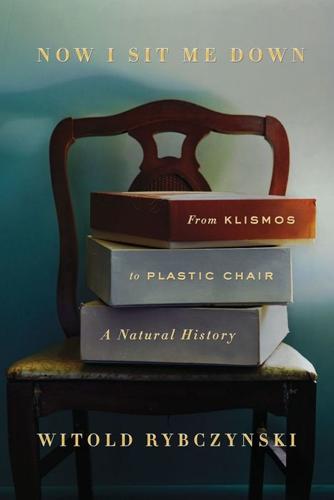
Now I Sit Me Down: From Klismos to Plastic Chair: A Natural History
by
Witold Rybczynski
Published 22 Aug 2016
Even so, soon additional factories were needed and three were built in Moravia as well as a fifth in Hungary. No. 14 café chair (Michael Thonet) The cover of the first Thonet catalog, published in 1859, carried the proud motto Beigen oder Brechen, To Bend or to Break. The broadsheet illustrated twenty-six products: chairs, settees, and tables. The chairs were designed with interchangeable parts, so that different models could be created by recombining assorted backs and arms. Number 14, a café chair, was the least expensive item; it sold for three Austrian florins, about the price of a bottle of good wine. Known as the Konsumstuhl, or Consumer’s Chair, No. 14 was the workhorse of the Thonet line.
…
Photographs of him in later life show a handsome man with longish hair and a full white beard; he resembles Karl Marx, another Rhineland Palatinate native. The resemblance ends there, for Thonet was an early example of the capitalist-entrepreneur. Fifty years before Henry Ford introduced the Model T automobile assembly line in Highland Park, Thonet had already put in place the basic elements of mass production: division of labor, interchangeable parts, mechanization. As Ford would later do, he integrated his business vertically, buying forest land, laying railroad track, operating his own sawmills, and building his own machine saws, steam retorts, and iron molds. He even manufactured the bricks that were used to build the worker housing, schools, and libraries in his company towns.
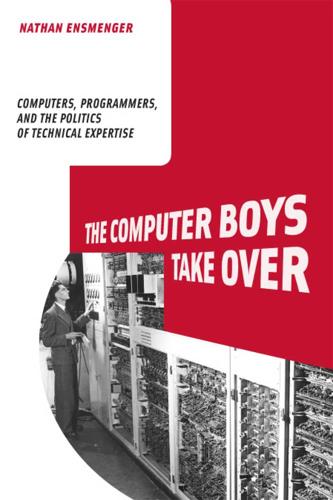
The Computer Boys Take Over: Computers, Programmers, and the Politics of Technical Expertise
by
Nathan L. Ensmenger
Published 31 Jul 2010
The explicit goal of testing programs at large employers like SDC was to reduce the overall level of skill among the programming workforce. By identifying the minimum level of aptitude required to be a competent programmer, SDC could reduce its dependence on individual programmers. It could construct a software factory out of the interchangeable parts produced by the impersonal and industrial processes of its aptitude test regimes. It is this last consequence of aptitude testing that is the most interesting and perplexing. Like all of the proposed solutions to the labor shortage in programming, aptitude testing also embodied certain assumptions about the nature of the underlying problem.
…
There is no single development, in either technology or in management technique, that by itself promises even one order-of-magnitude improvement in productivity, in reliability, in simplicity.54 Brook’s article provoked an immediate reaction, both positive and negative. The object-oriented programming (OOP) advocate Brad Cox insisted, for example, in his aptly titled “There Is a Silver Bullet,” that new techniques in OOP promised to bring about “a software industrial revolution based on reusable and interchangeable parts that will alter the software universe as surely as the industrial revolution changed manufacturing.”55 Whatever they might have believed about the possibility of such a silver bullet being developed in the future, though, most programmers and managers agreed that none existed in the present.
…
As early as 1962, in a RAND Corporation Symposium on Programming Languages, Jack Little lamented the tendency of manufacturers to design languages “for use by some sub-human species in order to get around training and having good programmers.”63 When the Department of Defense proposed ADA as a solution to yet another outbreak of the software crisis, it was trumpeted as a means of “replacing the idiosyncratic ‘artistic’ ethos that has long governed software writing with a more efficient, cost-effective engineering mind-set.”64 As was mentioned earlier, object-oriented programming enthusiasts advocate for “a software industrial revolution based on reusable and interchangeable parts that will alter the software universe as surely as the industrial revolution changed manufacturing.”65 Once again, the desirability of such a revolution, and its attendant implications for the character and quality of programming labor, is not universally recognized; witness the recent debate about outsourcing, which ties the history of the software crisis into a much larger and longer-running one about globalism, job protection, workers’ rights, and national identity.

A History of the World in 6 Glasses
by
Tom Standage
Published 1 Jan 2005
The British industrial approach was to divide up the manufacturing process into several stages, passing each item from one stage to the next, and using laborsaving machines where possible. The American approach went even farther by separating manufacturing from assembly. Specialized machines were used to crank out large numbers of interchangeable parts, which were then assembled into finished products. This approach became known as the American system of manufactures, starting with guns, and then applied to sewing machines, bicycles, cars, and other products. It was the foundation of America's industrial might, since it made possible the mass production and mass marketing of consumer goods, which quickly became an integral part of the American way of life.
…
This included the apparatus and raw materials to generate the gas, two fountains to carbonate the water, a bottling machine, fifty gross of bottles, flavoring extracts, and colorings. Matthews's inventions were displayed at exhibitions and won awards around the world. They epitomized the American approach to mass production: Specialized machines handled each step of the process, the bottles and stoppers were standardized, interchangeable parts, and the resulting drink, produced cheaply in large quantities, had mass appeal. Indeed, soda water, produced on an industrial scale and consumed by rich and poor alike, seemed to capture something of the spirit of America itself. Writing in Harper's Weekly in 1891, the author and social commentator Mary Gay Humphreys observed that "the crowning merit of soda-water, and that which fits it to be the national drink, is its democracy.

Peopleware: Productive Projects and Teams
by
Tom Demarco
and
Timothy Lister
Published 2 Jan 1987
For the organization with pathologically high turnover (anything over 30 percent), a few reasons account for most departures: • A just-passing-through mentality: Co-workers engender no feelings of long-term involvement in the job. • A feeling of disposability: Management can only think of its workers as interchangeable parts (since turnover is so high, nobody is indispensable). • A sense that loyalty would be ludicrous: Who could be loyal to an organization that views its people as parts? The insidious effect here is that turnover engenders turnover. People leave quickly, so there’s no use spending money on training.
…
For all these reasons, the insecure manager is threatened by cliques. He or she would feel better working with a staff of uniform plastic people, identical, interchangeable, and unbonded. The jelled work group may be cocky and self-sufficient, irritating and exclusive, but it does more to serve the manager’s real goals than any assemblage of interchangeable parts could ever do. 22. The Black Team The value of jelled teams will be obvious to you if you have already had the enjoyable experience of working on one. But just in case you haven’t, this chapter is intended to give you some sense of what they’re like. Presented below is the story of a legendary team that began to make its mark in the 1960s.

The Great Reset: How the Post-Crash Economy Will Change the Way We Live and Work
by
Richard Florida
Published 22 Apr 2010
The invention of new technologies is one thing, but the ability to organize them into a workable system can lead to massive gains in output and efficiency that can revolutionize the economy. The new systems are, themselves, key factors of a Reset. The mid–nineteenth century had seen the rise of a powerful new system of production based on interchangeable parts, dubbed the “American system of manufacture.”4 This system was a huge advance over the older system of a craftsman working independently to make parts with a chisel and file, replacing that time-honored practice with machine-made parts. But it advanced only slowly, in fits and starts, and was used mainly at first for military production.
…
See jobs; service sector; work energy consumption, in megaregions, 153–155 energy systems, First Reset and infrastructure for, 12–15 environmental responsibility green products and consumption patterns, 138–139 megaregions and, 153–155 Fairfax, Virginia, 145 Federal Housing Administration, 33 Federal National Mortgage Association (Fannie Mae), 33, 177 Federal Railroad Administration, 166 Field, Alexander, 26–27, 28, 39 Filene, Lincoln, 132 Finance Capital (Hilferding), 45 finance sector employment, 51–52 financial centers, global, 49–60 in Asia, 56–59 in Middle East, 58 New York and London as current, 49–54 New York and London’s future prospects, 55–60 financial sector building versus trading and, 113–115 Charlotte, N.C., and, 63–65 consolidation of, 61–63 in First and Second Resets, 108 recent emphasis on capital and lack of innovation funding, 107–113 shift of college graduates away from jobs in, 112–113 in Toronto, 89–90 Fineman, Howard, 77, 78, 81 FIRE (finance, insurance, and real estate), 62–65 First Reset and Long Depression (1870s), 4, 10, 106, 107, 181 cities and changes in lifestyles and consumption, 22–24 cities and population shifts, 18–22 educational improvements, 16–17 financial sector and, 108 new energy systems, 12–15 Pittsburgh and, 79 production based on interchangeable parts, 11–12 spatial fix of, 17, 18–25, 45 transportation infrastructure improvement, 15–16 transportation technology revolution, 10–11 Florida, 92 food, percentage of budgets spent on, 23, 34, 130 Forbes, 88 Ford, Henry, 28, 45–46, 132 Four Seasons hotels, 121–122, 176 France, 164–165 Frank, Robert, 140 Frankfort, Germany, 50 Frey, William H., 96, 147, 174 Funnell, Ben, 129–130 Gainesville, Florida, 99 Gates, Bill, 183 gender division of labor, in service sector, 124–126 Georgia Tech, 17 G.I.

Makers
by
Chris Anderson
Published 1 Oct 2012
Combined with the rise of the chemical industries, petroleum refining, and the internal combustion engine and electrification, this next phase of manufacturing transformation is called by many historians the “Second Industrial Revolution.” They place it from 1850 to around the end of World War I, which includes Henry Ford’s Model-T assembly line, with its innovations of stockpiles of interchangeable parts and the use of conveyer belts, where products being produced moved to stationary workers (who each did a single task), rather than the other way around. Today, in a fully industrialized economy, we forget just how much the First and Second Industrial Revolutions changed society. We talk in terms of productivity enhancements, but consider what that means in terms of people’s lives.
…
What BrickArms and its kin represent are examples of Maker business targeting niche markets, which are often underserved by traditional mass manufacturing. One of the triumphs of the twentieth-century manufacturing model was that it was optimized for scale. But this was also, at least from a twenty-first-century perspective, a liability. Henry Ford’s powerful mass-production methods of standardized interchangeable parts, assembly lines, and routinized jobs created unbeatable economics and brought high-quality goods to the common consumer. But they were also tyrannical—“any color you want as long as it’s black”—and inflexible. The price differences between small-batch and big-batch products were so great that most buyers could have either affordable products or wide choice, but not both—cheap, mass-produced products beat variety every time.
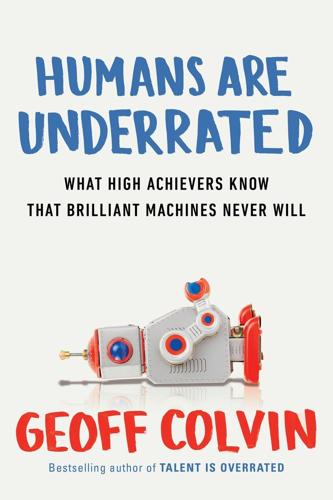
Humans Are Underrated: What High Achievers Know That Brilliant Machines Never Will
by
Geoff Colvin
Published 3 Aug 2015
WHY TEAMS NEED TIME As we’ve observed before, we humans are not machines. We don’t entirely make sense, and this sometimes baffling quirkiness is in fact understandable and key to our effectiveness and greatest value in the changing economy. In the context of teams, it means that individuals are not interchangeable parts. We do not all bring the same social skills, and group effectiveness depends on building up social capital between group members through earning trust and helping one another. It all takes time. An important implication of these findings is that since highly effective teams are rare and valuable, not easily or quickly replicated, keeping them together, once formed, is worth a lot.
…
The explanation, say the researchers, is “a surgeon’s familiarity with critical assets of the hospital organization . . . which may be specific employees, team structures, or operating routines.” Surgery and piloting are activities guided by strict and elaborate protocols, and the people who do them must go through years of training and rigorous certifications. Airliner cockpits and operating rooms would thus seem to be the settings in which people are as close to being interchangeable parts as they could possibly be. Yet even there, social factors, which are entirely disregarded by all those regulations and protocols, turn out to be critically important. The difference between teams whose members have learned over time how to work well together—who have built up social capital among themselves—and teams whose members have not can be literally the difference between life and death, just as it was on the savanna 100,000 years ago.
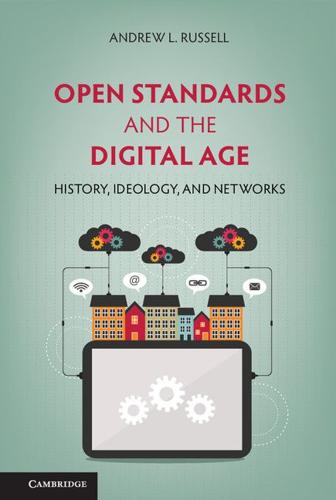
Open Standards and the Digital Age: History, Ideology, and Networks (Cambridge Studies in the Emergence of Global Enterprise)
by
Andrew L. Russell
Published 27 Apr 2014
The “American system of manufactures” that was born in the federal armories relied on the use of interchangeable parts to facilitate faster and more efficient production. As mechanical engineers moved from the armories to firms that made other products, including machine tools, farm equipment, sewing machines, and bicycles, they brought with them techniques and tools that could mechanize production, which they hoped would make manufacturing more efficient and profitable. Some firms did not embrace interchangeable parts but nevertheless developed their own standard practices in custom and batch production to make products such as locomotives, furniture, and jewelry.
…
The Post Office Act of 1792 defined standard postage rates, procedures, and penalties for interfering with the mails, but Congress declined to create the organizational capabilities needed to set federal standards for weights, measures, and duties until well into the 1830s. Americans never pursued standardization with the level of coordination employed by governments in Western Europe. Instead, de facto standards for American industrial production emerged from the practices of interchangeable parts manufacturing in a variety of machine tool–based industries.13 Rather than depending on the federal government to coordinate economic activity, antebellum Americans were prolific formers of private voluntary organizations. Some of these groups, such as the Chicago Board of Trade and the New England Cotton Manufacturers’ Association, facilitated stable relationships among a wide variety of market participants.

The Way of the Gun: A Bloody Journey Into the World of Firearms
by
Iain Overton
Published 15 Apr 2015
It saw the publication of Moby-Dick by Herman Melville; a book seen by some, with its monumental ambition, as the first modern novel.1 It was the month that celebrated the laying-down of the first protected submarine telegraph cable, on the bed of the English Channel, foretelling an era of global communications.2 And, on a London day when the sky at dawn had been the colour of the Thames but was now brilliant and blue, it saw Samuel Colt standing before the bewhiskered and besuited members of the Institution of Civil Engineers in London, waiting for them to fall quiet. He had something to show them.3 Like many American engineers, Colt had travelled to an England entranced by the displays of the Great Exhibition, and it was there that he planned to show off his design.4 What he presented fascinated the crowd: an invention with interchangeable parts.5 It was the Navy Colt Revolver. What captured the greater imaginations of these straight-backed and high-browed engineers, though, was that 80 per cent of the gun had been made on machines: a revolutionary departure from crafted metal gun parts traditionally lathed by hand.6 By the time that Colt had finished talking, many in the room were won over to this way of mass production.7 The awards board presented Colt with the prestigious Telford Gold Medal, and already the use of this manufacturing process to make guns was spreading from the Connecticut River Valley, where the majority of American firearms were once made, across the US and beyond.8 This production method, defined by its extensive use of interchangeable parts and mechanisation to produce them, became known as the ‘American System’.
…
What captured the greater imaginations of these straight-backed and high-browed engineers, though, was that 80 per cent of the gun had been made on machines: a revolutionary departure from crafted metal gun parts traditionally lathed by hand.6 By the time that Colt had finished talking, many in the room were won over to this way of mass production.7 The awards board presented Colt with the prestigious Telford Gold Medal, and already the use of this manufacturing process to make guns was spreading from the Connecticut River Valley, where the majority of American firearms were once made, across the US and beyond.8 This production method, defined by its extensive use of interchangeable parts and mechanisation to produce them, became known as the ‘American System’. It was soon to be the central way to mass-produce so many things that define our modern life – cars and bicycles, clocks and furniture. And, of course, guns in their millions. It is no coincidence that Remington once made typewriters, sewing machines and cash registers.9 Or that Winchester made handcuffs, dishwashers and toilet flush valves.10 No surprise that the inventor of the Kalashnikov rifle once dreamed of designing agricultural machinery,11 or that the gun maker Glock started off his life designing plastic curtain rod rings.12 The principles of production were all the same – it is just that guns have a very different use than other mass-produced items.
…
As Colt said on that day: ‘When a new piece is required, a duplicate can be supplied with greater accuracy and less expense, than could be done by the most skilful manual labour, or on active service a number of complete arms may be readily made up from portions of broken ones, picked up after an action.’ 6. http://gundesigndotorg.files.wordpress.com/2013/05/barbaraeldredge_missingthemoderngun.pdf 7. Mass production using interchangeable parts was actually first achieved in 1803 by Marc Isambard Brunel. But this method of working did not catch on in general manufacturing in Britain for many decades. 8. http://money.cnn.com/magazines/fortune/fortune_archive/2004/10/04/8186795/index.htm 9. http://www.remington.com/pages/our-company/company-history.aspx 10.
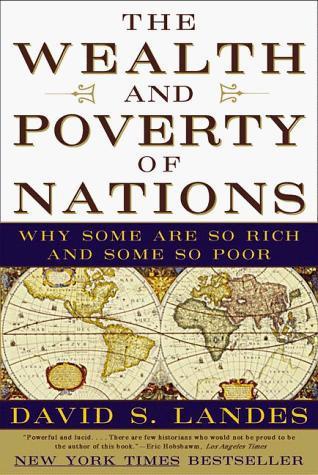
The Wealth and Poverty of Nations: Why Some Are So Rich and Some So Poor
by
David S. Landes
Published 14 Sep 1999
These devices in turn, along with similar tools devised by machinists, could then be adapted to work in larger format, and it is no accident that cotton manufacturers, when looking for skilled craftsmen to build and maintain machines, advertised for clockmakers; or that the wheel trains of these machines were known as “clockwork.” The repetitious work of these machines suggested in turn the first experiments in mass production based on interchangeable parts (clocks, guns, gun carriages, pulley blocks, locks, hardware, furniture). All these gains, plus the invention of machines to build machines, came together in the last third of the eighteenth century—a period of contagious novelty. Some of this merging stream of innovation may have been a lucky harvest.
…
By the time the South went to war against the Union in 1861, firearms production in the North outweighed that in the Confederacy by 32 to l.10 One sees in these early gunshops a hint of things to come: so great was the demand for weapons that long before powered machine tools became available, division of labor was enhancing productivity. The later interest of the young American republic in the mass production of small arms using interchangeable parts was anticipated well before the revolution. Thus the colonists imported and copied models of European devices and machines, and skilled machinists and craftsmen were invited, or sought on their own account, to move to high American wages. Here the North American colonies were helped by their anglophone culture: Britain boasted the most inventive society in Europe, and British immigrants felt at home in a society speaking the same language.
…
The Indians fought back, the more so as settler expansion entailed repeated violations of ostensibly sacred and eternal agreements—as long as the sun would shine and the waters run. The white man broke faith at will, while the natives were slandered as “Indian givers.” Here, too, technology made the difference. Repeating weapons, batch-or mass-produced with roughly interchangeable parts, multiplied the firepower of even small numbers and made Indian resistance hopeless. Of course, many Americans are sorry now, while Europeans invite Indian chiefs to Paris and Zurich to recount the litany of white wrongdoing. Hollywood films, once cowboy-and-Indian cliches, now remind us and others of the misdeeds of the invaders.

The Runaway Species: How Human Creativity Remakes the World
by
David Eagleman
and
Anthony Brandt
Published 30 Sep 2017
His assembly line changed the way the cars were built: “Rather than keeping the work on assembly stands and moving the men past it, the assembly line kept the men still and moved the work.”6 Thanks to these innovations, cars drove off the factory floor at an unprecedented rate. An enormous new industry was born. But just like the iPhone, Ford’s idea of the assembly line had a long genealogy. Eli Whitney had created munitions with interchangeable parts for the US Army in the early nineteenth century. This innovation enabled a damaged rifle to be repaired using parts salvaged from other weapons. For Ford, this idea of interchangeable parts was a boon: rather than tailoring parts for individual cars, parts could be made in bulk. Cigarette factories of the previous century had sped up production using continuous flow production – moving the assembly through an orderly sequence of steps.
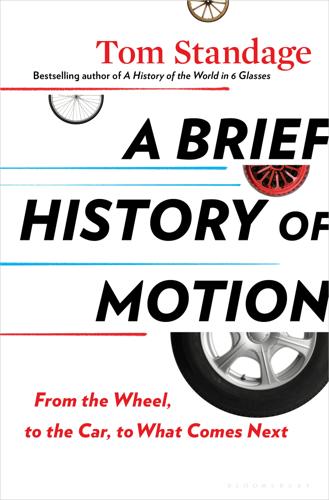
A Brief History of Motion: From the Wheel, to the Car, to What Comes Next
by
Tom Standage
Published 16 Aug 2021
Advertisement for the original Ford Model T, 1908. The text, like the car itself, is practical and no-nonsense. ANY COLOR, AS LONG AS IT’S BLACK The idea of what we now call mass production using interchangeable parts had originated in the nineteenth century and was originally known as “the American system of manufactures.” It could be used to manufacture large quantities of a specific product through the assembly of standardized, interchangeable parts, made to sufficiently precise tolerances, by low-skilled (and hence low-wage) workers. This approach was originally used to make shoes, guns, and clocks, and in the early twentieth century it was extended to cars, starting with the Oldsmobile Curved Dash in 1901, production of which had reached an unprecedented fifty-five hundred units a year by 1904.

Richard Dawkins: How a Scientist Changed the Way We Think
by
Alan Grafen; Mark Ridley
Published 1 Jan 2006
In the asexual solution, an entire genome replicates at the same time and does not recombine with other genomes. Thus, the whole genome behaves as a single Dawkinsian gene. In the sexual solution, two entire genomes come together for some length of time, then separate into two new genomes after exchanging interchangeable parts with each new genome receiving one of each part. The genome is an ephemeral collective of many Dawkinsian genes, but the rules of Mendelian inheritance ensure that what is good for one part is good for all, at least for the time that the genes are temporarily associated. (I leave to one side the complexities that arise when the ‘rules’ are broken and there is conflict within the genome.)
…
(I leave to one side the complexities that arise when the ‘rules’ are broken and there is conflict within the genome.) Neither the sexual nor the asexual solution seems to apply to most complex memetic ‘texts’. Ideas recombine freely to generate each new text and there is no well-defined exchange of interchangeable parts. One idea can be adopted from a text and the remainder abandoned. Therefore, the adaptations of memes will be adaptations for the good of the individual, rarely-recombining ideas. Some of these ideas may be so simple—the idea that the gene is a part of a chromosome—that they can exhibit few, if any, adaptations for their own transmission.
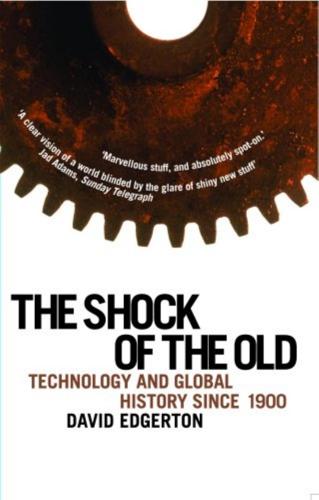
The Shock of the Old: Technology and Global History Since 1900
by
David Edgerton
Published 7 Dec 2006
The latter was a factor in the relative decline of the electric car, except in some cases of centrally-controlled fleets.15 The Model T Ford, in production from 1908 to the late 1920s, easily out-produced all other cars in its time, and provides some particularly stark examples of the significance of maintenance. A key feature of the car was that it was made from interchangeable parts. This allowed the assembly to be carried out without fitters, and it also had implications for maintenance. Henry Ford himself noted that the Model T was designed for ease of maintenance; no special skill was required for repair or replacement: I believed then, although I said very little about it because of the novelty of the idea that it ought to be possible to have parts so simple and so inexpensive that the menace of expensive hand repair work would be entirely eliminated.
…
Adjustable spanners did not last long; anvils were improvised.20 The number of machine tools in this vast complex was in single figures.21 The most elaborate tool in common use was the electric welding kit, which would be central to the manufacturing side of the magazine. How could such a place maintain and repair the products of an industry which was all interchangeable parts, precision engineering and elaborate maintenance manuals? The answer is that in some sense it did not – these magazines could not maintain such cars, lorries and buses so that they remained as they had been when made. There was a mismatch between the car or truck as new and the support infrastructure available.
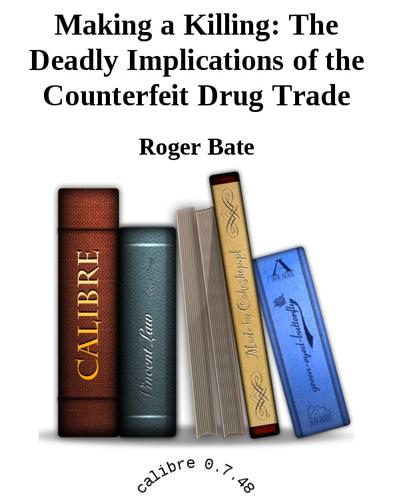
Making a Killing: The Deadly Implications of the Counterfeit Drug Trade
by
Roger Bate
Published 25 Jun 2008
Other problems, from petty theft of drugs by nurses and doctors to widespread “leakage,” reveal myriad vast holes through which fake and substandard drugs enter middle-income and poor countries.9 Solutions to such problems may be rooted in reducing corruption in the public sector rather than attempting to combat fake drugs directly.10 Complex Supply Chains Encourage Fakes It stands to reason that any complex system with many interchangeable parts is especially susceptible to being breached—it has more vulnerabilities than a simpler system. This applies to the pharmaceutical supply chain. Having a secure source of sound drugs is no guarantee of safety if the supply chain is full of weaknesses and holes. Today’s supply chains offer many openings to counterfeiters, from diffuse and little-regulated wholesale systems in the United States and the EU to misguided trade barriers in developing countries.
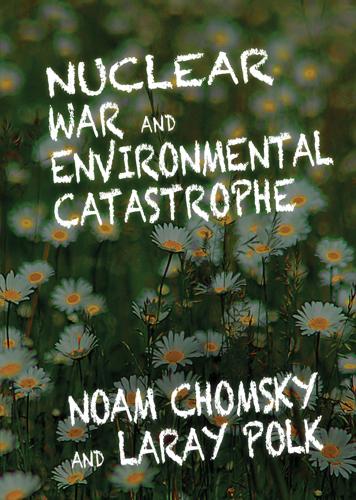
Nuclear War and Environmental Catastrophe
by
Noam Chomsky
and
Laray Polk
Published 29 Apr 2013
That’s actually a change from the past, a regression from the past. The actual US economy since the colonies has relied quite substantially on government intervention. That goes right back to the earliest days of independence, and for advanced industry in the latter part of the nineteenth century. The American system of mass production, interchangeable parts, quality control, and so on—which kind of astonished the world—was largely designed in government armories. The railroad system, which was the biggest capital investment and, of course, extremely significant for economic development and expansion, was managed by the Army Corps of Engineers.

A Pelican Introduction Economics: A User's Guide
by
Ha-Joon Chang
Published 26 May 2014
This meant that, once something was invented, it could be replicated and improved upon very quickly. In addition, organization of the production process was revolutionized in many industries by the invention of the mass production system. The use of a moving assembly line (conveyor belt) and interchangeable parts dramatically lowered production costs. This system of production is the backbone (if not the entirety) of our production system today, despite frequent talks of its demise since the 1980s. New economic institutions emerge to deal with growing production scale, risk, and instability During its ‘high noon’, capitalism acquired the basic institutional shape that it has today – the limited liability company, bankruptcy law, the central bank, the welfare state, labour laws and so on.
…
By working with the suppliers to raise the quality of the parts they deliver (the so-called ‘zero defect movement’), it vastly reduces the need for rework and fine-tuning at the end of the assembly line which had plagued Fordist factories. It also uses machines that allow quick change-overs between different models (e.g., by allowing a quick exchange of dies) and thus can offer a much greater variety of products than the Fordist system does. Unlike the Fordist system, the Toyota system does not treat workers as interchangeable parts. It equips workers with multiple skills and allows them to exercise a lot of initiative in deciding work arrangements and suggesting minor technological improvements. Improvements thus generated are believed to have been crucial in establishing Japanese technological superiority in industries in which quality is important.
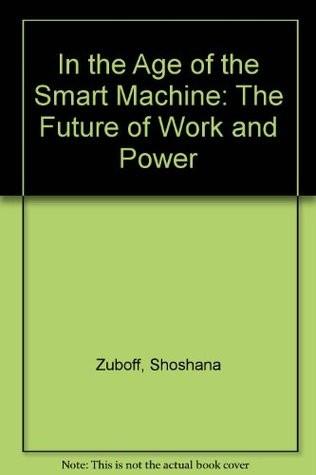
In the Age of the Smart Machine
by
Shoshana Zuboff
Published 14 Apr 1988
However, the historian of technology David Hounshell has recently shown that in some of the largest and most successful American firms, handwork and skilled machine work prevailed during most of the nine- teenth century. For example, the Singer Sewing Machine Company was not able to produce perfectly interchangeable parts. As a result, they relied on skilled fitters to assemble each product. The McCormick Reaper Works employed crude manufacturing techniques. Production depended upon skilled machinists, blacksmiths, carpenters, and mold- ers. 54 In 1 911 an observer of the American steel industry tried to con- vey the notion that skilled work did not imply diminished physical ex- ertion: "New skills, like the puddler's, the catchers, or the machinists 40 KNOWLEDGE AND COMPUTER-MEDIATED WORK included very heavy manual work.
…
A distinction can be made between the new technologies for the organization of production, which allowed management to control the pace of the assembly line (and, thus, the intensity of effort), and the introduction of new forms of machinery that could reduce the require- ments for both effort and skill. The continuity of assembly depended upon the production of interchangeable parts for uniform products. A new generation of automatic and semiautomatic machine tools moder- ated the physical demands on the machinist as they transferred skill from the worker to the machine. The new workers hired to operate these machines "had no skills and simply placed a piece in and removed it from the machine.,,76 In the second decade of the twentieth century, when these develop- ments were being debated, the fast-growing automobile industry faced shortages of skilled workers.
…
L., 33 Hand technology, 37, 39 Harding, Warren, 40 Harvard University, 232 Havelock, Eric, 176, 181 Hidden Injuries of Class, The (Sennet and Cobb), 239 Hierarchical authority, 221-22, 413, 448n40; and communicative behav- ior in computer medium, 372-86; computers as threat to, 266-67; de- velopment of, 235-40; limits of, in informated organization, 285-314; performance opportunities limited under, 207-8; and visibility in com- puter medium, 337-41; see also Executives; Management; Middle management Honeywell Corporation survey, 283 Hopf, Harry, 109 Horizontal integration, 399 Hounshell, David, 39 Howard, Robert, 283 How to Do Business as Business Is Done in Great Commercial Centers (Eaton), 100-101 How to Win Friends and Influence People (Carnegie), 111 Hughes, Everett, 454n12 Hypotheses, generating and testing, 197-202 Imagination, 86-88, 437n7 Imperative control, 221, 400; beliefs necessary to maintain, 250, 410- 11; managerial authority and, 224, 234, 236-37, 250, 254, 313, 356; reciprocity in maintenance of, 360- 61; traditional environment of, 390-91,394 Implicit knowledge, 79, 196; limits of, 60 Incentive payment schemes, 43, 45, 414 Individualistic orientation, 131, 202- 3,238 Individual rights, 406 Index Inductive reasoning, 93 Industrialization, 37-42,227 Inferential reasoning, 72-73, 75, 92- 96, 169 Informal communication, 362-86 Informating power of computer tech- nology, 390-91, 440n6; automa- tion and, 9-11; autonomy of, 30 I- 10, 385-86; communicative behav- ior and, 362-86; office work and, 156-71; reskilling and, 57 Informational role, 103-4 Information technology: and abstrac- tion of industrial work, 58-96; col- lective responsibility in, 355-61; managerial authority and, 245-84; mastery of, 174-218; office work and, 124-73; problem of meaning in, 79-96; scope of, in modern workplace, 3-5, 11-12, 415-22; visibility within, 315-19, 322-61, 363-72 Innis, Harold, 176 Intellective rate busting, 410 Intellective skills: action-centered skills compared with, 76, 81; cogni- tive demands of, 185-95, 216-17; development of, 191-94; division of labor and, 393; education and, 443- 44n28; impediments to competence and performance in, 206-8; mana- gerial role and, 396-99; need for, 76, 182, 253; operational compe- tence and, 286-87; pooling, 196- 200; and problem of meaning, 79- 96; social-psychological signifi- cance of, 195-206 Interchangeability of personnel, 46 Interchangeable parts, 47-48 Internal Revenue Bureau, 11 5 International banking, 160-71 International Congress for Scientific Management, Sixth, 109 International Labour Organization, 120 Invisible work, 290-96 Ironmaking, 38-40 Isenberg, Daniel, 103, 109, 196 Isolation, 125-26, 139, 141, 151-56, 171, 440n6 463 Jaikumar, Ramchandran, 283 Japan, 420-21 Johnson, Mark, 454nll Journal of the American Society of Naval Engineers, 43 Judeo-Christian theology, 25 Kanter, Rosabeth, 103, 109, 111-12, 122,196 Katz, Harry, 241-42 Knowledge, 166-67; class system and distribution of, 444-45n36; cleri- cal, 126, 133-50, 172; computer- mediated expansion of, 182-83, 395; depletion of, 391; diminished importance of, 133-36; experience- based, 36-42; hierarchical access to, 394; implicit, 60, 79, 196; informal communication and, 362-86; oral culture and, 174-78; power and, 266-67; sentience dissociated from, 61-70; withheld from workers by management, 250-54, 264, 278- 80; see also Tacit knowledge Kochan, Thomas, 241-42 Kohlberg, Lawrence, 428 Kotter, John, 102, 109, 177 Labor discipline, 33-36, 46 Labor militancy, see Trade union movement; Unions Labor statutes, assumptions common to, 237 Labor-withholding practices, 35- 36 Lakoff,George,454nll Leadership activity, 104 Leather trades, 38 Leffingwell, William Henry, 11 7-1 9, 125-26,151 Leontief, W assily, 420 Locke, John, 225 Lockwood, David, 114 Lodge, George, 226 Logical- mathematical reasoning, 193-94 Long-term memory, 192 464 Lordstown, Ohio, autoworkers strike, 241 Lynd, Helen Merrell, 240 Lynd, Robert S., 240 McCormick Reaper Works, 39 Machine dependency, 166-67, 269, 271-73 Machine tools, numerically con- trolled, 419-20 McKersie, Robert, 241-42 McLuhan, Marshall, 176 Mallet, Serge, 54 Management: action-centered skills involved in, 102-6, 112, 360-61; automation and, 245-84; and col- lective responsibility in computer- based environment, 355-61; con- trol techniques used by, 313-14, 323-27, 389, 392, 400, 404-5, 452n10; cost data and, 255-67; data access policy and, 356-61; decision making by, 104- 5; development of role of, 224-29; and etiology of white-collar work, 97-99; knowl- edge withheld from workers by, 250-54, 264, 278-80; and limits of hierarchy in informated organiza- tions, 285-314; and operator mis- trust of symbolic medium, 89; or- ganizational skill base and, 392-99; of posthierarchical organizations, 399-402; professionals and, 375- 76, 383-86; rationalization of work of, 437-38n55; recent challenges to authority of, 240-43; as science, 229-35; and social division of labor, 235-40; of socially integrated work- place, 404-12; and visibility of workers' social exchange in com- puter medium, 362-63, 372-86; workers' know-how expropriated by, 42-44; see also Executive work; Hierarchical authority; Middle man- agement; Scientific management; Worker-manager relations Man in the Moone (Godwin), 26 Manual labor, see Body Index Manufacturing, see Production Manufacturing resource planning, 412-22 March, James, 354 Martin, James, 441 n 10 Marx, Karl, 30, 221 Mass-production facilities, 43, 47-48, 51,421 Mayo, Elton, 234-35 Mead, George Herbert, 423 Meaning, problem of, 79-96 Meaningful work, 134, 273 Memory, 192 Mental imaging, 86-88, 435n7 Mercantilism, 25 Merleau-ponty, Maurice, 423 Methodology, 14, 423-29 Microcomputers, 417-18, 420 Middle Ages, 25-27 Middle management: and demands of acting-with, 110-13; etiology of, 98, 107-9; hierarchical pressures on, 249-51; and origins of clerical work, 113-23; as repository for ex- plicit knowledge of organizations, 232 Middlemen, 31 Middletown study, 240 Millar, Victor, 415 Mind, Self and Society (Mead), 423 Minicomputers, 418 Mintzberg, Henry, 103-7, 109, 177 Modern Business, 11 5 Monitoring systems, 43 Montgomery, David, 41 More, Thomas, 26 Nation, The, 229 National Academy of Sciences, 421 National Labor Relations Act, 238 National Research Council, 308 Natural attitude, 13 Natural selection concepts, 228-29, 447nl7 Neisser, Ulric, 187 New Deal legislation, 240 Newell, A., 192 New York Post, 229 Index New York Telephone Company, III Noble, David, 283 Obedience, 6, 291, 313, 431 n30, 445n2 Occupational identity, 62-63; disrup- tion of, 185-86 Offe, Claus, 236 Office, The, 12 1 Office machinery, 115-16, 118; com- puter systems compared with, 1 72 Office Management: Principles and Practice (Leffingwell), II 7 Office work: development of, 113-23; feminization of, 115-1 7; manage- rial role and, 437-38n55; mechani- zation and automation of, 115-23, 439n4, 439-40n5; on-line, 124-73; rationalization of, 113, 116-17; routinization of, 115-16; scientific management of, 117, 119-21, 123, 126, 151, 215; scope of computer applications in, 416-1 7 Oil refining, 59, 417-18 IIOld boy's network," 383 On Civility in Children (Erasmus), 26 Ong, Walter, 176 On-line offices, 124-73 Operations research, 109 II Optimology," 1 09 Oral culture: action-centered skills in, 174-78, 196,204,215; computer medium and, 362, 370-72; erosion of, 392-93; social exchanges sur- rounding professional work as, 376-86; written word mistrusted in, 77-78 Orality and Literacy (Ong), 176 Organization and Control (Gerstenberg), 447nl7 Owner-managers, 99-101, 109, 225, 227 Panoptic world view, 320-61 Parry, Adam, 176 465 Parry, Milman, 176 Participative management, 413 Partitions, 124-25, 140 Passive resistance, 352 Passivity, 69 Passwords, 353 Paupers and convicts, 225, 320 Payment systems, 46, 48-50, 273, 298-300; incentive-based, 43, 45, 50, 414; and status groupings of white-collar workers, 114 Peasants, 25-27; insurrections by, 31 Personal contacts, 333; devaluation of, 358; office work and, 439n4 Personalism, 61, 106 Personal style, 359-60 Physical labor , see Body Piaget, Jean, 428 Piece-rate workers, 32, 225; differen- tial pay for, 45 Pierenkemper, Toni, 114 Polanyi, Michael, 186 Pollard, Sidney, 99, 114,227,431 Porter, Michael, 41 5 Posthierarchical relationships, 399- 402 Pottery work, 38 Poulantzas, Nicos, 236 Power, 452n9; authority as spiritual dimension of, 221-23; division of labor and, 405-6; knowledge and, 266-67; technique as material di- mension of, 313-14 Preindustrial Europe, 25-31, III, 313-14 Printing industry, 51, 53-54 Privacy, 370; of social exchange in computer medium, 378-86; see also Surveillance Problem solving, 241, 286, 360; joint, 197-200,204,206 Procedural reasoning, 23, 75, 92, 156, 169,282 Production: abstraction of, 58-96; body's role in, 19-57; industrializa- tion and, 37-42, 227; scope of com- puter applications in, 418-22; skilled craft as root of, 36-42, 98 Production quotas, 46 466 Professional culture, differences with managerial culture, 375-76, 383- 86 Professionalization of managerial class, 230, 232 Professional schools, III, 116, 232 Protestant asceticism, 225, 233 Psychological disorders, 439-40n5 Psychological individuation, 207 Psychological issues, see Social-psycho- logical issues Pulp and paper mills, 2-5, 19-22, 42, 58-76,80-96,418-19,424 Quality circles, 241 Quality of Work Life movement, 241- 43 Quit rates, 34 Religion, 226, 229, 233 Research and development (R & D), 363-66 Ritualistic utterances, 247-48 Robot Institute of America, 420 Robots, 8, 419-21 Sabotage, 7 Saint Monday tradition, 32 Sampling, 425-26 Samuel, Raphael, 37, 39 Schrank, Roben, 50,238 Schuck, Gloria, 410 Schutz, Alfred, 430n I Schwartz, Barry, 454nll Scientific management, 99, 178; exec- utive work as approached by, 106- 10; history of, 230-35; information systems used to reproduce logic of, 283, 303; managerial control estab- lished by, 302-3; of office work, 117, 119-21, 123, 126, 151,215; philosophy and methods of, 41-44; workers' responses to, 44-45 Index Seavey, Jane, 115 Secretarial function, 122-23; see also Office work Self-made man, ideology of, 227, 446n5 Self-managing work teams, 241-42 Sennett, Richard, 239 Sentience, 61-70, 106 Service sector, 41 7-18, 424 Shaiken, Harley, 283 Shared context, 196, 204-5 Shaw, George Bernard, 248 Shirkers, 334-35 Side effects, 120, 141 Siemens, Werner von, 108 Silicon-integrated circuit (chip), 415 Simon, Herbert, 192, 354 Singer Sewing Machine Company, 39 Site visits, 333 Skills: automation's effect on, 23, 47- 49; continuous-process production and, 51-53; executive, 99-107, 43 6n 13; pay differential and, 50; production work and, 36-42, 51- 53, 98; sentient involvement and, 60; worker control and, 45; see also Action-centered skills; Craft work; Deskilling; Intellective skills Slavery, labor associated with, 25 Slichter, Sumner, 36 Smith, Adam, 221, 225-26 Smith, Jonathan Z., 247-48 Social Darwinism, 228-29, 231, 235, 238, 446-47n15 Social exchange: in computer me- dium, visibility of, 362-63, 372-86; isolation from, 139, 141, 151-56, I 71, 440n6; joint problem solving and, 197-200, 204, 206; reduced, in on-line offices, 136-50 Social integration, 25; automation and, 53-54; craftsworker's knowl- edge as source of, 41, 50, 53-54; in- dustrialization and, 227; and scope of computer applications, 403-12 Social-psychological issues: continu- ous-process production and, 51- 53; intellective skills and, 195-206; office work and, 126 Index Social stratification: class struggle and, 283; distribution of knowledge and, 444-45n36; and erosion of class dis- tinctions, 240, 250; physical labor and, 25-30; rigidified by manager- worker education differences, 228- 29,231,235,238 Sociolinguistics, 204 Soldiering, 35 IIS pan of control" concept, 452- 53n15 Spatial intelligence, 193-95, 435n7 Spencer, Herbert, 228-29 Standard operating procedures, 43 Steam power, 31, 34, 37, 39 Steel industry, 39-40,419 Stockbrokers, 438n55 Storage-and-retrieval systems, auto- mated, 41 9 Stress, 143, 440n5; of invisible work, 292; and mechanization of office work, 120-21; and symbolic refer- ence,89 Structure of Behavior, The (Merleau- Ponty),423 Supervision methods, 35-36, 294-95, 326,329-37, 340-41; circumvent- ing, 352-54; see also Management Supervisory process-control systems, 419 Surveillance, 7, 400; larger social con- text and, 319-22; managerial au- thority maintained by, 313; of social exchange in computer medium, 378-86; unilateral, 354-56, 361 Symbolic reference, 442n5; liberating aspects of, 180-81; and problem of meaning, 79-92; shared action con- text and, 196; stress generated by, 89; trust of, 76-79 Systematic management, 44 Tacit knowledge, 186-88; intellective skill development and, 192-93; re- placed by algorithms, 246 Taylor, Frederick, 41-43, 45-47, 109, 230-32,302-3,349 467 Taylor Society, 11 7 Team-based organizational structure, 203, 275-76, 346, 360, 413-14; self-managing, 241-42 Telephone, 131 Terminations, 225, 326, 431 n30 Theory-based reasoning, 93-96 Three Mile Island nuclear power plant, 201 Time-and-motion study, 42-43,46 Time study, 42-43,47 Top-down perceptual processing, 95, 169 Touche Ross International, 440n9 Touch-sensitive screens, 418 Toyoda Machine Tool Co., 421 Trade union movement, 35, 226; in- dustrialization and, 37-38; manage- rial authority and, 228, 233, 236, 240-42; Social Darwinism and, 228; see also Unions Training, 258-60, 286; division of la- bor and, 455n14; lack of, 250-54 Troubleshooting, 197-200, 286 Tucker, Josiah, 35 Turnover rates, 34, 241 Typewriter, 115-16, 1 72 U-curve hypothesis, 53-54 Ulman, Lloyd, 36 Unions, 46, 334; cost information available to, 265-66; job security and, 265; and prospect of socially in- tegrated workplace, 403-4, 406; Taylorism and, 45; see also Trade union movement United States Department of Health, Education, and Welfare, 241 United States Steel Corporation, 35 University of Pennsylvania, 232 Unmanned factories, 422 Unreality, sense of, 79-92, 130-31 Urwick, L.

Software Design for Flexibility
by
Chris Hanson
and
Gerald Sussman
Published 17 Feb 2021
This is not easy. 2.5 Summary The techniques displayed and elaborated on in this chapter can be helpful in the design and development of every large-scale system. It is almost always to our advantage to build our systems using mix-and-match interchangeable parts with well-defined interfaces. In languages with higher-order procedures and lexical scoping, like Scheme or Java, it is easy to make systems of combinators— standard means of combination, such as compose—for a library of interchangeable parts. And it is convenient to make parametric parts that share a common interface specification. For example, if our interface specification is procedures that take one argument and return one value, then (define (make-incrementer dx) (lambda (x) (+ x dx))) defines a set of interchangeable incrementers.
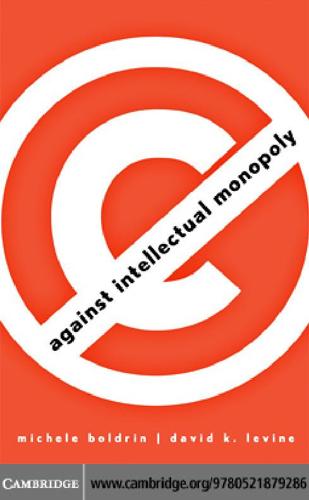
Against Intellectual Monopoly
by
Michele Boldrin
and
David K. Levine
Published 6 Jul 2008
In the meanwhile, and thanks also to all that “pirating”, the Southern cotton-growing and cotton-ginning sector grew at a healthy pace. Ironically, Eli Whitney did eventually become a rich man – not through his efforts at monopolization, but through the wonders of competitive markets. In 1798, he invented a way to manufacture muskets by machine, having developed the idea of interchangeable parts and standardized production. Having probably learned his lesson, he did not bother to seek patent protection this time, but instead set up a shop in Whitneyville, near New Haven. Here he manufactured his muskets and sold them to the U.S. Army. So it was not as a monopolist of the cotton gin, but rather as the competitive manufacturer of muskets, that Whitney finally became rich.
…
See also copyright; suggestions for short-run improvements intellectual property; non-compete in, 248–251 clauses; patents threat of to freedom and prosperity, 97, and costs of innovation, 150–151 264 discouragement of imitation by, 146 types of, 8 discouragement of new entrants by, 185 as unnecessary evil, 6–7 P1: KXF head margin: 1/2 gutter margin: 7/8 CUUS245-IND cuus245 978 0 521 87928 6 April 29, 2008 10:0 Index 293 use of private contracts to enforce, Levine, D. K., 129 252–253 Levinstein and Co., 88 voluntary relinquishment of, 17, 18 Library of Babel, The (Borges), 154 intellectual property law, 157, 260. See also licenses, revenues from, 76 patent law licensing, 250–251 interchangeable parts, 51 life-cycle of industries, literature on, 64 intermediaries for trading patents, Lilienthal, Otto, 206 Internet Linux, 18, 21–22, 248–249. See also pornography and growth of, 37 open-source software web browser, 17 literacy, 23 Internet radio, 251 literature, 31. See also books; publishing investment industry in countries with low intellectual Lo, Shih-Tse., 194–195 property protection, 186 Lodge, Oliver, 203, 204 and intellectual property protection, 192, long-run, 159 195–197 risks in relying on intellectual property machinery, 191 for, 196 Machlup, Fritz, 11, 243 investment bankers, 57–59 mail-order business, 47 IP-efficiency, 4 Manes, Stephen, 5 IP-inefficiency, 69, 70, 75, 78 Mann, R., 197 Iraq, 81 Marconi, Guglielmo, 203–206 Iraq Study Group, 25–26 marginal cost, 131, 133, 159 Italy marketing, 60, 233 Benetton, 56–57 market size, increase in, 174–176 pharmaceutical industry in, 216, 222–223 market without patent or copyright, 126 Massachusetts, labor law in, 199–200 Jackson, Henry B., 203–204 Maurer, Stephen, 201–202 Jensen’s Inequality, 90 medical discoveries, fundamental, 228–230 medical equipment industry, 62–63 Kamen, Dean, 138–139 medicine.

Melting Pot or Civil War?: A Son of Immigrants Makes the Case Against Open Borders
by
Reihan Salam
Published 24 Sep 2018
Now imagine what would have happened if English employers had access to a truly inexhaustible supply of labor. It is possible that humanity might never have escaped its impoverished pre-industrial state. Closer to home, labor scarcity has been the historical secret to America’s prosperity. Why did American industry devise so many laborsaving technologies, such as interchangeable parts and the assembly line? Unlike in hidebound Europe, where employers had enjoyed access to a captive and comparatively low-cost source of labor, free American workers had the escape valve of the frontier, and so industrialists had little choice but to pay higher wages. Manufacturers responded by economizing on the scarce labor supply by dreaming up new ways of doing business.

Slack: Getting Past Burnout, Busywork, and the Myth of Total Efficiency
by
Tom Demarco
Published 15 Nov 2001
So a company that extrudes aluminum moldings, for example, would certainly want to adopt a standard way to run all its extrusion stations, regardless of which of the many different molding patterns is being extruded at each one. This standardization of manufacturing process was the particular interest of an early-twentieth-century mechanical engineer named Frederick Winslow Taylor. His 1911 book, The Principles of Scientific Management, set out to do for the human aspect of factory work what the principle of interchangeable parts had done for rifles half a century earlier. Taylorism called for rigorous standardization of manual factory activity so that the human pieces of the process would be as interchangeable as the parts of the products. Beyond Taylorism With nearly a century under its belt, Taylorism is still alive and well in the manufacturing sector today.

Robot, Take the Wheel: The Road to Autonomous Cars and the Lost Art of Driving
by
Jason Torchinsky
Published 6 May 2019
Considering how significant a purchase they are for most people, and how crucial a role they play in most people’s daily lives, the rationale most people use to pick their cars is absurdly irrational, and very likely represents the greatest ratio of irrational decision-making of a large purchase that people will make in their lives, often multiple times. If cars were absolutely rational, they’d be highly standardized, with as many interchangeable parts as possible across the entire range of vehicles. They’d have engines that would generate about 100 horsepower at most, because that level of power is completely adequate for almost all normal use. They’d be comfortable enough, and you’d see about as much styling variation as you find in your average selection of dishwashers or refrigerators.

Programming Android
by
Zigurd Mednieks
,
Laird Dornin
,
G. Blake Meike
and
Masumi Nakamura
Published 15 Jul 2011
AVDs are configured by the SDK and AVD Manager, which sets parameters such as the size of emulated storage devices and screen dimensions, and which enables you to specify which Android system image will be used with which emulated device. AVDs enable you to test your software on a broader range of system characteristics than you are likely to be able to acquire and test on physical devices. Because QEMU-based hardware emulators, system images, and the parameters of AVDs are all interchangeable parts, you can even test devices and system images before hardware is available to run them. QEMU QEMU is the basis of AVDs. But QEMU is a very general tool that is used in a wide range of emulation systems outside the Android SDK. While you will configure QEMU indirectly, through the SDK and AVD Manager, you may someday need to tweak emulation in ways unsupported by the SDK tools, or you may be curious about the capabilities and limitations of QEMU.
…
Activities, Intents, and Tasks An Android activity is both a unit of user interaction—typically filling the whole screen of an Android mobile device—and a unit of execution. When you make an interactive Android program, you start by subclassing the Activity class. Activities provide the reusable, interchangeable parts of the flow of UI components across Android applications. How, then does one activity invoke another, and pass information about what the user wants to do? The unit of communication is the Intent class. An Intent represents an abstract description of a function that one activity requires another activity to perform, such as taking a picture.
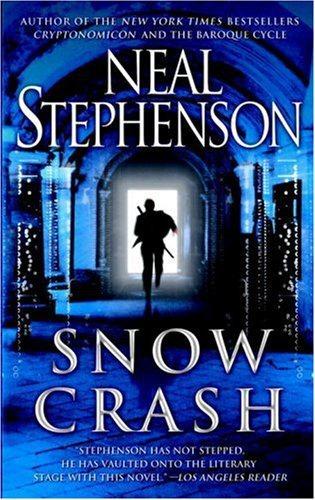
Snow Crash
by
Neal Stephenson
Published 15 Jul 2003
The computer keeps a copy of everything, so that if you get sick or something, it's all there where your co-workers and supervisors can get access to it. If you want to write little notes or make phone doodles, you're perfectly free to do that at home, in your spare time. And there's the question of interchangeability. Fed workers, like military people, are intended to be interchangeable parts. What happens if your workstation should break down? You're going to sit there and twiddle your thumbs until it gets fixed? No siree, you're going to move to a spare workstation and get to work on that. And you don't have that flexibility if you've got half a ton of personal stuff cached inside of a desk, strewn around a desktop.
…
"Okay," he says. "Forget it. Just deliver it, please." Okay, be that way, she mentally says. She mentally says a number of other things, too. The man is an obvious pervert. It's so plain, so open: "And your name is?" Give me a break, man. Names are unimportant. Everyone knows Kouriers are interchangeable parts. It's just that some happen to be a lot faster and better. So she skates out of the office. It's all very anonymous. No Corporate logos anywhere. So as she's waiting for the elevator, she calls RadiKS, tries to find out who initiated this call. The answer comes back a few minutes later, as she's riding out of the office park, pooned onto a nice Mercedes: Rife Advanced Research Enterprises.

How We Got to Now: Six Innovations That Made the Modern World
by
Steven Johnson
Published 28 Sep 2014
Potrait of Aaron Lufkin Dennison That power to measure time was not distributed evenly through society: pocket watches remained luxury items until the middle of the nineteenth century, when a Massachusetts cobbler’s son named Aaron Dennison borrowed the new process of manufacturing armaments using standardized, interchangeable parts and applied the same techniques to watchmaking. At the time, the production of advanced watches involved more than a hundred distinct jobs: one person would make individual flea-sized screws, by turning a piece of steel on a thread; another would inscribe watch cases; and so on. Dennison had a vision of machines mass-producing identical tiny screws that could then be put into any watch of the same model, and machines that would engrave cases at precision speed.
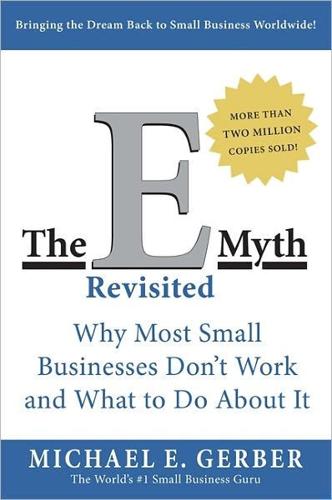
The E-Myth Revisited: Why Most Small Businesses Don't Work and What to Do About It
by
Michael E. Gerber
Published 3 Mar 1995
He began to reengineer McDonald’s decades before the word and the process came into fashion. He began to think about McDonald’s just like Henry Ford must have thought about the Model T. How could the components of the prototype be constructed so that it could be assembled at a very low cost with totally interchangeable parts? How could the components be constructed so that the resulting business system could be replicated over and over again, each business working—just like the Model T—as reliably as the thousands that preceded it? What Ray Kroc did was to apply the thinking behind the Industrial Revolution to the process of Business Development, and to a degree never before experienced in a business enterprise.
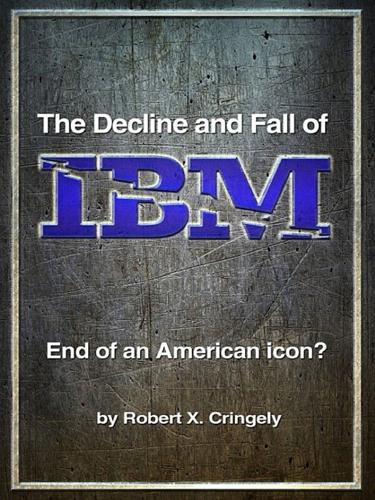
The Decline and Fall of IBM: End of an American Icon?
by
Robert X. Cringely
Published 1 Jun 2014
Both of which followed the same model IBM has been employing for the past several years: 1) Not recognizing that the least expensive sale that can be made is the second (and third) license of a product to a very happy customer, 2) Not realizing where the real revenue is coming from – maintenance and upgrades, and not investing in current highly profitable product line to keep that revenue stream healthy. 3) Thinking that the front line technical staff is interchangeable parts. 4) The belief that “we can acquire our way out of stagnation.” This model is often seen in companies where the executives have been away too long from the trenches, so they don’t accept responsibility for complete delivery of a product. Where failure is glossed over at the top levels, and brutally punished in the ranks.

The Taking of Getty Oil: Pennzoil, Texaco, and the Takeover Battle That Made History
by
Steve Coll
Published 12 Jun 2017
His senior partner in the Lazard merger division was Felix Rohatyn, perhaps Wall Street’s most celebrated investment banker. Rohatyn had made his reputation working for the trailblazing conglomerate ITT during Wall Street’s so-called go-go years, the 1960s. In that era, ITT bought and sold subsidiary companies in unrelated businesses as if they were interchangeable parts of some great industrial kaleidoscope. Rohatyn earned millions shepherding the deals. During the 1970s, through his stewardship of the Municipal Assistance Corporation, Rohatyn gained equally prodigious fame by rescuing New York City from bankruptcy. Later he took charge of the Lazard merger division and began to contribute long essays to the intellectual press about the terrible dangers of merger mania, even as he continued to broker deals for his firm.
…
Maligned for so many years by his family and by the company’s shifting management, Gordon finally was empowered over all of them. Naïvely, he believed that Getty Oil Company belonged to him. 21 A “Manly” Place For perfectly understandable reasons, the great majority of Americans in the early 1980s regarded the nation’s large oil companies as the more or less interchangeable parts of a monolithic, nearly omnipotent enterprise known colloquially as Big Oil. To the average consumer of gasoline and motor oil, the differences between Exxon, Texaco, Chevron, Gulf, Shell, Mobil, and the rest seemed largely cosmetic—a matter merely of corporate logos, advertising jingles, and celebrity spokesmen.
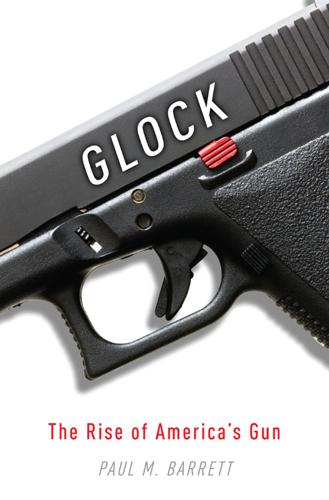
Glock: The Rise of America's Gun
by
Paul M. Barrett
Published 10 Jan 2012
The US government ordered one thousand of the “Walker Colts” for use in the Mexican-American War, allowing Sam Colt to get his company aloft. Colt built one of the most advanced factories of the era, a facility in Hartford that was the first in the firearm field to take full advantage of mass-production techniques, such as the manufacture of interchangeable parts. It was only in the 1850s that urban police departments in the United States began to allow officers to carry handguns, especially following the riots that accompanied the economic panic of 1857. Eager to serve this new market, Colt came out with the New Model Police Revolver, one of the last new products his factory made before its founder’s death in 1862.

Whiplash: How to Survive Our Faster Future
by
Joi Ito
and
Jeff Howe
Published 6 Dec 2016
He proposed that all screws should have a flattened tip and a thread profile of precisely 60 degrees. The U.S. government adopted the “Sellers Thread,” and the railroads followed suit. This simple proposal—the standardization of that most modest of industrial components—inspired the development of interchangeable parts.14 “He helped spark the second Industrial Revolution,” says Tom Knight, the MIT synthetic biologist. “You can’t overstate the importance of standardization to the creative process. An inventor wants to invent, not worry about the threading of his screws.” Tom Knight, Drew Endy, and Ron Weiss were in a quandary.

Reinventing Capitalism in the Age of Big Data
by
Viktor Mayer-Schönberger
and
Thomas Ramge
Published 27 Feb 2018
That would be too constraining. They wanted the freedom to buy the same or similar components and modules from multiple sources, to be able to switch and swap based on availability and demand, and to respond to new information about the features consumers found most appealing. With millions of interchangeable parts being churned out in Chongqing, even small “mom-and-pop” shops could get into motorcycle assembling, dramatically expanding the number of market participants. Using this modular, market-based production process, the price of a motorcycle plummeted to under $200. By 2005, Chinese manufacturers accounted for half of the global production of motorcycles, and in several emerging markets, they overtook Japanese brand names.

Blue Ocean Strategy, Expanded Edition: How to Create Uncontested Market Space and Make the Competition Irrelevant
by
W. Chan Kim
and
Renée A. Mauborgne
Published 20 Jan 2014
In 1909 it dropped to $609, and by 1924 it was down to $290.4 In comparison, the price of a horse-driven carriage, the car’s closest alternative at the time, was around $400. A 1909 sales brochure proclaimed, “Watch the Ford Go By, High Priced Quality in a Low Priced Car.” Ford’s success was underpinned by a profitable business model. By keeping the cars highly standardized and offering limited options and interchangeable parts, Ford’s revolutionary assembly line replaced skilled craftsmen with ordinary unskilled laborers who worked one small task faster and more efficiently, cutting the time to make a Model T from twenty-one days to four days and cutting labor hours by 60 percent.5 With lower costs, Ford was able to charge a price that was accessible to the mass market.

City: Urbanism and Its End
by
Douglas W. Rae
Published 15 Jan 2003
Jerome Manufacturing sent its products into markets across the globe and sold them in the hundreds of thousands on the basis of value for money. Here is a telling story about his pricing policy and its relation to British markets: Around 1840 Chauncey Jerome, a Connecticut clock maker, used interchangeable parts to produce a one-day brass clock for less than fifty cents. He exported some to England in 1842. English customs reserves the right to confiscate goods at their invoice valuations to protect themselves against undervaluation. The clocks were clearly undervalued by English standards, and they were confiscated.
…
This is a manufactory of india 53 U R B A N I S M rubber shoes, in which machinery is applied as far as practicable, and with 175 hands 2,000 pair are daily produced.48 The authors were seeing characteristic Yankee ingenuity applied to complex manufacturing under conditions of cheap energy and expensive labor—with the substitution of machine force for hand craft at every turn, and with increasing reliance on the so-called American system of interchangeable parts. For New Haven, as for many cities sharing its strategic position, this was only the beginning of economic expansion. RAILROAD DEVELOPMENT AND CASCADING CENTRAL CITY INVESTMENT Trains became pivotal at this stage. Steam-powered rail transport appears to have had several birthdays between 1803 and 1812 in the United Kingdom, but the first commercially useful U.S. railroad was evidently the Mauch Chunk Railroad, which carried Pennsylvania coal, as early as 1826.

Tomorrowland: Our Journey From Science Fiction to Science Fact
by
Steven Kotler
Published 11 May 2015
That was then. Now, two trends have changed the game. The first emerged in 2004, when the International Genetically Engineered Machines (iGEM) competition was founded at MIT. iGem’s goal is for teams of high school and college students to build simple biological systems from standardized, interchangeable parts. These standardized parts, known as BioBricks, are chunks of DNA code with clearly defined structures and functions, allowing them to be easily linked together in new combinations, a little like a set of genetic LEGO bricks. These designs are collected in the Registry of Standard Biological Parts, an open-source database accessible to anyone who is curious.

We-Think: Mass Innovation, Not Mass Production
by
Charles Leadbeater
Published 9 Dec 2010
Most creativity emerges when different points of view are held in reciprocal tension, so that they play off one another, eventually evolving into a new idea. The idea for Henry Ford’s revolutionary moving assembly line did not simply spring to life in his head in a darkened room after months of inner reflection. Ford’s innovation came from a team who borrowed and blended ideas and techniques: from a machine-tool industry that used interchangeable parts; from meat-packing which used a moving line to cut up carcasses; and – for scheduling techniques – from the railroads. Most advances in 20th-century science came from creative conversations that blended ideas. Werner Heisenberg’s conversations with Neils Bohr and other physicists in Copenhagen in the 1920s paved the way for quantum mechanics and other theories that led not just to the nuclear bomb but to many advances in modern electronics.
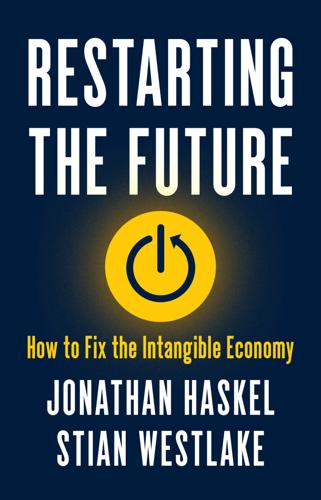
Restarting the Future: How to Fix the Intangible Economy
by
Jonathan Haskel
and
Stian Westlake
Published 4 Apr 2022
Governments, along with nongovernmental bodies such as universities, fund or subsidise education and training, R&D, and artistic and creative content for the benefit of firms and citizens. They also invest in intangibles for their own benefit, and some of these intangibles have wide and important spillovers. (Two examples are the US Armories’ development of manufacturing systems based on interchangeable parts in the nineteenth century and the development of semiconductors for use in ballistic missiles.) Governments also manage systems of intellectual property rights (IPRs), including patents, copyrights, and trademarks. Governments and Spillovers If spillovers worked in a straightforward way, we would have two clear methods to increase intangible investment and improve productivity and growth.

Nuts and Bolts: Seven Small Inventions That Changed the World (In a Big Way)
by
Roma Agrawal
Published 2 Mar 2023
Henry Maudslay (born in 1771) invented the first practical metal-cutting lathe. Before this, small metal components for machines were made manually, and therefore had an inherent inconsistency. But his machine manufactured stuff with consistent and precise measurements, opening up the world of interchangeable parts. Now components could be churned out in vast quantities with confidence that any of those components would fit where they needed to. The idea of mass production was foundational for the Industrial Revolution, and led to the ability to make particularly thin and small things like screws, gears, springs, and wire.
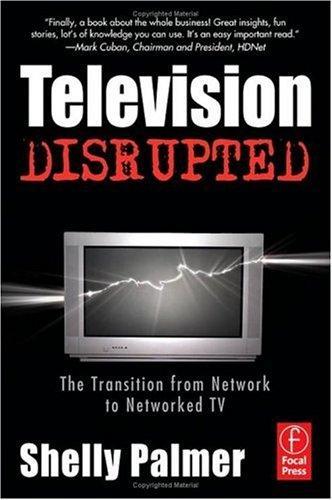
Television disrupted: the transition from network to networked TV
by
Shelly Palmer
Published 14 Apr 2006
During this technological transition, Armies and Navies were still using tactics developed at a time when you needed to see your enemy to kill them. Unfortunately, the generals of the day did not fully understand the power and accuracy of the newer weapons they were using. The Model 1861 Springfield Musket was one of the shoulder arms of choice for the Civil War foot soldier. It had a rifled bore, interchangeable parts, percussion cap ignition and it was extremely accurate and dependable. Weighing just 9.25 lbs, this 58.5 inch workhorse came with a particularly nasty, triangular 21-inch socket bayo-net. The unique attribute of this most lethal weapon was the .58 calibre conical minie ball that it fired at a remarkable 950 feet per second.
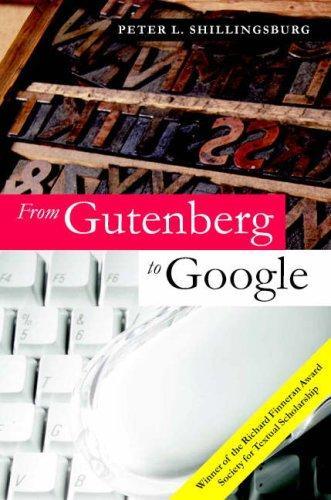
From Gutenberg to Google: electronic representations of literary texts
by
Peter L. Shillingsburg
Published 15 Jan 2006
The disadvantage of industry standards, generally speaking, is that as research and development take place, regardless of the field, situations will arise in which one will want to do something that was not foreseen when the standards were set and that is not allowed by those standards. The advantage of standards, if they are flexible and versatile enough, is that they make it possible to share services and interchange parts without affecting the functionality of the whole or of other parts. A modular approach to the functions of an electronic edition/archive/knowledge site may help us achieve the flexibility and compatibility we want. An outline of the editorial and reader functions and the types of materials and sets of information that affect either the editing or the reading process is set out here as an indication of the areas for which software is needed.

The Manager’s Path
by
Camille Fournier
Published 7 Mar 2017
Successful groups can be as large as 10 or 15, but only when they are in fact composed of several smaller subgroups which perform specific parts of the task, and whose members overlap with each other so that knowledge of what the different subgroups are doing can be passed around easily. 4. There is a low degree of skill specialization. Not everyone has to be able to do everything, but everything must be able to be done by more than one person. Thus no one is indispensable. To a certain extent, people become interchangeable parts. Here Freeman describes a common scenario for many early-stage startups. Even when the overall company grows beyond the small group, the engineering team often pushes itself to stay unstructured. Hiring “full stack” engineers who are exclusively sourced from the professional and social networks of the current team results in low skill specialization and high homogeneity.

Jony Ive: The Genius Behind Apple's Greatest Products
by
Leander Kahney
Published 14 Nov 2013
Soon after completing the Lindy project, Jony had an idea to simplify the design of Apple’s bulky cathode-ray tube (CRT) monitors, which were perhaps the least sexy of Apple’s products and among the most expensive to manufacture. Because of their size and complexity, the molds for each of the plastic monitor housings—and there were dozens of models at the time—could cost more than a million dollars to tool. To save money, Jony came up with the idea of a new case design with interchangeable parts, which could be adapted for several monitor sizes. Previously, monitor cases came in two parts: the bezel (a face frame that cradles the front of the cathode-ray tube) and the bucketlike housing that encloses and protects the CRT’s back. Jony’s idea was to split the case into four parts: the bezel, a mid-bucket and a two-part back bucket.

The Wealth of Humans: Work, Power, and Status in the Twenty-First Century
by
Ryan Avent
Published 20 Sep 2016
The trained mechanics would then go to work on the parts, reshaping them to fit each automobile: cutting, smithing and welding, repeatedly, in a process that was slow and very expensive.4 Henry Ford was famously determined to wring inefficiency out of this process. He settled on one design of automobile and mass-produced identical, interchangeable parts to a high degree of precision. He then borrowed an idea from the meat-processing industry. At the time, meat packers in Chicago worked along a ‘disassembly line’. Carcasses hanging on hooks attached to a powered belt travelled past successive butchery stations. At each, lines of cleaver-wielding workers hacked off specific cuts of meat.
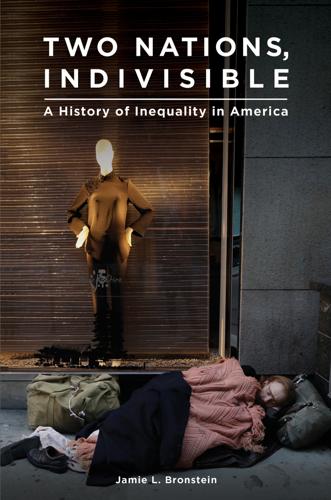
Two Nations, Indivisible: A History of Inequality in America: A History of Inequality in America
by
Jamie Bronstein
Published 29 Oct 2016
Ironically, at the same time that these conventions excluded blacks and women from political participation, they began to acknowledge the personhood of corporations.89 For most antebellum Americans, the exclusion of enslaved African Americans required little justification. Historian Edward Baptist emphasizes that enslaved African Americans were considered to be completely interchangeable parts in the system of Southern agricultural production no matter what skills they might possess. For example, when it served their financial calculations, plantation owners forced slaves to migrate away from their families. By the 1820s, slave traders had become professionalized, purchasing enslaved people in large numbers from the upper South and selling them to areas like Georgia and Louisiana in which there was large demand for forced labor.90 Whether working as cotton field hands or overseeing other crops, slaves generally worked under the gang labor system, from sunup to sundown, between five and six days a week.91 To maintain productivity, planters used physical punishment to create levels of productivity among enslaved workers that would later be unknown among free workers doing the same tasks.92 Economic inequality was especially severe in the antebellum South.

Reskilling America: Learning to Labor in the Twenty-First Century
by
Katherine S. Newman
and
Hella Winston
Published 18 Apr 2016
Aimed at students interested in manufacturing, construction, and engineering, the curriculum embeds as much math as possible into the kinds of practice problems real workers in these fields encounter. For example, they wanted students to figure out how “manufacturers determine the precision of measurement needed for the production of interchangeable parts,” or how to use what they learned about energy transfer and conservation to determine what kind of insulation is most efficient and cost-effective in a building.13 Instructors designed problem sets that required students to figure out how three-dimensional items are produced from two-dimensional patterns, how to use math to design a set of stairs within a specified area, or how to calculate the electrical power needs of an office tower.
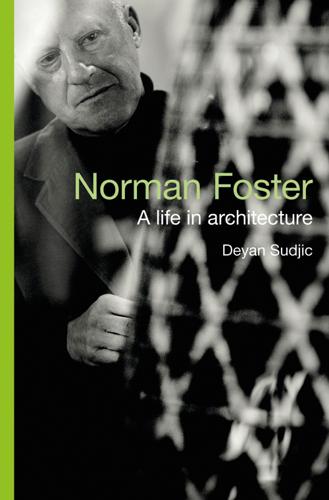
Norman Foster: A Life in Architecture
by
Deyan Sudjic
Published 1 Sep 2010
This memory of the avant garde of the 1920s was blended with a flavour of the house that Charles and Ray Eames designed for themselves in Santa Monica in the 1940s, and given a sharp new twist for the 1970s. Like the Maison de Verre, every piece of the Foster house would have been purpose made. Like Charreau, who was fascinated by pivoting mechanical screens and partitions and used them to transform the interior of the Maison de Verre, Foster treated furniture as a kit of interchangeable parts. Like the Eames house, Foster’s project was conceived as a kind of proving ground, putting new ideas to the test in laboratory conditions before adapting them for everyday use. The house would have had a single main volume, with a five-metre-high ceiling, allowing for mezzanine levels. The walls would be made from blocks of glass, and the steel structure, punched full of circular holes, would be left on show.
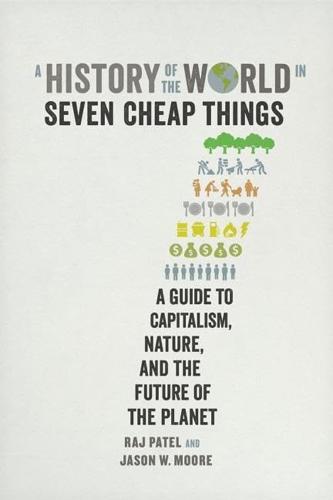
A History of the World in Seven Cheap Things: A Guide to Capitalism, Nature, and the Future of the Planet
by
Raj Patel
and
Jason W. Moore
Published 16 Oct 2017
These early modern sugar plantations not only were highly mechanical, with large, fuel-intensive boilers and heavy-duty rolling mills to extract cane juice from stalks, but also served as powerful drivers of “simplification”: of the work process, as workers (slaves) were given simplified tasks, and of the land itself, which was reduced to a cane monoculture. Just as autoworkers on the line assemble simplified, interchangeable parts and fast-food workers manufacture standardized burgers, so did African slaves work specialized jobs in a simplified landscape of sugar monoculture. The connections among work, nature, and this modern logic of simplification give us a way of grasping a longer continuity. Early capitalism’s great commodity frontiers—of sugar, silver, copper, iron, forest products, fishing, and even cereal agriculture—were zones of experimentation in strategies of labor control in Europe and its colonies, and always spaces of conflict.

Powerhouse: The Untold Story of Hollywood's Creative Artists Agency
by
James Andrew Miller
Published 8 Aug 2016
Once I was at CAA, I began to see that the intimacy with my clients that I had always valued wasn’t so valued there. It seemed that once the artist became a client of CAA, the individual agent was a bit faceless. They set it up so it’s the agency that represents you and the client has a lot of interchangeable parts. Well, I didn’t want to be an interchangeable part of a big company that somebody else owned. I want to be close with my clients and a passionate advocate for them. I see a continuum for any agent. There’s the artist on one side, and the world of finance and distribution on the other side. At CAA, most of the successful people are in the middle; I have always placed myself more at the artist’s side.

The Wisdom of Crowds
by
James Surowiecki
Published 1 Jan 2004
If someone bought a lathe from a machinist, that person had to come back to the machinist for screw repairs or replacements. But if screws became interchangeable, customers would need the craftsmen less and would worry about the price more. Sellers understood the fear. But he also believed that interchangeable parts and mass production were inevitable, and the screw he designed was meant to be easier, cheaper, and faster to produce than any other. His screws fit the new economy, where a premium was placed on speed, volume, and cost. But because of what was at stake, and because the machinist community was so tight-knit, Sellers understood that connections and influence would shape people’s decisions.

Utopia Is Creepy: And Other Provocations
by
Nicholas Carr
Published 5 Sep 2016
It will manifest itself in many strange and wonderful ways. And I am embracing it; for me, for my kids, and for the rest of my life. I guess you see what you want to see. When I look around MySpace I don’t see much that’s strange and wonderful—or deeply disturbing, either. I wish I did. What I see is a dreary sameness, a vast assemblage of interchangeable parts. Everything feels secondhand: the pimps-and-hoes poses before the cameraphone, the cliché-choked babbling. It’s sad to see so much effort put into self-expression with so little to express. Humanity in the raw? No, this is humanity boiled to blandness in the tin pot of personalization. There was another blogger who responded to Scott Karp’s post by comparing the effect of MySpace to that of Elvis’s gyrating hips back in the fifties.
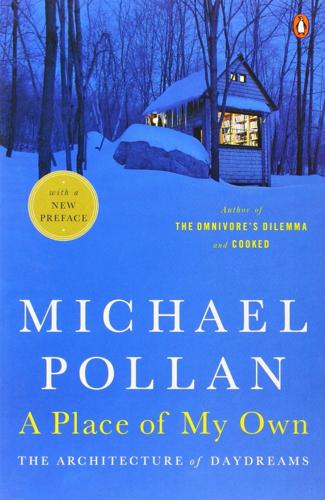
A Place of My Own: The Architecture of Daydreams
by
Michael Pollan
Published 15 Jan 1997
Balloon framing doesn’t acquaint you with the particularities of wood in the way post-and-beam framing does, and it’s easy to forget these are trees you’re working with. It’s geometry you worry about—with so many more elements to keep square—rather than the idiosyncrasies of wood. In this sense two-by-four framing is a more abstract kind of work than timber framing, with an industrial rhythm that places a far greater premium on the repetitive task and the interchangeable part. Which is why an amateur like me could frame a knee wall in an afternoon without help from anyone. What I was discovering in the course of framing my little building, an entire culture had discovered in the middle of the last century. Contemporary accounts of the new technology brim with a kind of giddiness at the rapid feats of construction it had suddenly made possible—houses put up in days, whole towns rising in weeks.
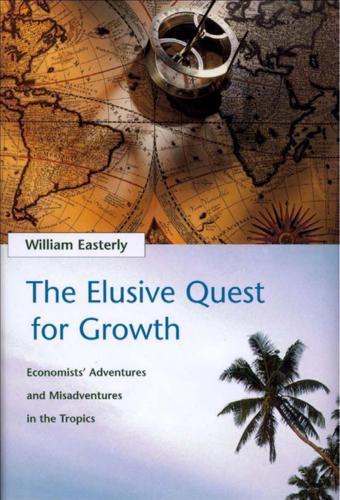
The Elusive Quest for Growth: Economists' Adventures and Misadventures in the Tropics
by
William R. Easterly
Published 1 Aug 2002
On the Continent, in contrast, the Germans introduced their Tecknische Hockscku2e.22The American spinning industry went ahead with the introduction of the new technique of ring spinning, while Lancashire stuck with the old technology of mule spinning.23After three worker strikes in the 1850s, the English prohibited the introduction of the sewing machine into shoemaking in Northampton. Workers in the Birminghamgun-makingindustry blocked the introduction of the great breakthrough of interchangeable parts. English workers also blocked newmachinery in carpetmaking, glassmaking, and metal~orking.~~ Thenwe see the same thing happening to America, losing its lead to Japan in the 1970s and 1980s. Now Japan is stagnating, and America-after a big shakeup-is in the lead again, although both America and Japan are growing more slowly than they were a few decades ago.
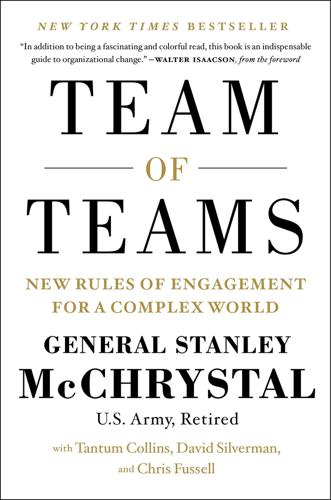
Team of Teams: New Rules of Engagement for a Complex World
by
General Stanley McChrystal
,
Tantum Collins
,
David Silverman
and
Chris Fussell
Published 11 May 2015
Friedrich Wilhelm August Heinrich Ferdinand von Steuben (often referred to as Baron von Steuben), a profane Prussian-born officer who joined the troops at Valley Forge, introduced a training program for drill that was credited with transforming the efficiency and battlefield effectiveness of the fledgling Continental Army. To achieve efficiency and predictability, armies have long dressed, drilled, and disciplined men into becoming interchangeable parts of a military machine. Beginning at enlistment, conscription, or sometimes impressment, soldiers are groomed and outfitted to look as much alike as possible. Uniforms, besides allowing easy identification on the battlefield, also impact behavior. Frederick the Great affixed otherwise useless buttons to the sleeves of uniform coats to stop his soldiers from wiping their noses with them.

A World Without Work: Technology, Automation, and How We Should Respond
by
Daniel Susskind
Published 14 Jan 2020
(He did not mean this metaphorically: child labor was an acceptable practice back then.)13 And as the economic historian Joel Mokyr notes, this trend was not confined to the world of cotton and cloth: “First in firearms, then in clocks, pumps, locks, mechanical reapers, typewriters, sewing machines, and eventually in engines and bicycles, interchangeable parts technology proved superior and replaced the skilled artisans working with chisel and file.”14 At the turn of the twenty-first century, then, the conventional wisdom among economists was that technological progress was sometimes skill-biased, at other times unskill-biased. In either case, though, many economists tended to imagine that this progress always broadly benefited workers.

The Measure of Progress: Counting What Really Matters
by
Diane Coyle
Published 15 Apr 2025
Process innovations are often overlooked in discussions of productivity; attention is more readily captured by the excitement of scientific discovery and new devices. However, time and again since the late eigh teenth c entury there have been significant advances in processes of production. The American system of standardised interchangeable parts in the 1800s, the factory system l ater that century as the Industrial Revolution got into top gear, the assembly line of the early to mid-twentieth century, and the T oyota lean production revolution of the 1970s all represent examples of the growth p rocess. More recently, the creation of global production networks starting around 1980 and digital platform models from the 2000s have similarly reorganised the processes of production and exchange (Table 2.1).
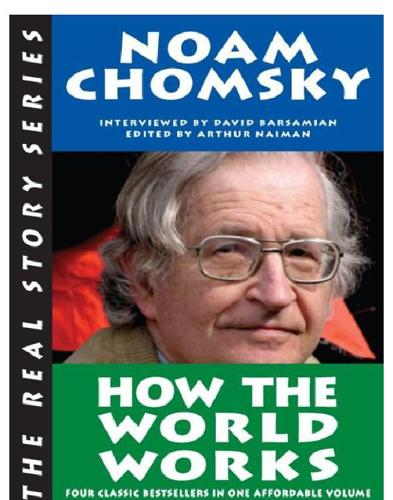
How the World Works
by
Noam Chomsky
,
Arthur Naiman
and
David Barsamian
Published 13 Sep 2011
An aerospace industry analyst at Merrill Lynch pointed out that “this effort to broaden the industrial base that supports the military has been going on for a couple of years, but the Pentagon’s decision [about the new Joint Strike fighter] was a major milestone in this trend.” In fact, “this effort” has been has going on not for “a couple of years” but for half a century, and its roots lie much deeper, in the crucial role of the military in developing the basic elements of the “American system of manufacturing” (standardization and interchangeable parts) in the 19th century. In other words, a major purpose of military production and procurement, along with research and development in government labs or publicly funded private industry (by the Department of Energy and other agencies, as well as the Pentagon) is to subsidize private corporations.

Whole Earth Discipline: An Ecopragmatist Manifesto
by
Stewart Brand
Published 15 Mar 2009
The idea is to “play Nature,” to reverse-engineer the tangled genetic code of eons and “refactor” it—write fresh genetic code that is manageable, that actually does have intelligent design instead of the infinity of moronic kludges and patches that timeless evolution confers. George Church, a leading molecular geneticist at Harvard, says that biology is at last becoming “an engineering discipline, with interchangeable parts, hierarchical design, interoperable systems, specification sheets—stuff that only an engineer could love.” Rob Carlson reports that the minimalist approach to genome design is paying off: “Most synthetic DNA constructs are usually composed of just a few genes, with cutting edge designs topping out at about 15 genes.
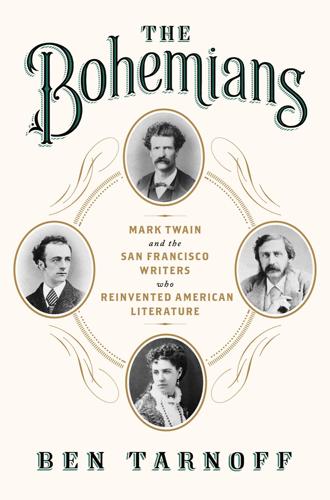
The Bohemians: Mark Twain and the San Francisco Writers Who Reinvented American Literature
by
Ben Tarnoff
Published 20 Mar 2014
Dime novels were the lowbrow equivalents of Harte’s tales: lurid morsels of frontier melodrama, wrapped in cheap paper and popular in eastern cities. They offered parables of rugged individualism and wide-open spaces to urban readers whose lives were increasingly absent of both. They appealed to an era in which tenements and factories and corporations and bureaucracy were aggregating human beings into a mass of interchangeable parts. They provided a national epic of conquest, of white settlers subduing the wilderness and the Indians, to men whose masculinity seemed to be crumbling under the assault of the machine age. As the nineteenth century wore on, America’s infatuation with the “Wild West” would only grow. This set the scene for Harte’s success with eastern readers.
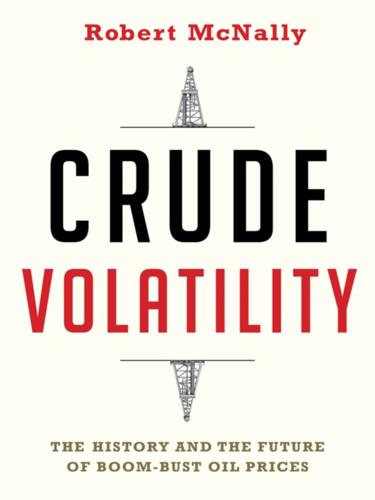
Crude Volatility: The History and the Future of Boom-Bust Oil Prices
by
Robert McNally
Published 17 Jan 2017
So it was not until 1913, when Winston Churchill convinced Britain’s navy to switch from coal to oil, and the U.S. Navy soon followed suit.5 While ships got the jump on oil use, automobiles quickly caught up and soon became the dominant users of oil in the transportation sector. Henry Ford, with the introduction of the assembly line and interchangeable parts, made the first mass-produced, affordable cars and catapulted the United States to the top of the world’s automobile producers and consumers. The Model-T appeared in 1908; in 1910, gasoline sales outpaced kerosene and other illuminant products for the first time. The amount of gasoline refined from a barrel of crude oil (the “yield”) increased from 10 percent in 1880 to 35 percent in 1926.
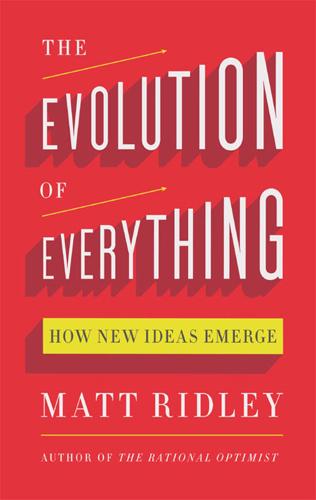
The Evolution of Everything: How New Ideas Emerge
by
Matt Ridley
Crowding out private schools Some years later the British went down the same route, mainly to create clerks to run their empire. The British, as Sugata Mitra said in his remarkable 2013 TED lecture, set out to create a big computer with which to operate their far-flung possessions, an administrative machine made of interchangeable parts, each of which happened to be human. In order to turn out those parts, they needed another machine, an educational one, which would reliably produce people who could read quickly, write legibly, and do addition, subtraction and multiplication in their heads. As Mitra put it, ‘They must be so identical that you can pick one up from New Zealand and ship him to Canada and he would be instantly functional.’
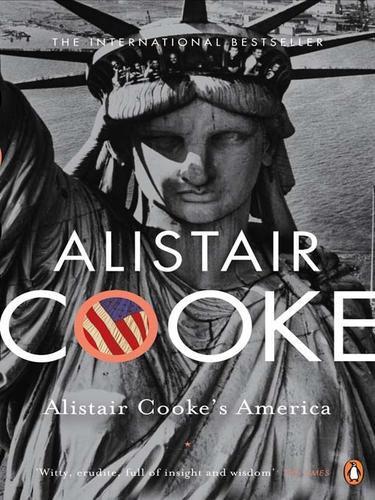
Alistair Cooke's America
by
Alistair Cooke
Published 1 Oct 2008
But for nearly three years there were no muskets at all, and he was a joke in New England and something of a fraud in Washington. But Whitney had seen a labor problem where formerly there was none, and he had aired the method of solving it. Within ten years a man named Hall, subsidized by the government in one of its ordnance factories, produced the assembly line product. The production of interchangeable parts – screws and threads for muskets, tackle blocks, and planking for ships – had already been accomplished in England and France. Yet these were still being handled by skilled men, and Whitney’s standardized parts could be fitted by drones with no other skill. He had, in fact, introduced in his factories a wholly new system: division of labor, a system unwelcome in Europe since it threatened the craftsmen and the long tradition of apprenticeship.

Tools for Thought: The History and Future of Mind-Expanding Technology
by
Howard Rheingold
Published 14 May 2000
Babbage outlived her by decades, but without Ada's advice, support, and sometimes stern guidance, he was not able to complete his long-dreamed-of Analytical Engine. Because the toolmaking art of his day was not up to the tolerance demanded by his designs, Babbage pioneered the use of diamond-tipped tools in precision-lathing. In order to systematize the production of components for his Engine, he devised methods to mass-manufacture interchangeable parts and wrote a classic treatise on what has since become known as "mass production." Babbage wrote books of varying degrees of coherence, made breakthroughs in some sciences and failed in others, gave brilliant and renowned dinner parties with guests like Charles Darwin, and seems to have ended up totally embittered.
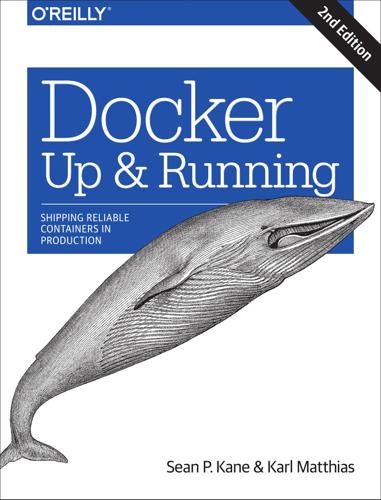
Docker: Up & Running: Shipping Reliable Containers in Production
by
Sean P. Kane
and
Karl Matthias
Published 15 Mar 2018
But even though these platforms wrap more around Docker to provide a more capa‐ ble and complex environment, a simple platform that uses only Docker still provides all of the core process benefits without the added complexity of a larger system. As a company, Docker adopts an approach of “batteries included but removable.” This means that they want their tools to come with everything most people need to get the job done, while still being built from interchangeable parts that can easily be swapped in and out to support custom solutions. By using an image repository as the hand-off point, Docker allows the responsibility of building the application image to be separated from the deployment and operation of the container. What this means in practice is that development teams can build their application with all of its dependencies, run it in development and test environ‐ ments, and then just ship the exact same bundle of application and dependencies to production.

Human Frontiers: The Future of Big Ideas in an Age of Small Thinking
by
Michael Bhaskar
Published 2 Nov 2021
New chemicals from dyes to dynamite, aspirin to fertiliser were harnessed and mass produced. Electricity generation and the electricity network, a general purpose technology surely as significant as any in history, came of age; then advances were made in the manufacturing process itself, a total system exemplified by Fordism with its interchangeable parts and production line. Changes in food supply from the use of nitrates to refrigeration improved quality and length of life; and a revolution in communications media introduced a now familiar informational mix. In the social and political sphere explosive ideas of political equity, democracy and revolution arose; in the aesthetic sphere there was radical experimentation; and in business came new conceptions of private enterprise and the organisation of work.

New Laws of Robotics: Defending Human Expertise in the Age of AI
by
Frank Pasquale
Published 14 May 2020
A lecture course in 2020 may share the same basic pattern as one in 1820 or 1620. For cost-disease scholars, the continuity of professors’ lecturing, or doctors’ physical exams, is suspicious. Why isn’t the school as revolutionized as the farm, the students as robust as new genetically modified crops? Where are health care’s assembly lines, its interchangeable parts and standardized interventions? It is common to witness waste or inefficiency in any large institution, so challenges like these are superficially attractive. But the cost-disease diagnosis is little more than an ensemble of bad metaphors and dubious assumptions. Automation may reign supreme in the making of things or the transporting of them to places, but students and the sick are not products.
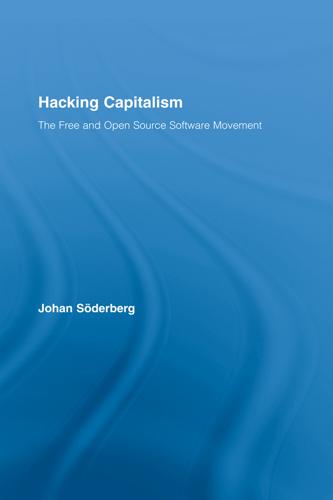
Hacking Capitalism
by
Söderberg, Johan; Söderberg, Johan;
He insisted that the logic of capital is to deskill the workforce, irrespectively if they are employed in a factory or in an office: ”By far the most important in modern production is the breakdown of complex processes into simple tasks that are performed by workers whose knowledge is virtually nil, whose so-called training is brief, and who may thereby be treated as interchangeable parts.”27 Braverman’s contribution to the debate was very influential. In hindsight, however, the rise of new professions, in computer programming for instance, seems to have proven his critics right. They replied that though deskilling of work is present in mature industries, this trend is counterpoised by the establishment of new job positions with higher qualifications elsewhere in the economy.
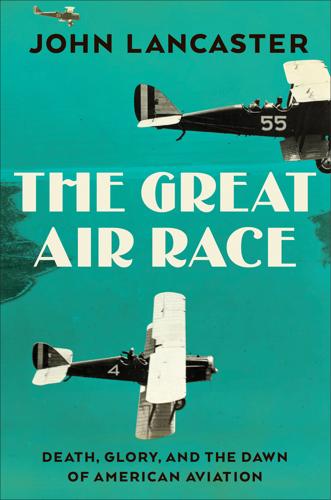
The Great Air Race: Glory, Tragedy, and the Dawn of American Aviation
by
John Lancaster
Published 15 Nov 2022
The men drew heavily on concepts developed by French, British, and German manufacturers, including Mercedes. Nevertheless, the Liberty engine was revolutionary, widely considered the most important American aeronautical advance of the war. Unlike most aircraft engines, which were hand-built like fine Swiss watches, the Liberty was expressly designed for mass production, with interchangeable parts that would make it easy to repair. With a rating of 400 horsepower, the twelve-cylinder Liberty was one of the most powerful aircraft engines yet developed—so big that starting it by hand required three men (one would swing down on the prop as the second pulled the first’s belt or free hand, while the third did the same with the second).

The Arsenal of Democracy: FDR, Detroit, and an Epic Quest to Arm an America at War
by
A. J. Baime
Published 2 Jun 2014
The presses were continuously lubricated by 1,500 gallons of oil each day, the tanks located underneath the floor. Willow Run was designed to build Liberators in five subassemblies—the center wing, the nose and cockpit, the aft fuselage, the tail, and the outer wing—then bring them together for the final product. The interchangeable parts made their way around the plant on a system of twenty-nine miles of conveyors on the ceiling, like upside-down railroads, some rated to carry five tons, some fifteen. The metallurgical laboratory was situated in the southwest area of manufacturing; here bomber parts were heat-treated, chemical-tested, plated, and painted.
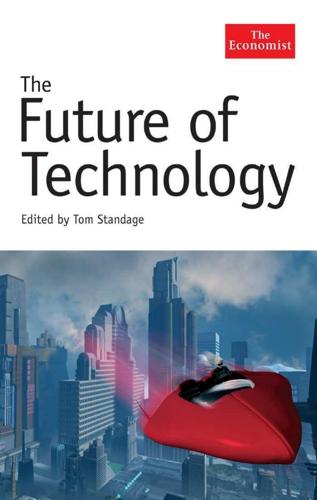
The Future of Technology
by
Tom Standage
Published 31 Aug 2005
Yet it was one of these craftsmen’s leaders who set America’s machine-tool industry on the path of standardisation. In 1864, William Sellers proposed a “uniform system of screw threads”, which later became widely adopted. Without standardised, easy-to-make screws, Mr Sellers’ argument went, there could be no interchangeable parts and thus no mass production. Not every technology sector had such far-sighted leaders. But railways, electricity, cars and telecommunications all learned to love standards as they came of age. At a certain point in their history, it became clear that rather than just fighting to get the largest piece of the pie, the companies within a sector needed to work together to make the pie bigger.

Building and Dwelling: Ethics for the City
by
Richard Sennett
Published 9 Apr 2018
The lack of distinctiveness has become reality in the towers of Madame Q’s Shanghai, or in the new cities in South Korea whose identical buildings are identified by huge numbers displayed on flags outside so that people can know in which building they live. In systems terms, such an environment is closed because of its interchangeable parts. An open system, by contrast, has parts which cannot be substituted for one another. But imagine a city of five million people with, say, 10,000 centres each of which looks nothing like any other: that variety of forms no designer could devise and no urbanite could make sense of. So how can you make places distinctive in a big city, instead of impossibly unique?

The Abandonment of the West
by
Michael Kimmage
Published 21 Apr 2020
An itinerant life among empires confronted Conrad with modern politics in his maritime career and with the human consequences of imperialism, which gave him his great fictional themes. Conrad the fiction writer was an ideal object of scrutiny for Said the critic and scholar. Conrad’s 1899 novella Heart of Darkness laced the conquering, unsettling West with ambiguity, making interchangeable parts of civilization and barbarism, and as for so many late-twentieth-century readers, Heart of Darkness was commentary on the Vietnam War for Said. In 1979, Conrad’s literary-political parable was reworked into the archetypal Vietnam film Apocalypse Now.25 Said published his own deconstruction of the West, Orientalism, in 1978.
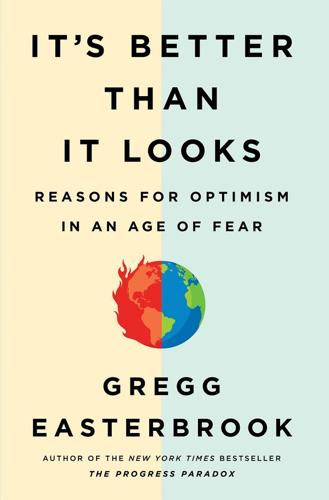
It's Better Than It Looks: Reasons for Optimism in an Age of Fear
by
Gregg Easterbrook
Published 20 Feb 2018
In Why the Allies Won, historian Richard Overy called the fact that the Luftwaffe had 425 aircraft types while the US Air Force (then with a different name) had fifteen one of the deciding aspects of the war. What in the nineteenth century was dubbed the “American system of manufacturing” focused on standardized machine tools and jigs that rolled out products with interchangeable parts. By the onset of World War II, democracies had switched to this system; Germany did not adopt American-style manufacturing until 1943, when it was too late; Japan did not adopt standardized manufacturing until after the war. As the Northwestern University historian Michael Sherry wrote in 1987, “Fascist totalitarianism produced far less centralization than the Allies achieved.”

Bourgeois Dignity: Why Economics Can't Explain the Modern World
by
Deirdre N. McCloskey
Published 15 Nov 2011
It was not until well after British electricity and then the telegraph in the 1840s, or German organic chemistry and then the artificial dyes and the medicines in the 1890s, and Italian radio and the communication with the masses in the 1920s, that Science started to pay back seriously its debt to Technology. Merely “started.” Not a great deal of the economy was involved until late in the twentieth century.24 Until well into the nineteenth century the most important changes in technique had little to do with scientific theory. Railways. Interchangeable parts. Sewerage in cities. Iron hulls of ships. Assembly lines. Bituminous pavement. The classic case is the steam engine. Although the discovery of the atmosphere clearly played a role in the early steam engine, most of its betterments were matters of tinkering, and high and low skills of machine-making.
…
See betterment innovism: accumulation and, 101, 105; trade-tested betterment, 93–94 Inoue, Kyoko: on jinkaku, dignity, xiv, 651n2 institutions: as cause, xii; conclusion on, 650; conservative, 361; dance, 115; without ethics, 665n5; informal, 114; neo-institutionalist definition, 113; Searle and, 125; and social ethics, xxiv, xxvi, chaps. 13–15. See also North, Douglass intellectual property: and entry in the third act, 40; NBER and blockaded entry, 559. See also copyright; patents interchangeable parts, 649 intersubjectivity: Taylor on conjective, 664n18 investment. See accumulation of capital Iowa: ethics in public administration, xxiv, 138; social ethics, xxiv Iowa City, 230, 599 Ireland: Common Market subsidies of, 140; English conquest of, 106; Malthusian case, 16; potatoes, 16.
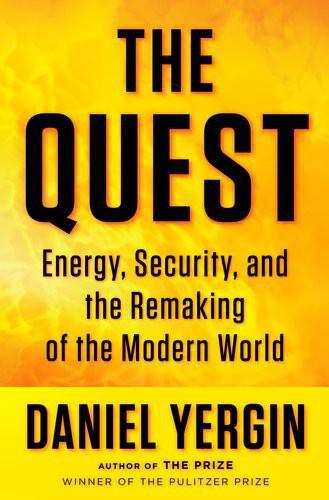
The Quest: Energy, Security, and the Remaking of the Modern World
by
Daniel Yergin
Published 14 May 2011
In 1794 George Washington, unhappy with the performance of muskets, established a group of national armories, thus launching what was the first R&D initiative by the U.S. government. The objective was to replace rifles that were laboriously handmade by individual craftsmen with ones that were produced with interchangeable parts, thus greatly simplifying and speeding up the manufacturing of rifles. This innovation in interchangeable parts became known as the American system of manufacturing and was critical to America’s rise as an industrial power.5 But it was only after World War II that the government took on a much broader responsibility for supporting basic research and the whole R&D system.
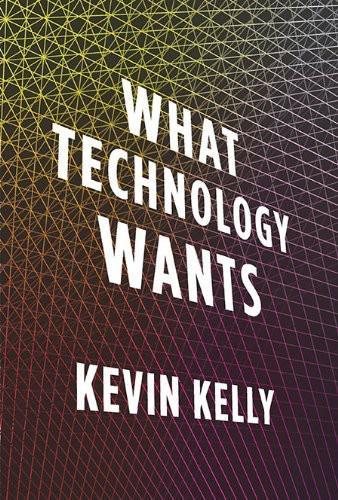
What Technology Wants
by
Kevin Kelly
Published 14 Jul 2010
Via peer-reviewed correspondence and, later, journals, science offered a method of extracting reliable information, testing it, and then linking it to a growing body of other tested, interlinked facts. This newly ordered information—what we call science—could then be used to restructure the organization of matter. It birthed new materials, new processes for making stuff, new tools, and new perspectives. When the scientific method was applied to craft, we invented mass production of interchangeable parts, the assembly line, efficiency, and specialization. All these forms of informational organization launched the incredible rise in standards of living we take for granted. Finally, the latest transition in the organization of knowledge is happening now. We inject order and design into everything we manufacture.
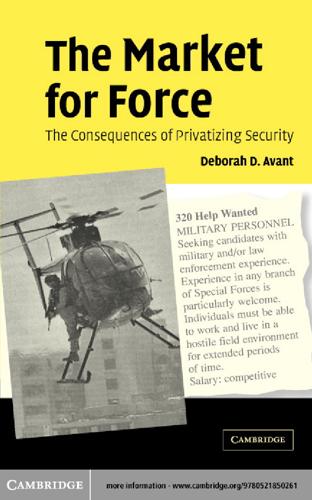
The Market for Force: The Consequences of Privatizing Security
by
Deborah D. Avant
Published 17 Oct 2010
Regional Organizations and the Consolidation of Democracy,” American Journal of Political Science Vol. 46, No. 3 (July 2002): 611–22. 114 The Market for Force The US government has a long history of contracting for military services.166 Up until the beginning of World War II, most of these services were in the area of logistics support and weapons procurement. Contractors were used to supply basic rations, make uniforms, transport supplies, etc.167 Also, as the arms industry began to grow, the government turned to private suppliers for small arms, bayonets, and ramrods (the most famous of these contractors was Eli Whitney, who supplied interchangeable parts.)168 During World War II, the US government contracted out additional services such as constructing airfields and training pilots.169 With the advent of the Cold War, US interest in stabilizing foreign governments under siege from communist insurgent forces opened more opportunities for private firms.

The End of Work
by
Jeremy Rifkin
Published 28 Dec 1994
Ellis became the first Englishman to own an automobile. 13 Less than twenty years later Henry Ford was producing thousands of identical cars each day at a fraction of the cost Ellis paid for his handcrafted vehicle. Ford was the first automaker to mass produce a standardized product using interchangeable parts. Because the individual components were always cut and shaped exactly the same, they could be attached to each other quickly and simply, without requiring a skilled craftsman to put them together. To quicken the process of attachment, Ford introduced a moving assembly line to the factory floor-an innovation he first observed in the giant slaughterhouses of the Chicago stockyards.

Digital Apollo: Human and Machine in Spaceflight
by
David A. Mindell
Published 3 Apr 2008
They recognized the effective use of electronics to be as much about mechanical packaging as about circuit design.13 Hall explored new areas in construction, stacking modules like ‘‘welded cordwood,’’ and wire-wrapping the interconnections. Hall also designed the computer circuits so they all shared a single type of germanium transistor—effectively implementing the interchangeable-parts philosophy that had characterized mechanical manufacturing for more than a century. Transistors, barely a ‘‘Braincase on the tip of a firecracker’’ 99 decade old at this point, could still be suspect in reliability, requiring rigorous qualification to be included in military hardware. In Hall’s design, only one type of transistor would have to meet the intense testing and support criteria for the missile.

The Future of the Professions: How Technology Will Transform the Work of Human Experts
by
Richard Susskind
and
Daniel Susskind
Published 24 Aug 2015
1 See Chapters 2 and 3 for references and further details of these examples. 2 We use the terms ‘increasingly capable systems’ and ‘increasingly capable machines’ interchangeably throughout the book. More generally, unless the context indicates otherwise, we also use ‘systems’ and ‘machines’ interchangeably. Part I Change 1 The Grand Bargain There are two possible futures for the professions. The first is reassuringly familiar. It is a more efficient version of what we already have today. On this model, professionals continue working much as they have done since the middle of the nineteenth century, but they heavily standardize and systematize their routine activities.
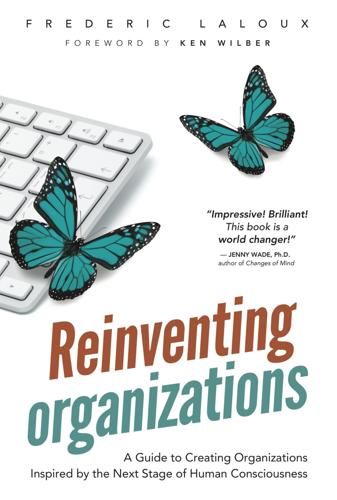
Reinventing Organizations: A Guide to Creating Organizations Inspired by the Next Stage of Human Consciousness
by
Frederic Laloux
and
Ken Wilber
Published 9 Feb 2014
Workers do not want to be responsible for their actions or for decisions that affect the performance of the organization. Workers need care and protection, just as children need the care of their parents. Workers should be compensated by the hour or by the number of “pieces” produced. Bosses should be paid a salary and possibly receive bonuses and stock. Workers are like interchangeable parts of machines. One “good” worker is pretty much the same as any other “good” worker. Workers need to be told what to do, when to do it, and how to do it. Bosses need to hold them accountable.45 These assumptions sound harsh when they are put into words, and yet they are the basis for the structures and practices we have in organizations today.

Jennifer Morgue
by
Stross, Charles
Published 12 Jan 2006
What do they have to do with things" "If you'd ever studied knife fighting, one of the things your instructors would have drilled into you is that you always clean your blade after using it, and if possible sharpen and lubricate it, before you put it away. Because if you want j to use it again some time, you don't want to find it stuck to the scabbard, or blunt, or rusted. When you use a tool, you take care to maintain it, boy, that's common sense. From the organization's point of view ... well, you're not just an interchangeable part, a human resource: we can't go to the nearest employment center and hire a replacement for you just like that. You've got a unique skill mix that would be very difficult to locate — but don't let it go to your head just yet — which is why we're willing to take some pains to help you get over it.

Smart Cities: Big Data, Civic Hackers, and the Quest for a New Utopia
by
Anthony M. Townsend
Published 29 Sep 2013
In a 2008 interview, he described this process of “combinatorial innovation”: “if you look historically, you’ll find periods in history where there would be the availability of . . . different component parts that innovators could combine or recombine to create new inventions. In the 1800s, it was interchangeable parts. In 1920, it was electronics. In the 1970s, it was integrated circuits. Now what we see is a period where you have Internet components, where you have software, protocols, languages, and capabilities to combine these component parts in ways that create totally new innovations.”37 Focusing on the inputs to technology innovation instead of the outputs tells a very different story of how earlier breakthroughs came about, the technological and economic significance of the Internet, and the prospects for a new age of innovation in our own future.

The Patient Will See You Now: The Future of Medicine Is in Your Hands
by
Eric Topol
Published 6 Jan 2015
OpenNotes is like a new medicine that is beneficial to most patients but will harm some; how can we identify those patients and then address the situation openly and honestly?”11 The Model T analogy may be too optimistic. At least that car was practical, affordable, versatile, and transformational. It was a single product with interchangeable parts—to reduce waste and make it possible for unskilled workers to mass-assemble cars. In contrast, we have over one thousand certified EMR vendors in the United States, each with proprietary software that usually won’t work with records created by different software. With the fragmentation of health care in the United States, the majority of individuals see physicians in multiple health systems with different EMR vendors.
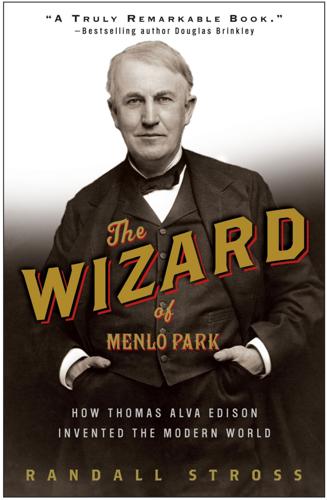
The Wizard of Menlo Park: How Thomas Alva Edison Invented the Modern World
by
Randall E. Stross
Published 13 Mar 2007
Who would have guessed that the announcement of the phonograph’s invention would be sufficient to propel him in a matter of a few days from obscurity into the firmament above? Any one of dozens of technical breakthroughs that had come before had much greater impact on the U.S. economy. Their creators were more likely candidates for the top rank of fame. Eli Whitney’s cotton gin, or his muskets made with interchangeable parts, Robert Fulton’s steamboat, John Jethro Wood’s iron-tipped plough, Cyrus McCormick’s reaper, Charles Goodyear’s rubber-manufacturing process, Samuel Morse’s telegraph, Elisha Graves Otis’s elevator, Lucien Smith’s barbed wire, and Alexander Graham Bell’s telephone, which appeared one year before the phonograph—these were prior inventions that fundamentally changed the U.S. economy.

Factory Man: How One Furniture Maker Battled Offshoring, Stayed Local - and Helped Save an American Town
by
Beth Macy
Published 14 Jul 2014
To complicate matters, the furniture makers in Mount Airy were real craftsmen, people who had only recently stopped employing the old bench-made building process. Rather than using conveyor belts and Henry Ford–style assembly lines, these guys worked at half the speed of the line workers in Bassett, and they rarely used standard interchangeable parts. Until Bassett bought the companies, a customer could mail in a picture of a piece of furniture he saw in a magazine and designate the color he wanted, and the old companies would actually complete the order—even if it was just a single chair. Like their furniture-making predecessors in Grand Rapids, they took pride in it too.

Work: A History of How We Spend Our Time
by
James Suzman
Published 2 Sep 2020
And as far as he was concerned, many of the challenges faced by people living in complex urban societies had to do with the fact that in modern cities people did all sorts of different kinds of work. Durkheim believed that a crucial difference between ‘primitive’ societies and complex modern ones was that where simple societies operated like rudimentary machines with lots of easily interchangeable parts, complex societies functioned more like living bodies and were made up of lots of very different, highly specialised organs that, like livers, kidneys and brains, could not be substituted for one another. Thus chiefs and shamans in simple societies could simultaneously be foragers, hunters, farmers and builders, but in complex societies lawyers could not moonlight as surgeons any more than admirals could moonlight as architects.

Twitter and Tear Gas: The Power and Fragility of Networked Protest
by
Zeynep Tufekci
Published 14 May 2017
The printing press was the center of a world-historical transformation involving forces of production, communication, and media, in some ways like the one we have been living through. Gutenberg’s moveable type heralded the Industrial Revolution and the gains in productive power possible with interchangeable parts and mechanical reproduction. However, the book’s gorgeous hand-drawn decorations—the paintings with gold leaf called illuminations and the beautiful colored letters called rubrication—were actually an effort to stay anchored in the past—an effort that would prove futile. If you were Gutenberg or a cardinal of the Catholic Church around the 1450s, you might have boasted about how this invention was going to greatly empower the Catholic Church.

Docker: Up & Running: Shipping Reliable Containers in Production
by
Sean Kane
and
Karl Matthias
Published 14 May 2023
But even though these platforms wrap more around Docker to provide a more capable and complex environment, a simple platform that uses only Docker still provides all of the core process benefits without the added complexity of a larger system. As a company, Docker adopts an approach of “batteries included but removable.” This means that its tools come with everything most people need to get the job done while still being built from interchangeable parts that can easily be swapped in and out to support custom solutions. By using an image repository as the hand-off point, Docker allows the responsibility of building the application image to be separated from the deployment and operation of the container. What this means in practice is that development teams can build their application with all of its dependencies, run it in development and test environments, and then just ship the exact same bundle of application and dependencies to production.

When McKinsey Comes to Town: The Hidden Influence of the World's Most Powerful Consulting Firm
by
Walt Bogdanich
and
Michael Forsythe
Published 3 Oct 2022
But the Labour leader, Tony Blair, like his contemporary Bill Clinton in the United States, did not fit any rigid ideological mold. Under Blair, top NHS hospitals were further reconfigured, with McKinsey’s help, to operate like businesses. To guard against profiteering, a new watchdog agency called Monitor was set up to oversee NHS hospitals. At times, McKinsey consultants and government officials seemed like interchangeable parts. A young doctor, Penny Dash, helped Blair to shape NHS policy before joining McKinsey two years later in 2002. Heading in the opposite direction was David Bennett, a McKinsey senior partner, who in 2005 became Blair’s head policy adviser. Blair’s successor, Gordon Brown, also leaned heavily on McKinsey for health policy advice.

Apple in China: The Capture of the World's Greatest Company
by
Patrick McGee
Published 13 May 2025
He wanted to share components across Apple’s portfolio to drive volumes and rival the PC supply chain. These ideas weren’t wrong per se. It was undeniable that Apple was less efficient than the likes of Compaq and Dell. But the PC industry had strengths Apple wasn’t going to match by fiat. PCs could rely on a global industry of standardized, interchangeable parts, and they didn’t have to spend a dime on software R&D—that was handled by Microsoft. Amelio was starting a battle on terms Apple was never going to win. “Gil was heading Apple toward standardization, which would’ve just gotten us out of business faster,” recalls David Hoenig, an engineer at the time.

Inflated: How Money and Debt Built the American Dream
by
R. Christopher Whalen
Published 7 Dec 2010
Whereas the English model of industry placed the primary focus on building complex and exquisite tools used by craftsmen to manufacture goods by hand, the American model of industry focused instead on adding speed and productivity to the procedure of transformation from raw material to finished products. The growing use of standardization and interchangeable parts in American industry in the later part of the nineteenth century allowed the country to increase production rapidly to meet the needs of WWI—something that never would have been possible in the United Kingdom or in Europe. The “American System” of mass production provided a source of inexpensive consumer goods, from clothes to automobiles to aircraft, the like of which the world had never seen.30 Henry Ford is held up as the great icon of mass production during this early period of American industrialization, but his company actually began its operations assembling kits manufactured to Ford’s design by the Dodge Brothers.

A Man and His Ship: America's Greatest Naval Architect and His Quest to Build the S.S. United States
by
Steven Ujifusa
Published 9 Jul 2012
Gibbs thought for a moment, and said, “Sixty would be a start.”9 Relieved, the British delegation presented Gibbs & Cox with specifications for a basic tramp steamer developed about thirty years earlier. The challenge for Gibbs was to take the design for the tublike vessel and translate it into construction drawings that American shipyards could use. And the answer was a prototype for a simple-to-assemble vessel with interchangeable parts. The hull would be welded rather than riveted. To save on machinery costs and construction time, the 10,000-ton, 442-foot vessels would be powered not by steam turbines, which were too complicated and expensive to mass-produce, but by old-fashioned, reciprocating engines that would drive the ship at only 11 knots—fast enough to make headway in the Atlantic, but slow enough to make them easy pickings for U-boat commanders.

Computer: A History of the Information Machine
by
Martin Campbell-Kelly
and
Nathan Ensmenger
Published 29 Jul 2013
The advocates of software engineering emphasized the need to impose industrial discipline on informal and idiosyncratic craft practices of programmers. They rejected the notion that large software projects were inherently unmanageable and recommended, instead, that software developers adopt methods and techniques borrowed from traditional manufacturing. The ultimate goal would be a kind of “software factory” complete with interchangeable parts (or “software components”), mechanized production, and a largely deskilled and routinized workforce. The tools used to achieve this goal included structured design, formal methods, and development models. The most widely adopted engineering practice was the use of a “structured design methodology.”

An Empire of Wealth: Rise of American Economy Power 1607-2000
by
John Steele Gordon
Published 12 Oct 2009
They worked well enough in the light soils of the eastern United States, but were useless in the rich, heavy soils of the developing Middle West. Thomas Jefferson studied the plow and attempted to devise a better one. In 1797 Charles Newbold began manufacturing plows made of cast iron, and in 1814 Jethrow Wood designed a plow with interchangeable parts, making it much easier to repair. But even iron plows were useless in much of the Middle West because the soil would not turn over but rather fell back in place once the plow passed. A blacksmith named John Deere was a Vermonter who had joined the New England diaspora and settled in the oddly named Grand Detour, Illinois.

One Less Car: Bicycling and the Politics of Automobility
by
Zack Furness
and
Zachary Mooradian Furness
Published 28 Mar 2010
Cycling historian ross petty develops a number of these concepts in his careful research, including bicyclists’ collective role in the development of U.S. traffic laws, the bicycle industry’s development of mass marketing, and the use of bicycles by U.S. postal Service and Western Union employees.7 Glen norcliffe similarly explicates the influence of Colonel albert pope’s innovative model of mass production on the ensuing automobile industry, specifically crediting pope with a number of the innovations typically attributed to famed automobile mogul, and failed colonialist Henry Ford, including the modernization of the labor process, the vertical integration of production, the creation of machines with interchangeable parts, and the construction of mass markets for transportation technologies.8 as much as this body of work helps to explain how the bicycle era “prepared the way for the automobile,” there have been few attempts to critically interrogate the cultural formations linking the bicycle era and the automobile age.9 norcliffe provides a valuable point of entry for this task because he locates the meaning of bicycle technologies and the practice of cycling in the broader context of modernization, suggesting that the dominant paradigm of modernity—namely, scientific rationalism, a focus on individual autonomy, and a fascination with newness—prompted the technological innovations that gave rise to the bicycle and subsequently framed it as a symbol of modern life: a technological expression of progress.10 Bicycles, according to his argument, gained meaning within this cultural context just as cycling—a performative and spectacular expression of the modern ethos—became one of the principal means by which modernity was “locally embedded” in north america.11 norcliffe helps to construct a more complex view of bicycles and cycling that ultimately draws attention to mobility as a crucial paradigm for thinking through the pitfalls and prospects of modernity, though he falls into the pattern of most cycling historians who either perpetuate a sharp division between the cultural assemblages of the bicycle and those of the automobile, or largely ignore the twentieth century altogether.12 recent scholarship on automobility complements cycling history because it effectively maps the cultural trajectories that inform and are informed by mobile practices and mobile ontologies in the modern era.

The Gamble: General David Petraeus and the American Military Adventure in Iraq, 2006-2008
by
Thomas E. Ricks
Published 14 Oct 2009
Casey’s mission was very different, he said. His job was to win the war. “Not all generals are up to the task,” he advised, knowing, for example, that well over a dozen division commanders had been relieved during World War II. Yet the Bush administration handled its generals as though they were all equally successful, interchangeable parts. “Not a single general has been removed for ineffectiveness during the course of this war.” The Army needed a push here, he noted. “The current promotion system does not take into account actual effectiveness in counterinsurgency. We need not great guys but effective guys. Routine promotion and assignment systems for generals in wartime is a disaster.”

Upheaval: Turning Points for Nations in Crisis
by
Jared Diamond
Published 6 May 2019
Half of what are generally considered the world’s top-10 scientific research universities and institutions are American. For almost a century-and-a-half, we have held a big competitive advantage in inventions, technology, and innovative manufacturing practices—as exemplified by Eli Whitney’s mass production of interchangeable parts for muskets; Henry Ford’s assembly-line factories; the Wright brothers’ powered airplanes; Thomas Edison’s alkaline storage battery, incandescent light bulb, motion picture equipment, and phonograph (Plate 9.7); Alexander Graham Bell’s telephone; and, more recently, the Bell Telephone Laboratories’ transistor, men on the moon, cell phones, the internet, and e-mail.

The Relentless Revolution: A History of Capitalism
by
Joyce Appleby
Published 22 Dec 2009
The lifting of colonial restrictions on manufacturing unloosed as well Yankee ingenuity. In the generation born after the Revolution many a poor boy discovered his talent for making clocks, buttons, industrial wire, textiles, shoes, hats, pianos, vulcanized rubber, and steam engines of various kinds. Eli Whitney, who invented the cotton gin, also originated the principle of interchangeable parts in manufacturing when he got a contract to build rifles for the army. Specialization offered commercial opportunities to whole communities. Wethersfield, Connecticut, for instance, annually sent to market one and a half million onions.16 Levi Dickinson invented a broom from corn. By 1833 the townspeople of Hadley, Massachusetts, were producing half a million brooms a year.
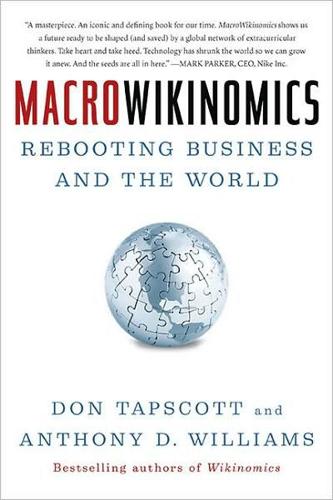
MacroWikinomics: Rebooting Business and the World
by
Don Tapscott
and
Anthony D. Williams
Published 28 Sep 2010
“A lot of what has been done to date is really just tinkering,” he says. “You sort of get in there and you hack around. You make some changes that are really unpredictable. You don’t know what’s going to happen.” Kelly argues that what genetic engineering really needs now is a set of standardized, interchangeable parts with standardized interfaces for assembly. A bit like Lego bricks, these components would be engineered so that the whole library of complementary BioBricks could fit seamlessly together in a more complex life form, perhaps something as complex as a human. If successful, it will pave the way for advances in medicine, agriculture, and energy we scarcely anticipate today.

Superintelligence: Paths, Dangers, Strategies
by
Nick Bostrom
Published 3 Jun 2014
Humans and human-like beings are complex; but artificial agents could have relatively simple architectures. Artificial agents could also have simple and explicitly characterized motivations. Furthermore, digital agents in general (whether emulations or artificial intelligences) are copyable: an affordance that may revolutionize management, much like interchangeable parts revolutionized manufacturing. These differences, together with the opportunity to work with agents that are initially powerless and to create institutional structures that use the various abovementioned control measures, might combine to make it possible to achieve particular institutional outcomes—such as a system that does not revolt—more reliably than if one were working with human beings under historical conditions.
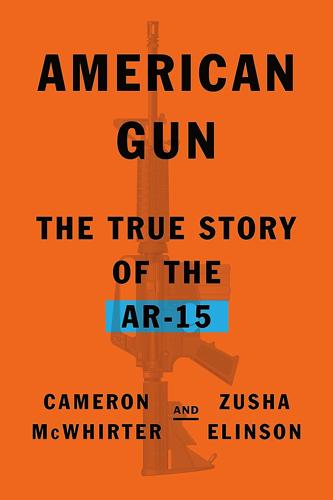
American Gun: The True Story of the AR-15
by
Cameron McWhirter
and
Zusha Elinson
Published 25 Sep 2023
They modified the gun for larger calibers more suitable for killing big game to appeal to hunters. Though hunters still didn’t buy many AR-15s, the companies’ effort lured popular outdoor magazines to write about their guns—free publicity. They broadened the appeal further by advertising one of the AR-15’s unique characteristics that came directly from Stoner’s original design—its interchangeable parts. They sold handguards, barrels, butt stocks, triggers, pistol grips, and many other parts, in different styles, materials, and colors. The ability to swap out parts created a whole new market for rifle add-ons. “I would compare it to custom cars and trucks, you can put mag wheels on it, you put hood ornaments on it—it’s the only rifle that was easily accessorize-able,” Luth said.

Aerotropolis
by
John D. Kasarda
and
Greg Lindsay
Published 2 Jan 2009
Today, it’s opening day at Wrigley, and tomorrow it will be spring break for Chinese students in Hong Kong, Iranian reunions in Dubai, and breadwinners flying home on weekends to Mumbai. The aerotropolis is a time machine. Time is the ultimately finite commodity setting the exchange rates for all the choices we make. Monstrous in size, infinitely scalable, and endlessly repetitive—machines for living with interchangeable parts—Kasarda’s aerotropoli are as foreign to us as O’Hare or Heathrow would have been to a passenger aboard a clipper ship. But they may be necessary to make these occasions as common and as memorable for families in Chennai as in Chicago, and they won’t be denied. Cubs win! The song “Go Cubs Go” echoes off the scoreboard as my mother and I sway back and forth, singing along.

Firepower: How Weapons Shaped Warfare
by
Paul Lockhart
Published 15 Mar 2021
They encouraged gun-founders to use cast iron instead of the more expensive cast bronze, and they promoted cast-iron shot over stone. By far their greatest achievement was the reduction in the number of types of cannon to a few standard models. In the fifteenth century, long before manufacturing introduced the notions of interchangeable parts and precision measurement, standardization was a pretty loose concept. Cannon were still individually crafted, as everything was. The Bureau brothers’ standardization was at a more basic level. Rather than leave the dimensions of cannon tubes up to the gun-founders, as had been the practice before, the Bureaus set rough universal measurements to which all makers had to adhere.

Slouching Towards Utopia: An Economic History of the Twentieth Century
by
J. Bradford Delong
Published 6 Apr 2020
Still others have stressed the crucial role played by natural resources in America’s industrial supremacy: in a world in which transport costs were still significant, a comparative advantage in natural resources became a comparative advantage in manufacturing. Others have stressed the links between a resource-rich economy and the “American system” of manufactures, relying on standardization, attempts to make interchangeable parts, heavy use of machinery—and wasteful use of natural resources, including both materials and energy. Finally, some have stressed the openness of American society, the ease with which individuals, ideas, capital, and initiative moved across the continent, and across other continents and back again.24 It was a system of opportunities in which a Hoover and a Tesla, not to mention a Westinghouse, an Edison, a professor going by the initials G.H.M., and a Homestead laborer, could feel hopeful and be ambitious.
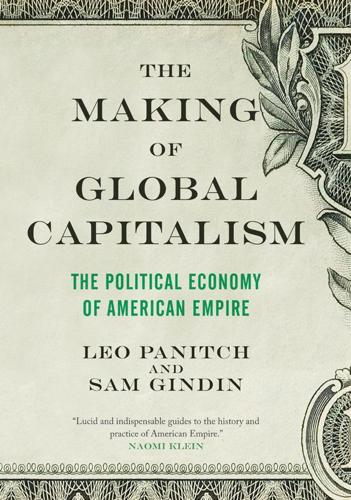
The Making of Global Capitalism
by
Leo Panitch
and
Sam Gindin
Published 8 Oct 2012
One was the system of protective tariffs that, in spite of Northern merchant and Southern planter opposition, was in place from the 1820s onwards. Another was the initiation and coordination by the federal government, acting through the War Department’s federal armory, of new production methods using interchangeable parts, precision gauges, specialist machines operated by relatively unskilled labor, and management control information systems—the “American System of Manufacturing” so much admired in Europe by the middle of the nineteenth century.11 After the defeat of the plantocracy in the Civil War, the vast inland domain stretching to the Pacific provided unparalleled space for industrial capitalism’s expansion in what was already emerging as the largest domestic market in the world.
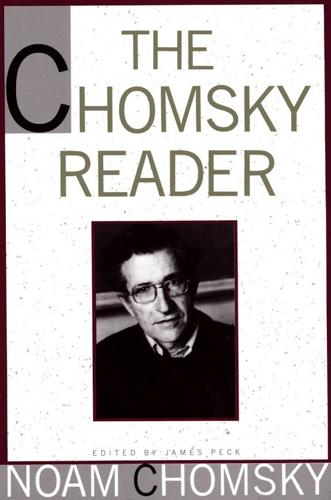
The Chomsky Reader
by
Noam Chomsky
Published 11 Sep 1987
Libertarian socialists, at least, looked forward to a “federation of free communities which shall be bound to one another by their common economic and social interests and arrange their affairs by mutual agreement and free contract,” “a free association of all productive forces based upon co-operative labor, which would have for its sole purpose the satisfying of the necessary requirements of every member of society.” In such a society, there is no reason why rewards should be contingent on some collection of personal attributes, however selected. Inequality of endowment is simply the human condition—a fact for which we may be thankful; one vision of hell is a society of interchangeable parts. It carries with it no implications concerning social rewards. In a socialist society, as envisioned by the authentic left, a central purpose will be that the necessary requirements of every member of society be satisfied. We may assume that these “necessary requirements” will be historically conditioned in part, and will develop along with the expansion and enrichment of material and intellectual culture.

Four Battlegrounds
by
Paul Scharre
Published 18 Jan 2023
The industrial revolution occurred in two waves: the first industrial revolution from around 1760 to 1830 and the second industrial revolution from around 1870 to 1914. Each revolution encompassed a set of mutually reinforcing technologies. In the first industrial revolution, steam engines, improvements in iron production, machine tools, and interchangeable parts, among other inventions, helped to fuel an explosion in economic productivity, leading to a wave of factory-building and urbanization. The second industrial revolution was enabled by the internal combustion engine, electrification, steel, and oil, and led to the construction of railways, telegraphs, automobiles, and more efficient factory production.

The Oil Kings: How the U.S., Iran, and Saudi Arabia Changed the Balance of Power in the Middle East
by
Andrew Scott Cooper
Published 8 Aug 2011
Farah Pahlavi was both queen and empress, the later title granted after the couple’s joint coronation in 1967. Asadollah Alam referred to her in his diaries as “HMQ” or “Her Majesty the Queen,” and the Shah usually referred to his wife as “the Queen.” In domestic and foreign media Farah’s titles, like her husband’s, tended to be interchangeable. Part One GLADIATOR 1969–1974 “If someone wraps a lion cub in silk, A little whelp, who’s not yet tasted milk, It keeps its nature still, and, once it’s grown, Fights off an elephant’s attack alone.” —Abolqasem Ferdowsi, The Persian Book of Kings Chapter One A KIND OF SUPER MAN “Your Majesty, you’re like the radiant sun Bestowing light and life on everyone: May greed and anger never touch your reign And may your enemies live wracked with pain.

Wired for War: The Robotics Revolution and Conflict in the 21st Century
by
P. W. Singer
Published 1 Jan 2010
The four had recently served in Iraq and had used their robots nearly every single day. The “Warfighters’ Perspectives” panel was the ultimate opportunity for customer feedback. For the next ninety minutes, the soldiers talked about their experiences with robots in Iraq and various suggestions they had for improvement. They asked for better batteries and interchangeable parts that could be fixed in the field, rather than always having to send a broken robot to the robot repair yard. Army staff sergeant Robert Shallbetter even offered feedback on the robots’ colors. Having robots painted black made them stand out as targets and the 140-degree heat in Iraq made them hard to even touch.

The Empathic Civilization: The Race to Global Consciousness in a World in Crisis
by
Jeremy Rifkin
Published 31 Dec 2009
Separating the alphabet into standardized units of type that were uniform, interchangeable, and reusable made print the first modern industrial process. With print, objects are uniformly spaced by positioning type on a chase and locking the chase onto a press. The composite type then can be reproduced over and over, each copy identical and indistinguishable from the original. Assembly, uniform and interchangeable parts, predictable positioning of objects in space, and mass production were the foundation stones of the industrial way of life. Print organizes phenomena in an orderly, rational, and objective way, and in so doing encourages linear, sequential, and causal ways of thinking. The very notion of “composing” one’s thoughts conjures up the idea of well-thought-out linear progression of ideas, one following the other in logical sequence, a mode of thought very different from that in oral cultures, where redundancy and discontinuity in thought often are the rules.

The Meritocracy Trap: How America's Foundational Myth Feeds Inequality, Dismantles the Middle Class, and Devours the Elite
by
Daniel Markovits
Published 14 Sep 2019
Between 1811 and 1911, Greater London grew from around 1 million to over 7 million inhabitants, Greater Manchester grew from around 400,000 to 2.5 million, Greater Birmingham from around 250,000 to 1.75 million, and Greater Liverpool from around 150,000 to 1.4 million. The central innovations of industrial production all targeted and exploited (and at the same time stimulated) this new labor source. The new style of production used standardized outputs, composed of interchangeable parts, to fragment previously integrated manufacture into discrete steps. This allowed unskilled workers, doing simple repetitive tasks coordinated by industrial engineers, to make goods whose production previously required the integrated efforts of a skilled artisan. Along the way, the innovations displaced older artisanal methods and the highly skilled workers who once deployed them.
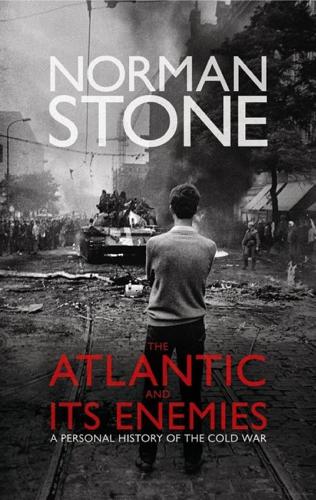
The Atlantic and Its Enemies: A History of the Cold War
by
Norman Stone
Published 15 Feb 2010
In the 1850s Sam Colt was able to assemble a first-class gun in thousands, because he made each part the same, to within a thirty-second of an inch to start with, and then a five-hundredth, so that they were interchangeable, and Linus Yale, of locks fame, goes back to that period. Machines were soon made with interchangeable parts, and the tools that produced these became an American specialty, keeping British war industries going in both of the world wars. Henry Ford famously transferred this to motor cars that were therefore cheap. Various explanations have been offered: unskilled immigrant labour, needing to be given simple and repetitive tasks within their capacity; expensive labour, putting pressure on firms to diminish their costs by use of machinery; practical education, such as was plentifully on offer; the peculiarly classless atmosphere in the USA, where ordinary workmen would co-operate on friendly terms with an owner when it came to reporting faults and taking an interest in machines, whereas elsewhere workmen regarded them as an enemy and in Britain were notoriously reluctant to accept them, because they would be tended by fewer workmen and might depress wage rates.
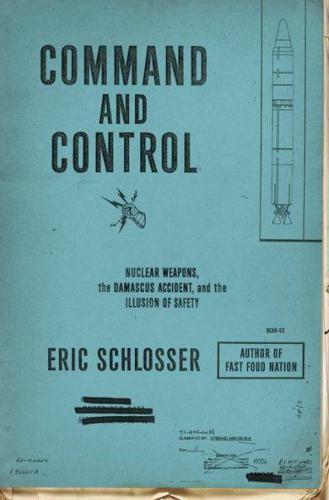
Command and Control: Nuclear Weapons, the Damascus Accident, and the Illusion ofSafety
by
Eric Schlosser
Published 16 Sep 2013
More important, the nuclear core was stored in the plane’s cockpit during takeoff and inserted through a trap door into the nose of the bomb, midflight. As long as the core was kept physically separate from the rest of the bomb, it was impossible for a plane crash to cause a nuclear explosion. The days of handmade nuclear weapons were over. At Sandia the Mark 4 was now being manufactured with standardized, interchangeable parts—and so was its replacement, the Mark 6, a lighter, sleeker weapon with a yield as much as ten times larger than that of the bomb that destroyed Hiroshima. Once a weapon was assembled at Tech Area II, it was shipped to Site Able, an AEC storage facility tunneled into the nearby Manzano Mountains, or to Site Baker in Killeen, Texas, or to Site Charlie in Clarksville, Tennessee.
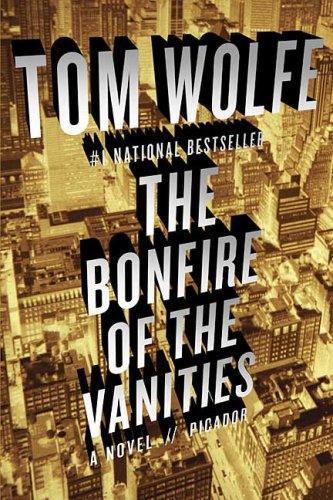
The Bonfire of the Vanities
by
Tom Wolfe
Published 4 Mar 2008
Lopwitz had felt like a fortunate little boy who had been invited to the home of a great man. Home. That was the ticket. The British, with that ever sure class instinct of theirs, realized that if a man was at the top in business, he should not have the standard business office, which made one look like an interchangeable part in a large mechanism. No, one should have an office that looked like the home of a nobleman, as much as to declare: “I, personally, am the lord, creator, and master of this great organization.” Lopwitz had ended up in a terrific fight with the tower’s owners and the management company that ran it for them and the city’s Building Department and Fire Department, and the construction of the flues and vents had cost $350,000, but he had finally had his way, and Sherman McCoy now stared reflectively into the mouth of that baronial hearth, fifty floors above Wall Street, off the bond trading floor of Pierce & Pierce.
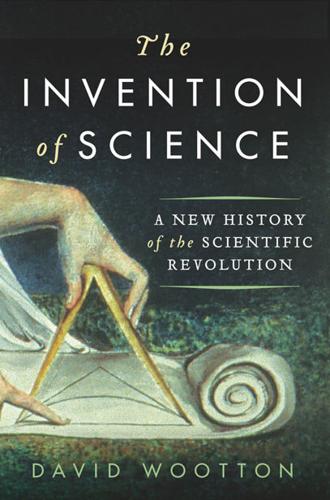
The Invention of Science: A New History of the Scientific Revolution
by
David Wootton
Published 7 Dec 2015
Brown, Jean Domenique Cassini and His World Map of 1696 (1941), 39, 47, 58–60; Brotton, A History of the World in Twelve Maps (2012), 306. 17. Pumfrey, ‘O tempora, O magnes!’ (1989); see also Waters, ‘Nautical Astronomy and the Problem of Longitude’ (1983). 18. Sobel, Longitude (1995). 19. Allen, The British Industrial Revolution (2009), 173. 20. Allen, The British Industrial Revolution (2009), 204–6. On the introduction of interchangeable parts, see Alder, ‘Making Things the Same’ (1998). 21. This line of argument is foreshadowed in Koyré, ‘Du monde de l’ à-peu-près à l’univers de la précision’ (1971), first published in 1948. 22. Landes, ‘Why Europe and the West?’ (2006). 23. Latin text of letter to Herwart von Hohenburg quoted in Koyré, The Astronomical Revolution (1973), 378; translation from Snobelen, ‘The Myth of the Clockwork Universe’ (2012), 177 n. 24.

The Rise and Fall of American Growth: The U.S. Standard of Living Since the Civil War (The Princeton Economic History of the Western World)
by
Robert J. Gordon
Published 12 Jan 2016
Nearly all the American machines did things that the world earnestly wished machines to do—stamp out nails, cut stone, mold candles—but with a neatness, dispatch, and tireless reliability that left other nations blinking…. Cyrus McCormick displayed a reaper that could do the work of 40 men…. Most exciting of all was Samuel Colt’s repeat-action revolver, which was not only marvelously lethal but made from interchangeable parts, a method of manufacture so distinctive that it became known as the American system.2 The upper classes of Britain and Europe viewed America with trepidation. One did not need multiplication tables to infer that with rapid population growth resulting from its high birth rate and unfettered immigration, the United States would soon have a population greater than that of any European nation.

Strategy: A History
by
Lawrence Freedman
Published 31 Oct 2013
“The Reengineering Revolution” took potentially valuable innovation and experimentation but added exaggerated promise and heightened expectation leading to “faddishness and failure.” The “time to trumpet change programs is after results are safely in the can.” Most seriously, the fad treated people as if they were “just so many bits and bytes, interchangable parts to be reengineered.” Dictums such as “Carry the wounded but shoot the stragglers” were hardly motivating, while young consultants with inflated salaries and even higher billing charges treated veteran employees with disdain. Whether or not this was a moment of historic change, employees were naturally inclined to think about protecting their own positions rather than enthuse about broad and expansive visions for the future of the company that could leave them without a job.
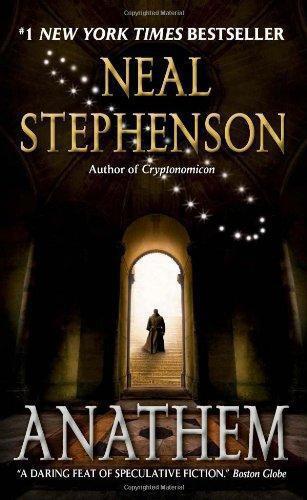
Anathem
by
Neal Stephenson
Published 25 Aug 2009
And that made him just as different from the people in the traffic jam as I was. So I looked with fascination at those people in their mobes, and tried to fathom what it would be like. Thousands of years ago, the work that people did had been broken down into jobs that were the same every day, in organizations where people were interchangeable parts. All of the story had been bled out of their lives. That was how it had to be; it was how you got a productive economy. But it would be easy to see a will at work behind this: not exactly an evil will, but a selfish will. The people who’d made the system thus were jealous, not of money and not of power but of story.

Eastern USA
by
Lonely Planet
Thanks to the industriousness of the citizenry, the Connecticut Yankee peddler became a fixture in early American society, traveling by wagon from town to town selling clocks and other manufactured gadgets. Connecticut etched a leading role in the Industrial Revolution when Eli Whitney built a New Haven factory in 1798 to produce firearms with interchangeable parts – the beginning of modern mass production. In 1810 America’s first insurance company opened in Hartford and by the 1870s the city boasted the highest per capita income in the USA. Two of America’s leading literary figures, Harriet Beecher Stowe (1811–96) and Mark Twain (1835–1910), were Hartford neighbors for 17 years.
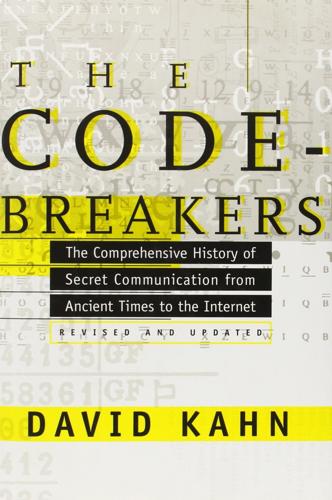
The Codebreakers: The Comprehensive History of Secret Communication From Ancient Times to the Internet
by
David Kahn
Published 1 Feb 1963
Colonel Decius Wadsworth, then 49, was a Yale graduate who twice quit the Army (once to seek his fortune in the fur trade) and twice rejoined when wars with France and Britain threatened; how and why he became interested in secret writing remains unknown. But his attraction to mechanical devices may well have fostered his friendship with Eli Whitney, whose cotton gin he admired and whose muskets with interchangeable parts he inspected and approved for use by the Army. When, in 1812, he became the first chief of ordnance of the U.S. Army, he again backed Whitney strongly. Illness forced him to resign this post and his commission in June of 1821, and Whitney, remembering, brought him to New Haven. Here Whitney could visit him daily and ensure his good care.

1,000 Places to See in the United States and Canada Before You Die, Updated Ed.
by
Patricia Schultz
Published 13 May 2007
Today, Harpers Ferry’s narrow streets are remarkably well preserved, with a history far more complex than a single event or individual. Not only did great men like George Washington, Robert E. Lee, and Abraham Lincoln pass this way, Harpers Ferry also witnessed the first industrial production of rifles using interchangeable parts; the first successful American railroad; the largest surrender of Federal troops during the Civil War (during which it changed hands eight times); and the education of former slaves in one of the nation’s first integrated schools. Try to book one of the three rooms at Jackson Rose, a 1795 redbrick B&B where West Point graduate and West Virginia native Colonel Thomas Jonathan Jackson (not yet the legend known as “Stonewall” for his cool-headed ability to hold a line under blistering fire) established his headquarters in April 1861.
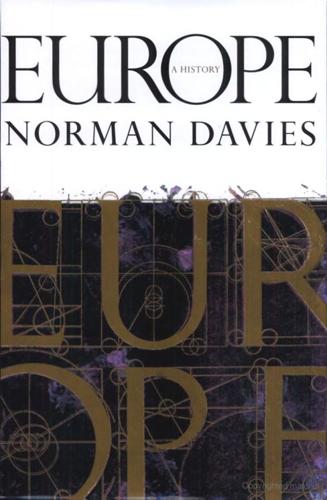
Europe: A History
by
Norman Davies
Published 1 Jan 1996
Like many inventions, it created an original process through the combination of several existing techniques, including those of the Roman wine-press, the goldsmith’s punch, and impressionable paper. Also, through the use of movable metal type cast in replica moulds, it saw the first application of ‘the theory of interchangeable parts’—one of the basic principles of a later machine age. It possessed the inestimable facility for the text of a book to be set up, edited, and corrected before being reproduced in thousands of identical copies. Gutenberg is probably best remembered for his 43-line and 36-line Bibles. But in some ways his printing of the Catholicon or ‘Book of Universal Knowledge’ represents a more distinctive milestone.

USA Travel Guide
by
Lonely, Planet
Thanks to the industriousness of the citizenry, the Connecticut Yankee peddler became a fixture in early American society, traveling by wagon from town to town selling clocks and other manufactured gadgets. Connecticut etched a leading role in the Industrial Revolution when Eli Whitney built a New Haven factory in 1798 to produce firearms with interchangeable parts – the beginning of modern mass production. In 1810 America’s first insurance company opened in Hartford and by the 1870s the city boasted the highest per capita income in the USA. Two of America’s leading literary figures, Harriet Beecher Stowe (1811–96) and Mark Twain (1835–1910), were Hartford neighbors for 17 years.